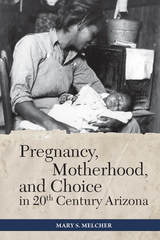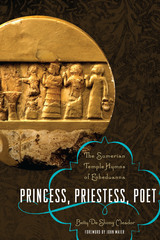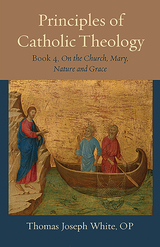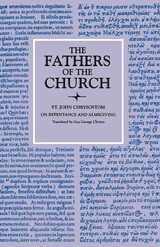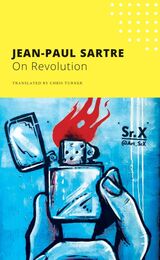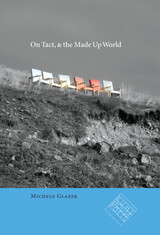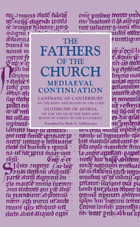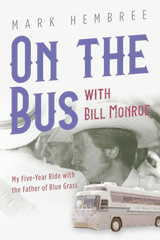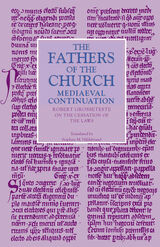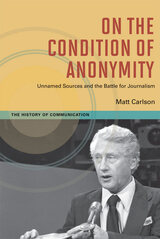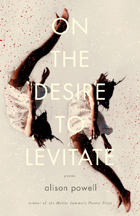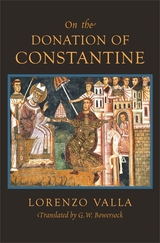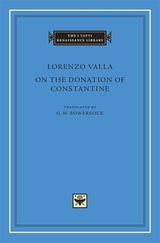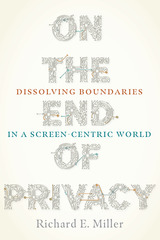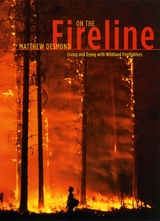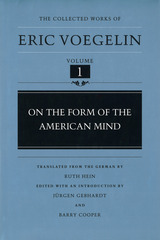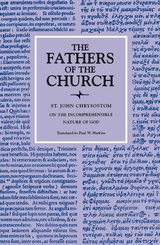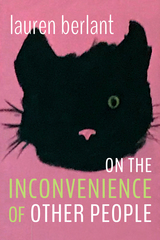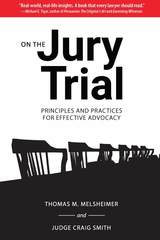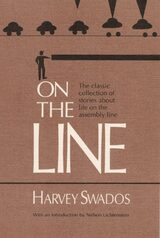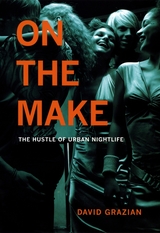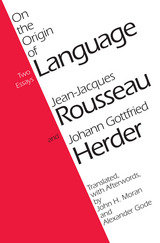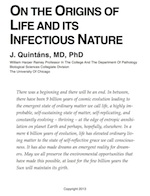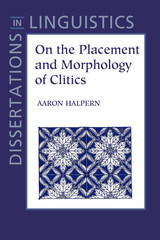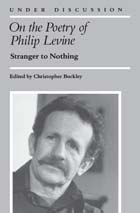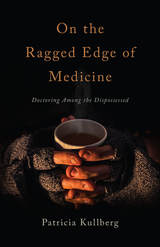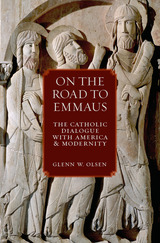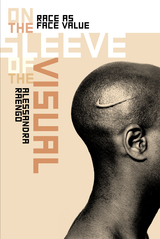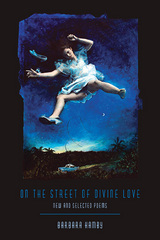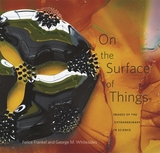On Repetition: Writing, Performance and Art
Edited by Eirini Kartsaki
Intellect Books, 2016 On Repetition aims to unpack the different uses and functions of repetition within contemporary performance, dance practices, craft, and writing. The collection, edited by Eirini Kartsaki, explores repetition in relation to intimacy, laughter, technology, familiarity, and fear—proposing a new vocabulary for understanding what is at stake in works that repeat. Drawing on psychoanalysis, philosophy, linguistics, sociology, and performance studies—and employing case studies from a range of practices—the essays presented here combine to form a unique interdisciplinary exploration of the functions of repetition in contemporary culture.
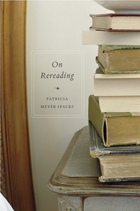 On Rereading
Patricia Meyer Spacks
Harvard University Press, 2013 After retiring from a lifetime of teaching literature, Patricia Meyer Spacks embarked on a year-long project of rereading dozens of novels: childhood favorites, fiction first encountered in young adulthood and never before revisited, books frequently reread, canonical works of literature she was supposed to have liked but didn’t, guilty pleasures (books she oughtn’t to have liked but did), and stories reread for fun vs. those read for the classroom. On Rereading records the sometimes surprising, always fascinating, results of her personal experiment.
Spacks addresses a number of intriguing questions raised by the purposeful act of rereading: Why do we reread novels when, in many instances, we can remember the plot? Why, for example, do some lovers of Jane Austen’s fiction reread her novels every year (or oftener)? Why do young children love to hear the same story read aloud every night at bedtime? And why, as adults, do we return to childhood favorites such as The Hobbit, Alice in Wonderland, and the Harry Potter novels? What pleasures does rereading bring? What psychological needs does it answer? What guilt does it induce when life is short and there are so many other things to do (and so many other books to read)? Rereading, Spacks discovers, helps us to make sense of ourselves. It brings us sharply in contact with how we, like the books we reread, have both changed and remained the same.
 On Rereading Chaucer
Howard Rollin Patch
Harvard University Press Years of thoughtful reading lie at the back of Howard Rollin Patch’s fresh and original study of one of the greatest geniuses in the whole history of English literature and the mediaeval world. Chaucer is thoroughly modern, especially in his sense of humor. An examination of his characters from the point of view of modern psychology reveals only the more clearly the closely wrought balance and symmetry of his work. Patch emphasizes his understanding of human beings and their drama, and suggests that his humor is based at least partly on wisdom and a sense of proportion. Although the poet's love of his fellow men and his acceptance of life hardly permit him to be fitted into the category of reformer, yet it is also clear that moral convictions and a moral aim lie behind everything he wrote. His gift as an artist, however, achieves high expression not merely in passages where there may be some point of social influence but also in those where the satiric edge can only be meant to reveal the ironies of life in general. One of the main excellences of the book is that it will send the reader back to Chaucer, to discover there a normal, healthy personality with a special delight for our own day and generation.
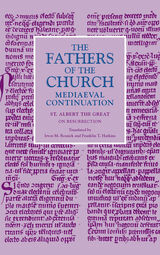 On Resurrection
St. Albert the Great
Catholic University of America Press, 2020 According to 1 Cor 15.44 and 1 Cor 15.52, the human body “is sown an animal body, [but] it will rise a spiritual body” and “the dead will rise again incorruptible, and we will be changed.” These passages prompted many questions: What is a spiritual body? How can a body become incorruptible? Where will the resurrected body be located? And, what will be the nature of its experience? Medieval theologians sought to answer such questions but encountered troubling paradoxes stemming from the conviction that the resurrected body will be an “impassible body” or constituted from “incorruptible matter.” By the thirteenth century the resurrection demanded increased attention from Church authorities, not only in response to certain popular heresies but also to calm heated debates at the University of Paris. William of Auvergne, Bishop of Paris, officially condemned ten errors in 1241 and in 1244, including the proposition that the blessed in the resurrected body will not see the divine essence. In 1270 Parisian Bishop Étienne Tempier condemned the view that God cannot grant incorruption to a corruptible body, and in 1277 he rejected propositions that a resurrected body does not return as numerically one and the same, and that God cannot grant perpetual existence to a mutable, corruptible body.
The Dominican scholar Albert the Great was drawn into the university debates in Paris in the 1240s and responded in the text translated here for the first time. In it, Albert considers the properties of resurrected bodies in relation to Aristotelian physics, treats the condition of souls and bodies in heaven, discusses the location and punishments of hell, purgatory, and limbo, and proposes a “limbo of infants” for unbaptized children. Albert’s On Resurrection not only shaped the understanding of Thomas Aquinas but also that of many other major thinkers.
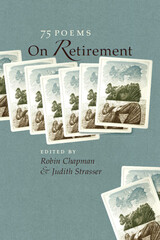 On Retirement: 75 Poems
Robin Chapman
University of Iowa Press, 2007 In the decade ahead, more than 80 million Americans will reach the age of retirement and face what Robin Chapman and Judith Strasser call “the unnerving question, What next?” Indeed, according to the Social Security Administration, the number of Americans sixty-five or older will nearly double between 2000 and 2030. As more people approach retirement, they too will wonder what lies ahead.
This superb collection includes poems by men and women ranging in age from their fifties to their eighties and hailing from different cities, regions, and countries. The entire range of emotions and literary perspectives is represented here, whether the specter of death in Doug Anderson’s “Sixty One” or a sly grin in Roger Pfingston’s “Retired.”
Each poet—whether retired or just contemplating retirement—greets the prospect of this new chapter of life differently. George Bilgere purchases the complete works of Verdi and extravagant silk shirts, while Denise Levertov contemplates life alone. Alicia Ostriker implores readers to “keep on fighting, keep up the good work,” and Alberto Ríos recalls a lost love. However we contemplate retirement, this volume will illuminate the careful thoughts of those who have faced these questions before us.
Contributors Include:
Werner Aspenstrom, Chana Bloch, Philip Booth, Hayden Carruth, Lucille Clifton, Ruth Daigon, Susan Elbe, Sam Hamill, Mark Irwin, klipschutz, Ted Kooser, Maxine Kumin, Richard Moore, Naomi Shihab Nye, Grace Paley, Robert Pinsky, Carol Potter, Ishmael Reed, Claudette Mork Sigg, Ronald Wallace
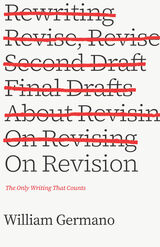 On Revision: The Only Writing That Counts
William Germano
University of Chicago Press, 2021 A trusted editor turns his attention to the most important part of writing: revision.
So you’ve just finished writing something? Congratulations! Now revise it. Because revision is about getting from good to better, and it’s only finished when you decide to stop. But where to begin? In On Revision, William Germano shows authors how to take on the most critical stage of writing anything: rewriting it.
For more than twenty years, thousands of writers have turned to Germano for his insider’s take on navigating the world of publishing. A professor, author, and veteran of the book industry, Germano knows what editors want and what writers need to know: Revising is not just correcting typos. Revising is about listening and seeing again. Revising is a rethinking of the principles from the ground up to understand why the writer is doing something, why they’re going somewhere, and why they’re taking the reader along with them.
On Revision steps back to take in the big picture, showing authors how to hear their own writing voice and how to reread their work as if they didn’t write it. On Revision will show you how to know when your writing is actually done—and, until it is, what you need to do to get it there.
On Revolution
Jean-Paul Sartre
Seagull Books, 2021 A two-part essay on the “myth” of revolution and the figure of the artist.
Iconic French novelist, playwright, and essayist Jean-Paul Sartre is widely recognized as one of the most important philosophers of the twentieth century, and his work has remained relevant and thought-provoking through the decades. The Seagull Sartre Library now presents some of his most incisive philosophical, cultural, and literary critical essays in twelve newly designed and affordable editions.
On Revolution consists of a long essay in two parts in which Sartre dwells upon the “myth” of revolution and goes on to analyze revolutionary ideas in fascism and, especially, Marxism. In the second essay, Sartre examines the figure of the artist and his conscience, especially in relation to communism.
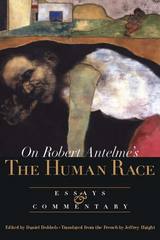 On Robert Antelme's The Human Race: Essays and Commentary
Robert Antelme
Northwestern University Press, 2003 Rescued in 1945 from Dachau—where François Mitterand, his onetime comrade in the resistance, recognized him among the thousands of quarantined prisoners—Robert Antelme set out to do what seemed "unimaginable," to describe not only his experience but the humanity of his captors. The result, The Human Race, was called by George Perec "the finest example in contemporary French writing of what literature can be."
In this volume, the extraordinary nature and extent of Robert Antelme's accomplishment, and of the reverberations he set in motion in French life and literature, finds eloquent expression. The pieces Antelme wrote for journals—including essays on "principles put to the test," man as the "basis of right," and the question of revenge—appear here alongside appreciations of The Human Race by authors from Perec to Maurice Blanchot to Sarah Kofman. Also included are Antelme's personal recollections and interviews with, among others, Dionys Mascolo (who brought Antelme back from Dachau), Marguerite Duras (Antelme's wife, who tells of his return from Germany), and Mitterand. Also available: Antelme's The Human Race
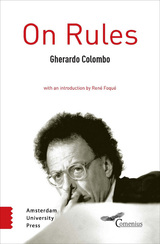 On Rules
Gherardo Colombo
Amsterdam University Press, 2017 Justice is simultaneously a practical and an ideal concept: when we think of justice, we refer to its day-to-day administration, involving police, lawyers, judges, and politicians—but we also refer to a larger ideal, a set of basic values that guide our attempts to live together and balance competing interests, obligations, and freedoms. If we lose sight of the practical, the ideal will fail—but if we forget the ideal, the practical becomes pointless.
On Rules is the culmination of decades of thinking about and working within the law as both an ideal and a realm of practical action. Gherardo Colombo brings to his rich philosophical analysis of the culture of justice thirty years of experience in the Italian judiciary, which saw him head up numerous important and sensitive commissions and inquiries. His exploration of the concept and application of rules of justice is powerful and clear: if we don’t root our experience in a fundamental respect for rules, we cannot have a functioning, just society.
 On Rules
Gherardo Colombo
Amsterdam University Press, 2015 Justice is simultaneously a practical and an ideal concept: when we think of justice, we refer to its day-to-day administration, involving police, lawyers, judges, and politicians-but we also refer to a larger ideal, a set of basic values that guide our attempts to live together and balance competing interests, obligations, and freedoms. If we lose sight of the practical, the ideal will fail-but if we forget the ideal, the practical becomes pointless.On Rules is the culmination of decades of thinking about and working within the law as both ideal and realm of practical action. Gherardo Colombo brings to his rich philosophical analysis of the culture of justice thirty years of experience in the Italian judiciary, which saw him head up numerous important and sensitive commissions and inquiries. His exploration of the concept and application of rules of justice is powerful and clear: if we don't root our experience in a fundamental respect for rules, we cannot have a functioning, just society.
 On Sacred Grounds: Culture, Society, Politics, and the Formation of the Cult of Confucius
Thomas A. Wilson
Harvard University Press, 2002 The sacred landscape of imperial China was dotted with Buddhist monasteries, Daoist temples, shrines to local deities, and the altars of the mandarinate. Prominent among the official shrines were the temples in every capital throughout the empire devoted to the veneration of Confucius. Twice a year members of the educated elite and officials in each area gathered to offer sacrifices to Confucius, his disciples, and the major scholars of the Confucian tradition.
The worship of Confucius is one of the least understood aspects of Confucianism, even though the temple and the cult were highly visible signs of Confucianism's existence in imperial China. To many modern observers of traditional China, the temple cult is difficult to reconcile with the image of Confucianism as an ethical, humanistic, rational philosophy. The nine essays in this book are an attempt to recover the meaning and significance of the religious side of Confucianism. Among other subjects, the authors analyze the social, cultural, and political meaning attached to the cult; its history; the legends, images, and rituals associated with the worship of Confucius; the power of the descendants of Confucius, the main temple in the birthplace of Confucius; and the contemporary fate of temples to Confucius.
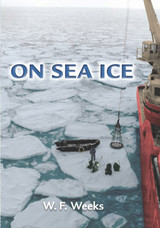 On Sea Ice
W. F. Weeks
University of Alaska Press, 2010 Covering more than seven percent of the earth’s surface, sea ice is crucial to the functioning of the biosphere—and is a key component in our attempts to understand and combat climate change. With On Sea Ice, geophysicist W. F. Weeks delivers a natural history of sea ice, a fully comprehensive and up-to-date account of our knowledge of its creation, change, and function.
The volume begins with the earliest recorded observations of sea ice, from 350 BC, but the majority of its information is drawn from the period after 1950, when detailed study of sea ice became widespread. Weeks delves into both micro-level characteristics—internal structure, component properties, and phase relations—and the macro-level nature of sea ice, such as salinity, growth, and decay. He also explains the mechanics of ice pack drift and the recently observed changes in ice extent and thickness.
An unparalleled account of a natural phenomenon that will be of increasing importance as the earth’s temperature rises, On Sea Ice will unquestionably be the standard for years to come.
 On Second Thought
James Gray
University of Minnesota Press, 1946
On Second Thought was first published in 1946.NOW book editor of the Chicago Daily News, James Gray has during the past two decades interpreted the literary scene for Midwest readers in entertaining daily columns for the St. Paul Pioneer Press and Dispatch.ON SECOND THOUGHT rescues much of his best work from the oblivion of newsprint. It combines the opinions thrown off at white heat to meet five o’clock deadlines and those born of quiet contemplation and reflection over the years. The result is a book in which the critic emerges as a creative artist and the journalist as a discerning historian of literature.James Gray’s writing is good reading and no matter how seriously and energetically he may be tracing the course of a writer’s universality and talent, he cannot resist the delight of an apt, sparkling, or sagacious phrase. Nor can the reader resist a chuckle of appreciation and pleasure in the author’s own poised prose.The reader gets a sense of immediacy from James Gray’s compact style, but also feels that here is a critic we can trust - one who probes keenly and wisely, one who lucidly traces the unobserved currents connecting headline to headline.ON SECOND THOUGHT is an extraordinarily complete and vivid panorama of contemporary literature and of the writers who have created it. Over 50 modern authors are here reviewed, from our American Nobel prize winners, Sinclair Lewis, Eugene O’Neill, and Pearl Buck, and the “garrulous” English uncles, Arnold Bennett, George Bernard Shaw, H. G. Wells, and John Galsworthy, to the “half-gods on the threshold,” Feike Feikema, Ann Chidester, Carson McCullers, and Wallace Stegner.Author in his own right of both fiction and nonfiction, Gray has also written many short plays for little-theater groups and has served as consultant for Warner Brothers. His published titles include the novels Shoulder the Sky, Wake and Remember, Wings of Great Desire, and Vagabond Path. He has contributed The Illinois to the “Rivers of America,” and Pine, Stream, and Prairie to “The American Scene.” ON SECOND THOUGHT is his first volume of literary criticism.
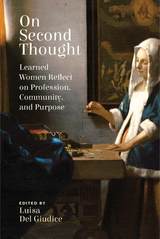 On Second Thought: Learned Women Reflect on Profession, Community, and Purpose
Luisa Del Giudice
University of Utah Press, 2017 In these dynamic essays, thirteen wise women review their lives for meaning and purpose, striving to integrate both head and heart. They consider how their spiritual paradigms have shaped their vocations as teachers, scholars, guides, mentors, and advocates and how these roles have been integral to their life’s work, not merely to their work life. With courageous and insightful testimonies they narrate the intersecting relationships of work, family, students, patients, and colleagues, weaving them together rather than compartmentalizing them. Challenges inside and outside the academy and other professional settings are revealed, to tell of suffering and transformation, to tally hard-earned life lessons and to share wisdom achieved.
Lives and words are gathered and generously shared, allowing these women to make sense of their own lives while mentoring a wider circle of younger and older readers alike. These “travel tales” of journeys through knowledge and self-knowledge will inform, challenge, surprise, entertain, and inspire.
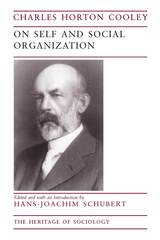 On Self and Social Organization
Charles Horton Cooley
University of Chicago Press, 1998 It is almost impossible now to imagine the prestigious position Charles Horton Cooley (1864-1929) held within the founding generation of American sociologists. His seminal work on human communication, social organization, and public opinion stimulated and guided much of early American sociological thought.
Cooley's work relating self and community is now more relevant than ever to the problems of understanding and directing modern democratic societies. Cooley applied the ideas of pragmatism to developing a systematic way of approaching social action, social change, and social order; he used these interrelated theories to analyze the social problems and cultural crises of the age. According to Cooley, social change is a fragile, interactive process that, due to constantly arising problems of action, requires ongoing scrutiny by the public. This collection of Cooley's best work is an important contribution not only to the history of ideas—especially to the origin of modern sociological theory— but also to the current public debate on civil society, community, and democracy.
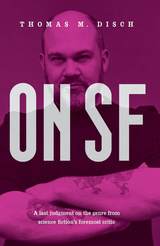 On SF
Thomas M. Disch
University of Michigan Press, 2005 Praise for Thomas Disch:
"One of the most remarkably talented writers around."
---Washington Post Book World
"[Disch] is without doubt one of the really bright lights on the American SF scene."
---Fantasy and Science Fiction
This collection by the much-loved and lauded science-fiction writer Thomas Disch spans twenty-five years of his career, during which he has supplemented his creative output with reviews and critical essays in publications as diverse as the Nation, the New York Times Book Review, the Atlantic Monthly, and Twilight Zone.
Disch's perspectives on his genre are skeptical, novel, and often incendiary. The volume's opening essay, for example, characterizes writers of science fiction as "the provincials of literature." Other essays explore science fiction's roots-Poe, Bradbury, Clarke, Asimov, Vonnegut-as well as modern practitioners such as Stephen King, Philip Dick, Robert Heinlein, L. Ron Hubbard, and William Gibson.
Disch entertains and provokes with essays on UFOs, Science Fiction as a Church, and Newt Gingrich's Futurist Brain Trust. Close Encounters of the Third Kind and Madame Blavatsky also get the Disch treatment. Throughout, the writing is lively, agile, and irreverent, exhibiting an incisive honesty that is undiluted by Disch's own attachments as a sci-fi practitioner. On SF will appeal equally to lovers of science fiction and connoisseurs of the finest critical prose.
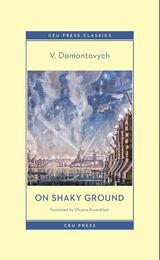 On Shaky Ground
V. Domontovych
Central European University Press, 2024 On Shaky Ground is a modernist novel written in the late 1930s and early 1940s and was originally published in Nazi occupied Kharkiv in 1942. One of the best examples of intellectual fiction of the time, the work summarizes the struggles of the Ukrainian intelligentsia in the late 1920s and early 1930s, when totalitarian reality, together with rampant industrialization, started to affect everyday life. V. Domontovych is the pen name of Viktor Petrov, a historian and archaeologist, a representative of neoclassicism in Ukrainian literature. The novel follows the trajectory of art historian, Rostyslav Mykhailovych, who goes on a work trip from the capital city of Kharkiv to provincial Katerynoslav (today Dnipro), the place where he spent his childhood. In the late 1920s, a section of the Dnipro River became the place of a major industrial project, the construction of the largest hydroelectric station in Ukraine (Dniprelstan), which flooded the rapids over the river and led to serious ecological and social changes in the region. While the main goal of the trip is to save an old church from being turned into a museum, the journey becomes a philosophical reflection on dislocation and loss of connection with one’s birthplace, traditions, religion and more globally, a sense of security.
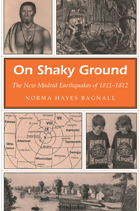 On Shaky Ground: The New Madrid Earthquakes of 1811-1812
Norma Hayes Bagnall
University of Missouri Press, 1996 Although most Americans associate earthquakes with California, the tremors that shook the Mississippi valley in southeast Missouri from December 16, 1811, through February 7, 1812, are among the most violent quakes to hit the North American continent in recorded history. Collectively known as the New Madrid earthquakes, these quakes affected more than 1 million square miles. By comparison, the 1906 San Francisco earthquake affected only 60,000 square miles, less than one-sixteenth the area of the New Madrid earthquakes. Scientists believe that each of the three greatest tremors would have measured more than 8.0 on the Richter scale, had that measuring device been in place in 1811. Vibrations were felt from the Rocky Mountains to the Atlantic coast and from Mexico to Canada. The quake zone was in constant movement during this period. Five towns in three states disappeared, islands vanished in the Mississippi River, lakes formed where there had been none before, and the river flowed backward for a brief period. Providing eyewitness accounts from people both on the land and on the river, Bagnall captures the fears of the residents through their tales about the smells and dark vapors that filled the air, the cries of the people, the bawling of animals, and the constant roar of the river and its collapsing banks. On Shaky Ground also traces the history of the founding of New Madrid and considers the impact of the earthquakes on population and land in southeast Missouri. Predictions for future earthquakes along the New Madrid fault, as well as instructions on preparing for and surviving a quake, are also included. Informative, clearly written, and well illustrated, On Shaky Ground will be of interest to all general readers, especially those interested in earthquakes or Missouri history.
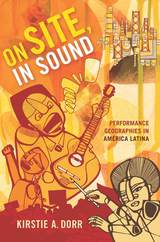 On Site, In Sound: Performance Geographies in América Latina
Kirstie A. Dorr
Duke University Press, 2018 In On Site, In Sound Kirstie A. Dorr examines the spatiality of sound and the ways in which the sonic is bound up in perceptions and constructions of geographic space. Focusing on the hemispheric circulation of South American musical cultures, Dorr shows how sonic production and spatial formation are mutually constitutive, thereby pointing to how people can use music and sound to challenge and transform dominant conceptions and configurations of place. Whether tracing how the evolution of the Peruvian folk song "El Condor Pasa" redefined the boundaries between national/international and rural/urban, or how a pan-Latin American performance center in San Francisco provided a venue through which to challenge gentrification, Dorr highlights how South American musicians and activists created new and alternative networks of cultural exchange and geopolitical belonging throughout the hemisphere. In linking geography with musical sound, Dorr demonstrates that place is more than the location where sound is produced and circulated; it is a constructed and contested domain through which social actors exert political influence.
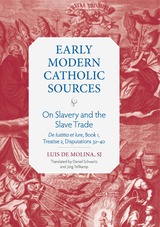 On Slavery and the Slave Trade: De Iustitia et lure, Book 1, Treatise 2, Disputations 32-40
Luis De Molina
Catholic University of America Press, 2023 In his monumental On Justice and Rights, the Jesuit Luis de Molina (1535-1600) discussed the legal and ethical aspects of the Portuguese trade in African and Asian enslaved persons. Molina surveys, develops, and problematizes the criteria necessary for the legitimate possession, sale, and purchase of human freedom. He insists that, even under legally valid slavery, persons who have sold or lost their freedom have inalienable rights as human beings, such as the freedom to make contracts, to marry, and even, under certain circumstances, to sue their owners in court. Molina also devotes attention to the ways in which slavery could be ended and whether and under what circumstances slaves had the right to escape from their owners. Well informed about the political structures and customs of many peoples in Africa, as well as Japan, China, and India, Molina paints a vivid and detailed picture of Portuguese trade. He gives specific accounts of the origins and development of the slave trade, region by region, and of the nature of the relationship between local rulers and the Portuguese kingdom. In doing so, he carefully describes the deception, coercion, and general indifference that pervades this trade regarding the rights to freedom of these people. It also attempts to identify the political, ecclesiastical, and market agents involved in this great injustice and their varying degrees of culpability. While Molina does not condemn slavery as a legal institution, the deeply flawed and even immoral behavior of sellers, buyers, regulators, and political rulers both in Portugal and in the slave-supplying regions that Molina denounces casts a heavy shadow on the morality of the trade.
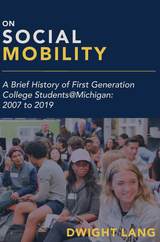 On Social Mobility: A Brief History of First-Generation College Students@Michigan: 2007 to 2019
Dwight Lang
Michigan Publishing, 2019 In On Social Mobility: A Brief History of First Generation College Students@Michigan: 2007-2019 Dwight Lang examines experiences and conditions of student upward mobility in higher education, in general, and on one public, selective college campus: The University of Michigan, Ann Arbor. He documents the origins and growth of an undergraduate group for students who are first in their families to attend and graduate from college. Starting in 2007 we see early years of the group’s establishment in the Department of Sociology. As First-gens@Michigan evolves over the next decade we better understand how a grassroots, student movement helps inspire a university to publicly acknowledge the complexities of social class heritage and diversity. On Social Mobility explores various institutional changes that eventually lead to the establishment of a new student center: First Generation Student Gateway.
Lang describes how working and lower class students openly acknowledge and struggle with challenging experiences on a predominantly middle and upper middle class campus. We appreciate how first generation students are risk takers, boundary crosser, and successful social class immigrants. Resourceful first-gen efforts become the basis of connection and community as students begin their social mobility journeys. Overtime a public story emerges: stories making the invisible visible; stories of courage and persistence; stories of structural changes; a thoughtful student movement that is hard to ignore. We come to better understand the power of shared determination.
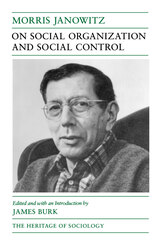 On Social Organization and Social Control
Morris Janowitz
University of Chicago Press, 1991 In the four decades following the end of World War II, Morris Janowitz (1919-88) published major works in macrosociology, urban and political sociology, race and ethnic relations, and the study of armed forces and society. His research was deeply rooted in the traditions of philosophical pragmatism and the Chicago school of sociology, influences which led him to reject grand theories and mechanistic explanations of social life. Yet he remained confident in the capacity of sociological reason to come to grips with central aspects of the human condition. On the basis of his studies, Janowitz came to believe that the transition from early to advanced industrial society radically altered institutional organization to make democratic social control more difficult, though not impossible, to achieve. The task of his "pragmatic sociology" was to identify fundamental trends in the social organization of industrial societies, to indicate their substantive implications for social control, and to clarify realistic alternatives for institution building which would strengthen the prospects for maintaining liberal democratic regimes.
In this volume, James Burk selects from Janowitz's scholarly writings to provide a comprehensive overview of his wide-ranging interests. Organized to demonstrate the common logic of inquiry and substantive unity of Janowitz's contribution to several subfields of sociology, the collection includes analyses of the concept of social control, ethnic intolerance and hostility, citizenship in Western societies, models for urban education, and the professionalization of military elites. Burk provides a richly detailed, critical account of Janowitz's intellectual development, placing his writings in historical context and showing their continuing relevance for sociological research. Useful to both students and specialists, the volume is an important source for the ideas and methods of one of sociology's leading figures.
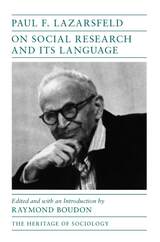 On Social Research and Its Language
Paul F. Lazarsfeld
University of Chicago Press, 1993 Without Paul F. Lazarsfeld the social sciences would not be what they are today. In his ground-breaking work on unemployment, voting, consumer behavior, and social influence, among other subjects, his methodological emphasis on vigorously controlled scientific language and structures transformed social research worldwide.
Lazarsfeld's systematic criticism of observational, conceptual, and inferential procedures in sociology led to the the formation of universally applied observational and analytical techniques, such as the panel design of observation and contextual and multivariate analysis. His methodology for empirical social research had a profound effect on all the social sciences.
The eighteen essays in On Social Research and Its Language illustrate the diversity of Lazarsfeld's substantive, methodological, and organizational interests. Spanning the years 1933 to 1972, they encompass his own works of social research, as well as writings on methodology and the history and sociology of social research. Articles on methodology—observing, classifying and building typologies, analyzing the relations between variables, qualitative analysis, and macrosociology—form the bulk of the book. In addition, Raymond Boudon provides a revealing biography of Lazarsfeld and his influence on sociology.
These classic writings by a formative figure of modern social science will be an indispensable reference for scholars across the historical and social science disciplines.
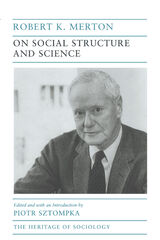 On Social Structure and Science
Robert K. Merton
University of Chicago Press, 1996 Robert K. Merton is unarguably one of the most influential sociologists of his time. A figure whose wide-ranging theoretical and methodological contributions have become fundamental to the field, Merton is best known for introducing such concepts and procedures as unanticipated consequences, self-fulfilling prophecies, focused group interviews, middle-range theory, opportunity structure, and analytic paradigms.
This definitive compilation encompasses the breadth and brilliance of his works, from the earliest to the most recent. Merton's foundational writings on social structure and process, on the sociology of science and knowledge, and on the discipline and trajectory of sociology itself are all powerfully represented, as are his autobiographical insights in a fascinating coda. Anchored by Piotr Sztompka's contextualizing introduction, Merton's vast oeuvre emerges as a dynamic and profoundly coherent system of thought, a constant source of vitality and renewal for present and future sociology.
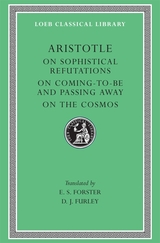 On Sophistical Refutations. On Coming-To-Be and Passing Away. On the Cosmos
Aristotle
Harvard University Press Fallacies, contraries, consistencies.
Aristotle, great Greek philosopher, researcher, reasoner, and writer, born at Stagirus in 384 BC, was the son of a physician. He studied under Plato at Athens and taught there (367–347); subsequently he spent three years at the court of a former pupil in Asia Minor. After some time at Mitylene, in 343–342 he was appointed by King Philip of Macedon to be tutor of his teen-aged son Alexander. After Philip’s death in 336, Aristotle became head of his own school (of “Peripatetics”), the Lyceum at Athens. Because of anti-Macedonian feeling there after Alexander’s death in 323, he withdrew to Chalcis in Euboea, where he died in 322.
Nearly all the works Aristotle prepared for publication are lost; the priceless ones extant are lecture-materials, notes, and memoranda (some are spurious). They can be categorized as follows:
I Practical: Nicomachean Ethics; Great Ethics (Magna Moralia); Eudemian Ethics; Politics; Economics (on the good of the family); On Virtues and Vices.
II Logical: Categories; Analytics (Prior and Posterior); Interpretation; Refutations used by Sophists; Topica.
III Physical: Twenty-six works (some suspect) including astronomy, generation and destruction, the senses, memory, sleep, dreams, life, facts about animals, etc.
IV Metaphysics: on being as being.
V Art: Rhetoric and Poetics.
VI Other works including the Constitution of Athens; more works also of doubtful authorship.
VII Fragments of various works such as dialogues on philosophy and literature; and of treatises on rhetoric, politics, and metaphysics.
The Loeb Classical Library edition of Aristotle is in twenty-three volumes.
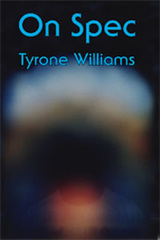 On Spec
Tyrone Williams
Omnidawn, 2007 Tyrone Williams reveals that every act of communication is a speculation, and that the spectacles we must use to see and assess it—those of our own particular condition and conditioning—are never without qualifying contour and coloration. Williams is a keen observer of the distortions of such lenses, as the titles of the two sections of this collection suggest—first is an “Eshuneutics” (interpretation purportedly infused with an Eshu’s sensibility). But the trickster’s eye can turn to mock even its own powers of analysis, as Williams deftly demonstrates by calling the second section “Pseudo-eshuneutics.” While the issues that Williams confronts come directly from an attempt say what it might mean to understand aspects of the African American condition of diaspora in the United States, these poems also implicate and illuminate the speculative enterprise that we each venture into whenever we attempt to articulate what we see and what we believe about it. At once immediately readable, intensely meditative, and brilliantly braced with philosophical reference, these tours through our human need to speak, and to understand, travel beyond the boundaries that constrain most poetry collections. Poems, plays, plays upon the making of such genre distinctions, are only some of the locations one will visit in these pages.
On Stage: The Theatrical Dimension of Video Image
Mathilde Roman
Intellect Books, 2016 In On Stage, Mathilde Roman explores the resonances that fields of theater—stage, décor, space, gaze, and more—have in the practice of video arts. Using these notions of theater both as points of reference and as a prism through which video installation can be approached, Roman is able to concentrate on a number of questions often overlooked by art historians, theorists, and critics, but offering different points of view. These include questions of exhibition architecture, display, viewer experience, temporality, and the importance of the gaze. Each chapter is articulated around analyses of video installations created by artists of different generations, from Michael Snow to Maïder Fortuné, and Dan Graham to Laurent Grasso. With a preface by Mieke Bal, On Stage is an important contribution to the fields of art, history, and film studies.
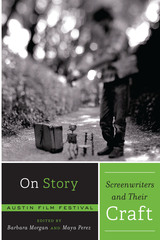 On Story - Screenwriters and Their Craft
Austin Film Festival
University of Texas Press, 2013 Austin Film Festival (AFF) is the first organization of its kind to focus on the writer’s creative contribution to film. Its annual Film Festival and Conference offers screenings, panels, workshops, and roundtable discussions that help new writers and filmmakers connect with mentors and gain advice and insight from masters, as well as refreshing veterans with new ideas. To extend the Festival’s reach, AFF produces On Story, a television series currently airing on PBS-affiliated stations and streaming online that presents footage of high-caliber artists talking candidly and provocatively about the art and craft of screenwriting and filmmaking, often using examples from their own films. This book distills the advice of renowned, award-winning screenwriters who have appeared on On Story, including John Lee Hancock, Peter Hedges, Lawrence Kasdan, Whit Stillman, Robin Swicord, and Randall Wallace. In their own lively words and stories transcribed from interviews and panel discussions, they cover the entire development of a screenplay, from inspiration, story, process, structure, characters, and dialogue to rewriting and collaboration. Their advice is fresh, practical, and proven—these writers know how to tell a story on screen. Enjoy this collection of ideas and use it to jumpstart your own screenwriting career.
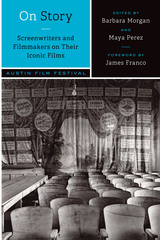 On Story—Screenwriters and Filmmakers on Their Iconic Films
Austin Film Festival, Edited by Barbara Morgan and Maya Perez
University of Texas Press, 2016 “On Story is film school in a box, a lifetime’s worth of filmmaking knowledge squeezed into half-hour packages.”
—Kenneth Turan, film critic for the Los Angeles Times Austin Film Festival (AFF) is the first organization focused on the writer’s creative contribution to film. Its annual Film Festival and Conference offers screenings, panels, workshops, and roundtable discussions that help new writers and filmmakers connect with mentors and gain advice and insight from masters, as well as refreshing veterans with new ideas. To extend the festival’s reach, AFF produces On Story, a television series currently airing on PBS-affiliated stations and streaming online that presents footage of high-caliber artists talking candidly and provocatively about the art and craft of screenwriting and filmmaking, often using examples from their own films. On Story—Screenwriters and Filmmakers on Their Iconic Films presents renowned, award-winning screenwriters and filmmakers discussing their careers and the stories behind the production of their iconic films such as L.A. Confidential, Thelma & Louise, Groundhog Day, Guardians of the Galaxy, The Silence of the Lambs, In the Name of the Father, Apollo 13, and more. In their own lively words transcribed from interviews and panel discussions, Ron Howard, Callie Khouri, Jonathan Demme, Ted Tally, Jenny Lumet, Harold Ramis, and others talk about creating stories that resonate with one’s life experiences or topical social issues, as well as how to create appealing characters and bring them to life. Their insights, production tales, and fresh, practical, and proven advice make this book ideal for film lovers, screenwriting students, and filmmakers and screenwriters seeking inspiration.
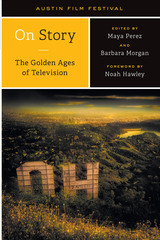 On Story—The Golden Ages of Television
Edited by Maya Perez and Barbara Morgan; foreword by Noah Hawley
University of Texas Press, 2018 “On Story is film school in a box, a lifetime’s worth of filmmaking knowledge squeezed into half-hour packages.”
—Kenneth Turan, film critic for the Los Angeles Times Austin Film Festival (AFF) is the first organization to focus on writers’ creative contributions to film and television. Its annual Film Festival and Conference offers screenings, panels, workshops, and roundtable discussions that help new writers and filmmakers connect with mentors and gain advice and insight from masters, as well as reinvigorate veterans with new ideas. To extend the Festival’s reach, AFF produces On Story, a television series currently airing on PBS-affiliated stations and streaming online that presents high-caliber artists talking candidly and provocatively about the art and craft of screenwriting and filmmaking, often using examples from their own work. On Story—The Golden Ages of Television explores the transformation of television’s narrative content over the past several decades through interviews with some of TV’s best creators and writers, including Garry Shandling (The Larry Sanders Show), Carl Reiner (The Dick Van Dyke Show), Issa Rae (Insecure), Vince Gilligan (Breaking Bad), Greg Daniels (The Office), Paula Pell (Saturday Night Live), Noah Hawley (Fargo), Liz Meriwether (New Girl), David Chase (The Sopranos), Alan Yang (Master of None), Marta Kauffman (Friends), Jenji Kohan (Orange Is the New Black), and many more. Their insights, behind-the-scenes looks at the creative process, production tales, responses to audiences’ reactions, and observations on how both TV narratives and the industry have changed make this book ideal for TV lovers, pop culture fans, students taking screenwriting courses, and filmmakers and writers seeking information and inspiration.
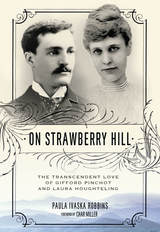 On Strawberry Hill: The Transcendent Love of Gifford Pinchot and Laura Houghteling
Paula Ivaska Robbins
University of Alabama Press, 2017 While not a biography of legendary American forester and conservationist Gifford Pinchot, On Strawberry Hill: The Transcendent Love of Gifford Pinchot and Laura Houghteling explores a vital and transformative facet of his personal life that, until now, has remained relatively unknown.
At its core, Paula Ivaska Robbins’s On Strawberry Hill: The Transcendent Love of Gifford Pinchot and Laura Houghteling is a human interest story that cuts a neat slice across nineteenth-century America by bringing into juxtaposition a wide array of topics germane to the period—the national fascination with spiritualism, the death scourge that was tuberculosis, the rise of sanitariums and tourism in the southern highlands, the expansion of railroad travel, the rage for public parklands and playgrounds, and the development of professional forestry and green preservation―all through the very personal love story of two young blue bloods.
Born into a wealthy New York family, Gifford Pinchot (1865–1946) served two terms as Pennsylvania’s governor and was the first chief of the US Forest Service, which today manages 192 million acres across the country. Pinchot also created the Society of American Foresters, the organization that oversees his chosen profession, and the Yale School of Forestry and Environmental Studies, the oldest forestry school in America. Ultimately, he and his friend President Theodore Roosevelt made forestry the focus of a national land conservation movement.
But before these accomplishments, Gifford Pinchot fell in love with Laura Houghteling, daughter of the head of the Chicago Board of Trade, while she recuperated from “consumption” at Strawberry Hill, the family retreat in Asheville, North Carolina. In his twenties at the time and still a budding forester, Pinchot was working just across the French Broad River at George Vanderbilt’s great undertaking, the Biltmore Estate, when the young couple’s relationship blossomed. Although Laura would eventually succumb to the disease, their brief romance left an indelible mark on Gifford, who recorded his ongoing relationship, and mental conversations, with Laura in his daily diary entries long after her death. He steadfastly remained a bachelor for twenty years while accomplishing the major highlights of his career.
This poignant book focuses on that phenomenon of devotion and inspiration, providing a unique window into the private practice of spiritualism in the context of Victorian mores, while offering new perspectives on Pinchot and early American forestry. In addition, preeminent Pinchot biographer Char Miller contributes an excellent foreword.
 On Strike for Respect: The Clerical and Technical Workers' Strike at Yale University, 1984-85
Toni Gilpin, Gary Isaac, Dan Letwin, and Jack McKivigan
University of Illinois Press, 1995 It is we who push the papers, put the paychecks in the mail;
It is we who type the letters, mind the office without fail.
And until we get a contract, it is we who'll shut down Yale, For the union
makes us strong.
(To the tune of "John Brown's Body")
"Must reading for anyone who wants to learn what a revitalized labor
movement would look like." -- Labor Notes
"A textbook on solidarity unionism." -- Staughton Lynd
"One of the very best books on labor in the 1970s and 80s."
-- Dana Frank, University of California at Santa Cruz
"There are very few case studies in recent labor history as readable
and provocative as this one." -- Karen Sawislak, Stanford University
On Strike for Respect is a lively account of the 1984-85 strike
by clerical and technical workers at Yale University. Members of Local
34, with a strong female majority, mobilized themselves and the public,
breathing new life into the labor movement as they fought for and won
substantial gains. A short update on current conditions concludes this
volume.
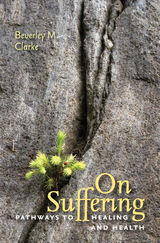 On Suffering: Pathways to Healing and Health
Beverley M. Clarke
Dartmouth College Press, 2011 Currently in medicine, theories of pain regard pain and suffering as one and the same. It is assumed that if pain ceases, suffering stops. These theories are not substantiated in clinical practice, where some patients report little pain and extreme suffering and other individuals have a lot of pain and virtually no suffering. Based on the results of a scientific questionnaire, as well as evidence from and conversations with hundreds of patients, Beverley M. Clarke argues convincingly that suffering is often separate from pain, has universal measurable characteristics, and requires suffering-specific treatments that are sensitive to the patient’s individual psychology and cultural background. According to Clarke, suffering occurs when individuals who have experienced a life change because of medical issues perceive a threat to their idea of self and personhood. This kind of suffering, based on a lost “dream of self,” affects every aspect of an individual’s life. Treating the patient as a whole person—an approach that Clarke strongly advocates—is an issue overlooked in the majority of chronic care and traumatic injury treatments, focused as they are on pain reduction. Clarke believes passionately that the management of suffering in medicine is the responsibility of all health care practitioners. Until they come to identify and understand suffering as distinct from pain, the entire health care system will continue to carry the financial and moral burden of incomplete diagnoses, inappropriate referrals for care, ineffective treatment interventions, and lost human potential.
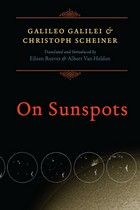 On Sunspots
Galileo Galilei and Christoph Scheiner
University of Chicago Press, 2010 Galileo’s telescopic discoveries, and especially his observation of sunspots, caused great debate in an age when the heavens were thought to be perfect and unchanging. Christoph Scheiner, a Jesuit mathematician, argued that sunspots were planets or moons crossing in front of the Sun. Galileo, on the other hand, countered that the spots were on or near the surface of the Sun itself, and he supported his position with a series of meticulous observations and mathematical demonstrations that eventually convinced even his rival. On Sunspots collects the correspondence that constituted the public debate, including the first English translation of Scheiner’s two tracts as well as Galileo’s three letters, which have previously appeared only in abridged form. In addition, Albert Van Helden and Eileen Reeves have supplemented the correspondence with lengthy introductions, extensive notes, and a bibliography. The result will become the standard work on the subject, essential for students and historians of astronomy, the telescope, and early modern Catholicism.
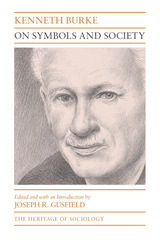 On Symbols and Society
Kenneth Burke
University of Chicago Press, 1989 Kenneth Burke's innovative use of dramatism and dialectical method have made him a powerful critical force in an extraordinary variety of disciplines—education, philosophy, history, psychology, religion, and others. While most widely acclaimed as a literary critic, Burke has elaborated a perspective toward the study of behavior and society that holds immense significance and rich insights for sociologists. This original anthology brings together for the first time Burke's key writings on symbols and social relations to offer social scientists access to Burke's thought.
In his superb introductory essay, Joseph R. Gusfield traces the development of Burke's approach to human action and its relationship to other similar sources of theory and ideas in sociology; he discusses both Burke's influence on sociologists and the limits of his perspective. Burke regards literature as a form of human behavior—and human behavior as embedded in language. His lifework represents a profound attempt to understand the implications for human behavior based on the fact that humans are "symbol-using animals." As this volume demonstrates, the work that Burke produced from the 1930s through the 1960s stands as both precursor and contemporary key to recent intellectual movements such as structuralism, symbolic anthropology, phenomenological and interpretive sociology, critical theory, and the renaissance of symbolic interaction.
On Tact, & the Made Up World
Michele Glazer
University of Iowa Press, 2010 Michele Glazer’s poems take on questions of being and value, exploring not just what is, but how it is. The poems trouble borders—between self and other, old and young, sick and well, stranger and intimate; between physical states in processes of decay; and between line and phrase, sentence and interruption, prose and poem, resisting the desire for something irrefutable with an abiding skepticism. The poems are drawn to missteps in perception and in language, those fractures that promise to crack open a surface to yield some other, greater meaning: “What is looked at is changed / what is looked for is gone.” From this collision of passion and severity come poems that are strange and darkly beautiful.
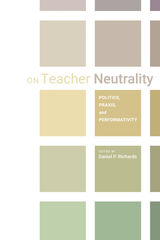 On Teacher Neutrality: Politics, Praxis, and Performativity
Daniel P. Richards
Utah State University Press, 2020 On Teacher Neutrality explores the consequences of ideological arguments about teacher neutrality in the context of higher education. It is the first edited collection to focus exclusively on this contentious concept, emphasizing the practical possibilities and impossibilities of neutrality in the teaching of writing, the deployment of neutrality as a political motif in the public discourse shaping policy in higher education, and the performativity of individual instructors in a variety of institutional contexts. The collection provides clarity on the contours around defining “neutrality,” depth in understanding how neutrality operates differently in various institutional settings, and nuance in the levels and degrees of neutrality—or what is meant by it—in the teaching of writing.
Higher education itself and its stakeholders are continually exploring the role of teachers in the classroom and the extent to which it is possible or ethical to engage in neutrality. Amplifying voices from teachers in underrepresented positions and institutions in discussions of teacher ideology, On Teacher Neutrality shapes the discourse around these topics both within the writing classroom and throughout higher education. The book offers a rich array of practices, pedagogies, and theories that will help ground instructors and posits a way forward toward better dialogue and connections with the various stakeholders of higher education in the United States.
Contributors:
Tristan Abbott, Kelly Blewett, Meaghan Brewer, Christopher Michael Brown, Chad Chisholm, Jessica Clements, Jason C. Evans, Heather Fester, Romeo García, Yndalecio Isaac Hinojosa, Mara Holt, Erika Johnson, Tawny LeBouef Tullia, Lauren F. Lichty, Adam Pacton, Daniel P. Richards, Patricia Roberts-Miller, Karen Rosenberg, Allison L. Rowland, Robert Samuels, David P. Stubblefield, Jennifer Thomas, John Trimbur
On Television
Stuart Hood and Thalia Tabary-Peterssen
Pluto Press, 1997
 On Temperaments. On Non-Uniform Distemperment. The Soul’s Traits Depend on Bodily Temperament
Galen
Harvard University Press, 2020 Antiquity’s most prolific and influential medical writer and practitioner.
Galen of Pergamum (129–?199/216), physician to the court of the emperor Marcus Aurelius, was a philosopher, scientist, medical historian, theoretician, and practitioner who wrote forcefully and prolifically on an astonishing range of subjects and whose impact on later eras rivaled that of Aristotle. Galen synthesized the entirety of Greek medicine as a basis for his own doctrines and practice, which comprehensively embraced theory, practical knowledge, experiment, logic, and a deep understanding of human life and society.
This volume presents three works of the greatest importance to Galen’s theory and practice of medicine. On Temperaments sets out Galen’s concept of the combination (krasis) of the four elemental qualities (hot, cold, wet, and dry), which is fundamental to his account of the structure and function of the human body and of animal and plant bodies generally, and is in turn essential to his theory of medical practice. The two related works, On Non-Uniform Distemperment and The Soul’s Traits Depend on Bodily Temperament, deal with specific aspects of dyskrasia, which is a disturbance in the combination of these qualities. Appended are two related short treatises, On the Best Constitution of Our Body and On Good Bodily State.
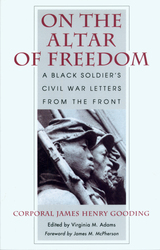 On the Altar of Freedom: A Black Soldier’s Civil War Letters from the Front
James Henry Gooding
University of Massachusetts Press, 1991 On February 14, 1863, twenty-six-year-old seaman James Henry Gooding volunteered to serve in the Massachusetts 54th, the first regiment of black soldiers ever recruited for the Union army. Over the next twelve months, he posted a series of remarkable letters from the front to his hometown newspaper, the staunchly abolitionist New Bedford Mercury. Written with insight and literary flair, his letters provide a vidid portrait of the war as seen through the eyes of a black volunteer.
From basic training at Camp Meigs in Readville, Massachusetts, through campaigns in Georgia, South Carolina, and Florida, Gooding faithfully records the activities of the 54th, including the legendary storming of Fort Wagner. He also voices the injustice felt by soldiers of his regiment over the issue of unequal pay, the refusal to promote deserving black enlistees to officer rank, and the deeply ingrained racism of whites in both the North and South.
Wounded and captured during the battle of Olustee, Florida, in February 1864, Gooding died later that year in Andersonville Prison.
In her introduction, Virginia M. Adams provides biographical details on Gooding's life and examines the antebellum history of New Bedford's large and articulate community of free blacks.
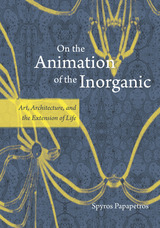 On the Animation of the Inorganic: Art, Architecture, and the Extension of Life
Spyros Papapetros
University of Chicago Press, 2012 Throughout human history, people have imagined inanimate objects to have intelligence, language, and even souls. In our secular societies today, we still willingly believe that nonliving objects have lives of their own as we find ourselves interacting with computers and other equipment. In On the Animation of the Inorganic, Spyros Papapetros examines ideas about simulated movement and inorganic life during and after the turn of the twentieth century—a period of great technical innovation whose effects continue to reverberate today.
Exploring key works of art historians such as Aby Warburg, Wilhelm Worringer, and Alois Riegl, as well as architects and artists like Fernand Léger, Mies van der Rohe, and Salvador Dalí, Papapetros tracks the evolution of the problem of animation from the fin de siècle through the twentieth century. He argues that empathy—the ability to identify with objects of the external world—was repressed by twentieth-century modernist culture, but it returned, projected onto inorganic objects such as machines, automobiles, and crystalline skyscrapers. These modern artifacts, he demonstrates, vibrated with energy, life, and desire of their own and had profound effects on people. Subtle and insightful, this book will change how we view modernist art, architecture, and their histories.
On the Appearance of the World: A Future for Aesthetics in Architecture
Mark Foster Gage
University of Minnesota Press, 2024 How can architecture develop better aesthetic directions for the twenty-first-century built environment? Our world, increasingly defined by efficient but unconsidered architecture and cities, seems to be getting uglier. In On the Appearance of the World, Mark Foster Gage asks why. He imagines a future scenario where architectural design and ideas from aesthetic philosophy align toward the production of a built world that is more humane, habitable, beautiful, and just.
 On the Arab-Jew, Palestine, and Other Displacements: Selected Writings of Ella Shohat
Ella Shohat
Pluto Press, 2017 *Winner of the MEMO Palestine Book Awards 2017*
Spanning several decades, Ella Shohat's work has introduced conceptual frameworks that fundamentally challenged conventional understandings of Palestine, Zionism and the Middle East, focusing on the pivotal figure of the Arab-Jew. This book gathers together her most influential political essays, interviews, speeches, testimonies and memoirs, as well as previously unpublished material.
Defying the binarist and Eurocentric Arab-versus-Jew rendering of the Israeli/Palestinian conflict, Shohat's work has dared to engage with the deeper historical and cultural questions swirling around colonialism, Orientalism and nationalism. Shohat's paradigm-shifting work unpacks such fraught issues as the anomalies of the national/colonial in Zionist discourse; the narrating of Jewish pasts in Muslim spaces; the links and distinctions between the dispossession of the Nakba and the dislocation of Arab-Jews; the traumatic memories triggered by partition and border-crossing; the echoes within Islamophobia of the anti-Semitic figure of 'the Jew'; and the efforts to imagine a possible future inter-communal 'convivencia'.
Shohat's transdisciplinary perspective illuminates the cultural politics in and around the Middle East. Juxtaposing texts of various genres written in divergent contexts, the book offers a vivid sense of the author's intellectual journey.
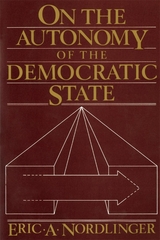 On the Autonomy of the Democratic State
Eric Nordlinger
Harvard University Press, 1981 In this major revisionist study, Eric A. Nordlinger poses two critical questions about democratic politics. How are the public policy decisions of the democratic state in America and Europe to be explained? To what extent is the democratic state an autonomous entity, that is, a state that translates its own policy preferences into public policies?
On the Autonomy of the Democratic State challenges the central assumption of liberal and Marxist scholars, journalists, and citizens alike—that elected and appointed public officials are consistently constrained by society in the making of public policy. Nordlinger demonstrates that public officials are not only frequently autonomous insofar as they regularly act upon their own policy preferences, but also markedly autonomous in doing so even in the face of opposition from the most politically powerful groups in society: voters, well-organized and financed interest groups, national associations of farmers, workers, employers, and large corporations.
Here is a book in which wide-ranging generalizations are tightly bound up with empirical examples and data. Nordlinger systematically identifies the state's many capacities and opportunities for enhancing its autonomy. These are used by public officials to shape, alter, neutralize, deflect, and resist the policy preferences and pressures of societal groups. Even the highly fragmented national state in America is shown to be far more independent of societal demands than claimed by the conventional wisdom.
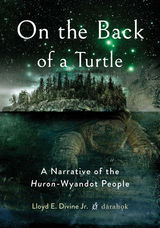 On the Back of a Turtle: A Narrative of the Huron-Wyandot People
Lloyd Divine Jr.
Ohio State University Press, 2019 On the Back of a Turtle is an all-inclusive history of the Huron-Wyandot people—from before the creation of the Great Island, now called North America, to the present day. No other full-length history of the Huron-Wyandot people exists. Presented in a conversational, easy-to-read style, the book is a compelling and informative telling of the story of the Huron-Wyandot people as told by a tribal historian.
As characters and tribes emerge in the Huron-Wyandot’s oral tradition of creation, and take their respective places upon the Great Island, the author reveals the most difficult element of the Huron-Wyandot’s history: how the tribal name was obtained. With the knowledge of how both Huron and Wyandot are relevant names for one tribe of people, the author then shares his tribe’s amazing history. The reader will be fascinated to learn how one of the smallest tribes, birthed amid the Iroquois Wars, rose to become one of the most respected and influential tribes of North America.
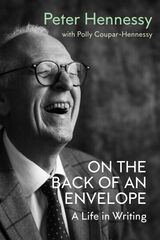 On the Back of an Envelope: A Life in Writing
Peter Hennessy with Polly Coupar-Hennessy
Haus Publishing, 2025 New and selected writings by one of the United Kingdom’s leading contemporary historians.
As one of Britain’s foremost constitutional experts and contemporary historians, Peter Hennessy has spent his professional life unpicking the arcane world of Whitehall and Westminster. He began his career as a journalist for the Times, the Economist, and the Financial Times, developing a network of insider contacts who helped him shine a light on some of the dustiest corners of the British establishment. As a journalist, prize-winning contemporary historian, and political commentator, he has chronicled the workings of the British state with wit, affection, and a healthy sense of the absurd over a five-decade career. Now a crossbench peer, he has, in his own words, “moved in with his exhibits.” Hennessy is also a stalwart of BBC election night coverage and a regular commentator on BBC Radio 4, bringing a historical and constitutional perspective on current events.
In this new volume, he brings together selected journalism, unpublished lectures, and new writing alongside personal recollections and reflections on his time observing postwar Britain, how it is governed, and those who do the governing. He reflects on the making and unmaking of prime ministers from Attlee to Truss, life in the House of Lords, and the changing constitutional landscape in the wake of Brexit and amid uncertainty about the future of the Union. Interspersed with lectures, journalism, and new pieces, Hennessy also looks back at a fascinating career, reflecting on his own experiences as a young green graduate navigating the hard-nosed world of Fleet Street in the 1970s, bringing to life a cast of characters from a world now largely gone. He revisits his time as a public historian, academic, and crossbench peer with a levity reflected in his belief that history is “gossip with footnotes.”
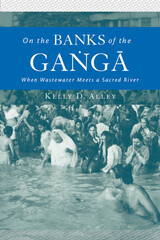 On the Banks of the Ganga: When Wastewater Meets a Sacred River
Kelly D. Alley
University of Michigan Press, 2002 In this rich ethnographic study, Kelly D. Alley sheds light on debates about water uses, wastewater management, and the meanings of waste and sacred power. On the Banks of the Ganga analyzes the human predicaments that result from the accumulation and disposal of waste by tracing how citizens of India interpret the impact of wastewater flows on a sacred river and on their own cultural practices.
Alley investigates ethno-semantic, discursive, and institutional data to flesh out the interplay between religious, scientific, and official discourses about the river Ganga. Using a new outward layering methodology, she points out that anthropological analysis must separate the historical and discursive strands of the debates concerning waste and sacred purity in order to reveal the cultural complexities that surround the Ganga. Ultimately, she addresses a deeply rooted cultural paradox: if the Ganga river is considered sacred by Hindus across India, then why do the people allow it to become polluted?
Examining areas of contemporary concern such as water usage and urban waste management in the most populated river basin in the world, this book will appeal to anthropologists and readers in religious, environmental, and Asian studies, as well as geography and law.
Kelly D. Alley is Associate Professor and Director of Anthropology at Auburn University. In addition to being a prolific writer, she has conducted research on public culture and environmental issues in northern India for over a decade. Alley is currently overseeing a project to ameliorate river pollution problems in India.
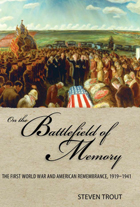 On the Battlefield of Memory: The First World War and American Remembrance, 1919–1941
Steven Trout
University of Alabama Press, 2010 This work is a detailed study of how Americans in the 1920s and 1930s interpreted and remembered the First World War. Steven Trout asserts that from the beginning American memory of the war was fractured and unsettled, more a matter of competing sets of collective memories—each set with its own spokespeople— than a unified body of myth. The members of the American Legion remembered the war as a time of assimilation and national harmony. However, African Americans and radicalized whites recalled a very different war. And so did many of the nation’s writers, filmmakers, and painters. Trout studies a wide range of cultural products for their implications concerning the legacy of the war: John Dos Passos’s novels Three Soldiers and 1919, Willa Cather’s One of Ours, William March’s Company K, and Laurence Stallings’s Plumes; paintings by Harvey Dunn, Horace Pippin, and John Steuart Curry; portrayals of the war in The American Legion Weekly and The American Legion Monthly; war memorials and public monuments like the Tomb of the Unknown Soldier; and commemorative products such as the twelve-inch tall Spirit of the American Doughboy statue. Trout argues that American memory of World War I was not only confused and contradictory during the ‘20s and ‘30s, but confused and contradictory in ways that accommodated affirmative interpretations of modern warfare and military service. Somewhat in the face of conventional wisdom, Trout shows that World War I did not destroy the glamour of war for all, or even most, Americans and enhanced it for many.
 On the Battlefield of Merit: Harvard Law School, the First Century
Daniel R. Coquillette and Bruce A. Kimball
Harvard University Press, 2015 Harvard Law School is the oldest and, arguably, the most influential law school in the nation. U.S. presidents, Supreme Court justices, and foreign heads of state, along with senators, congressional representatives, social critics, civil rights activists, university presidents, state and federal judges, military generals, novelists, spies, Olympians, film and TV producers, CEOs, and one First Lady have graduated from the school since its founding in 1817.
During its first century, Harvard Law School pioneered revolutionary educational ideas, including professional legal education within a university, Socratic questioning and case analysis, and the admission and training of students based on academic merit. But the school struggled to navigate its way through the many political, social, economic, and legal crises of the century, and it earned both scars and plaudits as a result. On the Battlefield of Merit offers a candid, critical, definitive account of a unique legal institution during its first century of influence.
Daniel R. Coquillette and Bruce A. Kimball examine the school’s ties with institutional slavery, its buffeting between Federalists and Republicans, its deep involvement in the Civil War, its reluctance to admit minorities and women, its anti-Catholicism, and its financial missteps at the turn of the twentieth century. On the Battlefield of Merit brings the story of Harvard Law School up to 1909—a time when hard-earned accomplishment led to self-satisfaction and vulnerabilities that would ultimately challenge its position as the leading law school in the nation. A second volume will continue this history through the twentieth century.
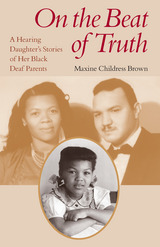 On the Beat of Truth: A Hearing Daughter’s Stories of Her Black Deaf Parents
Maxine Childress Brown
Gallaudet University Press, 2013 As an African American woman born in 1943, Maxine Childress Brown possessed a unique vantage point to witness the transformative events in her parents’ lives. Both came from the South -- her father, Herbert Childress, from Nashville, TN, and her mother, Thomasina Brown, from Concord, NC. The oldest of three daughters, Maxine was fascinated by her parents’ stories. She marveled at how they raised a well-respected, middle-class family in the midst of segregation with the added challenge of being deaf.
Her parents met in Washington, DC, where they married and settled down. Her father worked as a shoe repairman for $65 per week for more than 15 years. A gifted seamstress, her mother gave up sewing to clean houses. Because of their modest means, Maxine and her sisters lived more than modest lives. When Maxine’s tonsils became infected, her parents could not afford the operation to have them removed. For her high school prom, her mother bought her a dress on credit because she had no time to sew. Herbert Childress showed great love for his young daughters, but events turned him to bitterness and to drink. Throughout all, Thomasina encouraged her girls, always urging them to excel. She demanded their honest best with her signature phrase, her flat hand raised from her mouth straight up in the air, “on the beat of truth.”
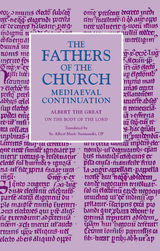 On the Body of the Lord
Albert Albert the Great
Catholic University of America Press, 2017 Albert the Great wrote On the Body of the Lord in the 1270s, making it his final work of sacramental theology. A companion volume to his commentary on the Mass, On the Body of the Lord is a comprehensive discussion of Eucharistic theology. The treatise is structured around six names for the Eucharist taken from the Mass: grace, gift, food, communion, sacrifice, and sacrament. It emerges from the liturgy and is intended to draw the reader back to worship.
The overall movement of the treatise follows the order of God’s wisdom. Albert begins by discussing the Eucharist as a gift flowing from the goodness of the Trinity. He touches on its relation to redemption and the Church, including a rigorous Aristotelian analysis of Eucharistic change and presence before ending with a discussion of Mass rubrics. The most significant theological emphasis is on the Eucharist as food given to feed the people of God.
The style varies to suit the content: certain sections are terse; others are devotional, allowing the reader to enter the saint’s own prayer. Perhaps most characteristically Albertine is an extended meditation that compares the process of digestion to the incorporation of the Christian into the Body of Christ. The mixed style allows this work to integrate rigorous aspects of scholastic thought with a fervent love for God, making On the Body of the Lord one of Albert’s most human as well as one of his most beautiful works.
On the Body of the Lord was well received, particularly in areas that came to be influenced by the devotio moderna. By 1484, three separate Latin editions had been printed, two of which were the inaugural works on new presses. In the following century the Protestant Reformation brought an end to its popularity. On the Body of the Lord is here translated into English for the first time.
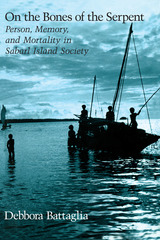 On the Bones of the Serpent: Person, Memory, and Mortality in Sabarl Island Society
Debbora Battaglia
University of Chicago Press, 1990 Sabarl island—created, in myth, from the bones of a serpent—is a coral atoll in the Louisiade archipelago of Papua New Guinea. The Sabarl speak of themselves as true "islanders": persons separated from the means of both physical and social survival. The Sabarl struggle for continuity—of the physical and social person and of social relations, of cultureal values, of paternal influence in a matrilineal society—is the subject of Debbora Battaglia's sensitive ethnography of loss and reconstruction: the first major work on cultural responses to mortality in the southern Massim culture area and an important contribution to studies of personhood in Melanesia.
The creative focus of Sabarl cultural life is a series of mortuary feasts and rituals known as segaiya. In assembling and disassembling commemorative food and objects in segaiya exchanges, Sabarl also assemble and disassemble the critical social relations such objects stand for. These commemorative acts create a collective memory yet also a collective experience of forgetting social bonds that are of no future use to the living. Sabarl anticipate this disaggregation in patterns of everyday life, which reveal the importance of categorical distinctions mapped in beliefs about the physical and metaphysical person.
Using remembrance and forgetting as an analytic lens, Battaglia is able to ask questions critical to understanding Melanesian social process. One of the "new ethnographies" addressing the limits of ethnographic representation and the fragmented nature of knowledge from an indigenous perspective, her finely wrought study explores the dynamics of cultural practices in which decontruction is integral to construction, allowing a new perspective on the ephermeral nature of sociality in Melanesia and new insight into the efficacy of cultural images more generally.
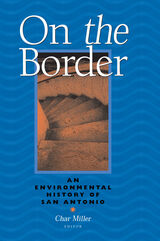 On The Border: An Environmental History Of San Antonio
Char Miller
University of Pittsburgh Press, 2001
Over the past 300 years, settlement patterns, geography, and climate have greatly affected the ecology of the south Texas landscape. Drawing on a variety of interests and perspectives, the contributors to <I>On the Border</I> probe these evolving relationships in and around San Antonio, the country’s ninth-largest city.
Spanish, Mexican, and American settlers required open expanses of land for agriculture and ranching, displacing indigenous inhabitants. The high poverty traditionally felt by many residents, combined with San Antonio’s environment, has contributed to the development of the city’s unusually complex public health dilemmas. The national drive to preserve historic landmarks and landscapes has been complicated by the blight of homogenous urban sprawl. But no issue has been more contentious than that of water, particularly in a city entirely dependent on a single aquifer in a region of little rain. Managing these environmental concerns is the chief problem facing the city in the new century.
On The Bowery: Homelessness In Society
Benedict Giamo
University of Iowa Press, 1989
As both theme and place, the Bowery has been rich in meaning, evocative in association, long in development, and representative of the inherent conflict between culture and subculture. This award-winning interdisciplinary study puts in perspective the social meaning and cultural significance of the Bowery from both historical and contemporary outlooks, spanning the fields of American literature and social history, culture studies, symbolic anthropology, ethnography, and social psychology. On the Bowery has special relevance in providing continuity for the systems of thought and methods of intervention that influence responses to the modern condition of homelessness in American cities today.
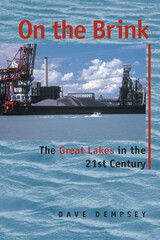 On the Brink: The Great Lakes in the 21st Century
Dave Dempsey
Michigan State University Press, 2004 As one of the world’s great natural treasures, the Great Lakes have also served in recent decades as an early warning system for many emerging environmental problems. In the early twenty-first century, as the Lakes face unprecedented challenges, we need to revisit both the wonder of the Lakes and the perils plaguing them, and to take action to protect this majestic ecosystem.
Dave Dempsey weaves the natural character and phenomena of the Great Lakes and stories of the schemes, calamities, and unusual human residents of the Basin with the history of their environmental exploitation and recovery. Contrasting the incomparable beauty and complexity of the Lakes, and the poetry, folklore, and citizen action they have inspired, with the disasters that short-sighted human folly has inflicted on the ecosystem, Dempsey makes this history both engaging and relevant to today’s debates and decisions.
Underlying the neglectful treatment of the Lakes are two irreconcilable and faulty human assumptions: that the Lakes are a system so big that human beings cannot do great harm to it, and that the Lakes are a resource that can be bent to the will of humankind. Dempsey finds evidence that, despite great changes in the laws governing the Lakes and public attitudes toward them in the last fifty years, government policy and institutions are still dominated by these dangerous attitudes.
A central theme of On the Brink is that citizens, who have displayed an increasing sense of commitment to the Lakes and a growing sense of place, must challenge their leaders to reform Great Lakes institutions. While everything from large-scale water exports to global climate change looms in the future of the Lakes, single-purpose solutions do not suffice—no more than a Band- aid would on a gaping wound. Dempsey shows that it is necessary to create a governing system that reflects the realities of life “on the ground” in communities and that taps into the passion and determination of citizens to protect these treasures.
 On the Bullet Train with Emily Brontë: Wuthering Heights in Japan
Judith Pascoe
University of Michigan Press, 2017 While teaching in Japan, Judith Pascoe was fascinated to discover the popularity that Emily Brontë’s novel Wuthering Heights has enjoyed there. Nearly 100 years after its first formal introduction to the country, the novel continues to engage the imaginations of Japanese novelists, filmmakers, manga artists and others, resulting in numerous translations, adaptations, and dramatizations. On the Bullet Train with Emily Brontë is Pascoe’s lively account of her quest to discover the reasons for the continuous Japanese embrace of Wuthering Heights, including quite varied and surprising adaptations of the novel. At the same time, the book chronicles Pascoe’s experience as an adult student of Japanese. She contemplates the multiple Japanese translations of Brontë, as contrasted to the single (or non-existent) English translations of major Japanese writers. Carrying out a close reading of a distant country’s Wuthering Heights, Pascoe begins to see American literary culture as a small island on which readers are isolated from foreign literature.
In this and in her previous book, The Sarah Siddons Audio Files, Pascoe’s engaging narrative innovates a new scholarly form involving immersive research practice to attempt a cross-cultural version of reader-response criticism. On the Bullet Train with Emily Brontë will appeal to scholars in the fields of 19th-century British literature, adaptation studies, and Japanese literary history.
On the Bus with Bill Monroe: My Five-Year Ride with the Father of Blue Grass
Mark Hembree
University of Illinois Press, 2022 A backstage audition led Mark Hembree into a five-year stint (1979–1984) as the bassist for Bill Monroe's Blue Grass Boys. Hembree’s journey included playing at the White House and on the acclaimed album Master of Bluegrass. But it also put him on a collision course with the rigors of touring, the mysteries of Southern culture, and the complex personality of bandleader-legend Bill Monroe. Whether it’s figuring out the best time for breakfast (early) or for beating the boss at poker (never), Hembree gives readers an up-close look at the occasionally exalting, often unglamorous life of a touring musician in the sometimes baffling, always colorful company of a bluegrass icon. The amusing story of a Yankee fish out of water, On the Bus with Bill Monroe mixes memoir with storytelling to recount the adventures of a Northerner learning new ways and the Old South.
On the Cessation of the Laws
Robert Grosseteste
Catholic University of America Press, 2012 In On the Cessation of the Laws, Grosseteste draws out the theological, christological, and soteriological issues implicit in the question of the relationship between the Old and New Covenants.
 On the Communicative Turn in Philosophy: Exploring Intersubjectivity, Community and the Ethics of Dialogue
Claude Mangion
Intellect Books, 2025 Beyond language and pragmatics, an argument for communication as a philosophical force in its own right.
Philosophy has long grappled with questions of meaning and human connection, yet communication itself remains an underexplored concept in the field. Claude Mangion shifts the focus by examining how communication has shaped debates on intersubjectivity and ethics.
By tracing its role across key philosophical discussions, this book offers a new outlook on how dialogue informs our understanding of self and society. Accessible and rigorously argued, it bridges the gap between philosophy and communication theory, making it a useful reference for students and scholars alike. This work provides a compelling argument for thinking about communication as a philosophical practice, whether you’re exploring community, the ethics of dialogue, or the foundations of intersubjectivity.
On The Condition of Anonymity: Unnamed Sources and the Battle for Journalism
Matt Carlson
University of Illinois Press, 2012 Matt Carlson confronts the promise and perils of unnamed sources in this exhaustive analysis of controversial episodes in American journalism during the George W. Bush administration, from prewar reporting mistakes at the New York Times and Washington Post to the Valerie Plame leak case and Dan Rather's lawsuit against CBS News. Weaving a narrative thread that stretches from the uncritical post-9/11 era to the spectacle of the Scooter Libby trial, Carlson examines a tense period in American history through the lens of journalism. Revealing new insights about high-profile cases involving confidential sources, he highlights contextual and structural features of the era, including pressure from the right, scrutiny from new media and citizen journalists, and the struggles of traditional media to survive amid increased competition and decreased resources.
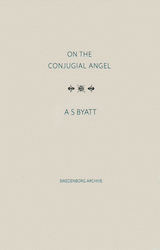 On The Conjugial Angel
A S Byatt
Swedenborg Foundation Publishers, 2020 From the Booker Prize-winning author of Possession: A Romance (1990), On The Conjugial Angel is the latest book in the Swedenborg Society’s Archive Series. A S Byatt, alongside a series of readings from her novella ‘The Conjugial Angel’, explores Swedenborg’s influence on literature, the lives of the Tennysons and the conflict between religion and science. Also including an intimate insight into Dame Byatt’s writing process and interest in literature, On The Conjugial Angel is drawn from the transcript of a talk and Q&A given at Swedenborg House in 2010 for the bicentenary of the Society.
On The Conjugial Angel is sixth in the series of Swedenborg archive pocket books. Edited by Stephen McNeilly, and drawing on miscellaneous material from the Swedenborg archives, the aim of the series is to make available in printed form lectures, interviews and other unique items that would otherwise remain unseen by a broader audience.
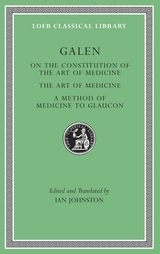 On the Constitution of the Art of Medicine. The Art of Medicine. A Method of Medicine to Glaucon
Galen
Harvard University Press, 2016 Antiquity’s most prolific and influential medical writer and practitioner.
Galen of Pergamum (129–?199/216), physician to the court of the emperor Marcus Aurelius, was a philosopher, scientist, and medical historian, a theoretician and practitioner, who wrote forcefully and prolifically on an astonishing range of subjects and whose impact on later eras rivaled that of Aristotle. Galen synthesized the entirety of Greek medicine as a basis for his own doctrines and practice, which comprehensively embraced theory, practical knowledge, experiment, logic, and a deep understanding of human life and society.
In the three classic works in this volume, On the Constitution of the Art of Medicine, The Art of Medicine, and A Method of Medicine to Glaucon, Galen covers fundamental aspects of his practice in a lucid and engaging style designed to appeal to a broad audience.
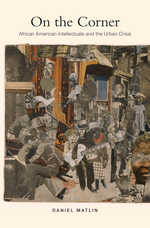 On the Corner: African American Intellectuals and the Urban Crisis
Daniel Matlin
Harvard University Press, 2013 In July 1964, after a decade of intense media focus on civil rights protest in the Jim Crow South, a riot in Harlem abruptly shifted attention to the urban crisis embroiling America's northern cities. On the Corner revisits the volatile moment when African American intellectuals were thrust into the spotlight as indigenous interpreters of black urban life to white America, and examines how three figures--Kenneth B. Clark, Amiri Baraka, and Romare Bearden--wrestled with the opportunities and dilemmas their heightened public statures entailed. Daniel Matlin locates in the 1960s a new dynamic that has continued to shape African American intellectual practice to the present day, as black urban communities became the chief objects of black intellectuals' perceived social obligations.
Black scholars and artists offered sharply contrasting representations of black urban life and vied to establish their authority as indigenous interpreters. As a psychologist, Clark placed his faith in the ability of the social sciences to diagnose the damage caused by racism and poverty. Baraka sought to channel black fury and violence into essays, poems, and plays. Meanwhile, Bearden wished his collages to contest portrayals of black urban life as dominated by misery, anger, and dysfunction.
In time, each of these figures concluded that their role as interpreters for white America placed dangerous constraints on black intellectual practice. The condition of entry into the public sphere for African American intellectuals in the post-civil rights era has been confinement to what Clark called "the topic that is reserved for blacks."
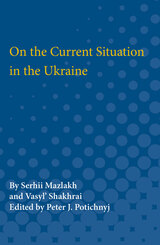 On the Current Situation in the Ukraine
Serhii Mazlakh and Vasyl' Shakhrai
University of Michigan Press, 2025 The struggle for national liberation, the freedom to develop an independent identity—these are the issues advocated with fiery eloquence in this absorbing political tract. Written in 1919 by two Ukrainian-born Bolsheviks, On the Current Situation in the Ukraine is the first impressive statement of national communism. Vasyl' Shakhrai and Serhii Mazlakh were passionate advocates of Ukrainian independence, in particular opposition to the policies of Lenin. In their view, Lenin talked about national self-determination, but in actuality his aim was to preserve the territorial integrity of the former Russian Empire and the preeminent status of Russia. On the Current Situation in the Ukraine brought its authors expulsion from the Party; and the book is still suppressed in the Soviet Union. It remains a remarkably relevant discussion of Soviet motives and the national aspirations of states living in the shadow of a great world power.
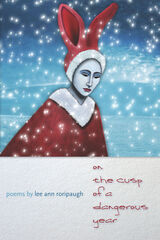 On the Cusp of a Dangerous Year
Lee Ann Roripaugh
Southern Illinois University Press, 2009 Lady Murasaki wrote in The Tale of Genji that thirty-seven is “a dangerous year” for women. Evoking the styles of Murasaki and other women writers of the Heian-period Japanese court, Lee Ann Roripaugh presents a collection of confessional poems charting the course of that perilous year. Roripaugh, in both an homage to and a dialogue with women writers of the past, explores the trials of women facing the treacherous waters of time while losing none of the grace and decadence of femininity. Often calling upon the passing of the seasons and revelations of nature, these lyrically elegant poems chronicle the dangers and delights of a range of issues facing contemporary women—from bisexuality and biracial culture and identity, to restless nights and lingering memories of the past. The pleasures of the senses collide with parallels of time and the natural world; tangible solitude lies down beside wistful memories of relationships gone by. What is ultimately revealed is both heartbreaking and illuminating. At once provocative, humorous, and bittersweet, On the Cusp of a Dangerous Year is a pillow book for the twenty-first century, providing a candid and whimsical look into the often tumultuous universe of the modern woman.
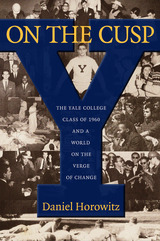 On the Cusp: The Yale College Class of 1960 and a World on the Verge of Change
Daniel Horowitz
University of Massachusetts Press, 2015 How did the 1950s become "The Sixties"? This is the question at the heart of Daniel Horowitz's On the Cusp. Part personal memoir, part collective biography, and part cultural history, the book illuminates the dynamics of social and political change through the experiences of a small, and admittedly privileged, generational cohort.
A Jewish "townie" from New Haven when he entered Yale College in fall 1956, Horowitz reconstructs the undergraduate career of the class of 1960 and follows its story into the next decade. He begins by looking at curricular and extracurricular life on the all-male campus, then ranges beyond the confines of Yale to larger contexts, including the local drama of urban renewal, the lingering shadow of McCarthyism, and decolonization movements around the world. He ponders the role of the university in protecting the prerogatives of class while fostering social mobility, and examines the growing significance of race and gender in American politics and culture, spurred by a convergence of the personal and the political. Along the way he traces the political evolution of his classmates, left and right, as Cold War imperatives lose force and public attention shifts to the civil rights movement and the war in Vietnam.
Throughout Horowitz draws on a broad range of sources, including personal interviews, writings by classmates, reunion books, issues of the Yale Daily News, and other undergraduate publications, as well as his own letters and college papers. The end product is a work consistent with much of Horowitz's previously published scholarship on postwar America, further exposing the undercurrent of discontent and dissent that ran just beneath the surface of the so-called Cold War consensus.
On the Desire to Levitate: Poems
Alison Powell
Ohio University Press, 2014 On the Desire to Levitate is the first collection of poems by Alison Powell. This striking collection includes vivid, unflinching meditations on aging, mythology, poetry, and family. In tight, elegant lines that alternate between homage and elegy, these poems explore known subjects with a rebellious eye: a defeated Hercules and a bitter Eurydice, a sympathetic Lucifer, and generations of adolescent girls as mythical adventurers moving within a beloved but confining Midwest. Yet in Powell’s skillful hands, hardship never overtakes: as judge Charles Hood writes, “There’s often a delicious humor in this work, and always a deep and lasting integrity.”
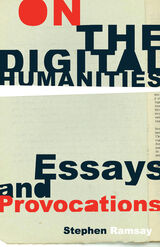 On the Digital Humanities: Essays and Provocations
Stephen Ramsay
University of Minnesota Press, 2023 A witty and incisive exploration of the philosophical conundrums that animate the digital humanities Since its inception, the digital humanities has been repeatedly attacked as a threat to the humanities: warnings from literary and cultural theorists of technology overtaking English departments and the mechanization of teaching have peppered popular media. Stephen Ramsay’s On the Digital Humanities, a collection of essays spanning the personal to the polemic, is a spirited defense of the field of digital humanities. A founding figure in what was once known as “humanities computing,” Ramsay has a well-known and contentious relationship with what is now called the digital humanities (DH). Here Ramsay collects and updates his most influential and notorious essays and speeches from the past fifteen years, considering DH from an array of practical and theoretical perspectives. The essays pursue a broad variety of themes, including the nature of data and its place in more conventional notions of text and interpretation, the relationship between the constraints of computation and the more open-ended nature of the humanities, the positioning of practical skills and infrastructures in both research and pedagogical contexts, the status of DH as a program for political and social action, and personal reflections on the author’s journey into the field as both a theorist and a technologist. These wide-ranging essays all center around one idea: that DH not forsake its connection to the humanities. While “digital humanities” may sound like an entirely new form of engagement with the artifacts of human culture, Ramsay argues that the field well reveals what is most essential to humanistic inquiry.
 On the Dignity of Society: Catholic Social Teaching and Natural Law
F. Russell Hittinger
Catholic University of America Press, 2024 In this collection of essays, Francis Russell Hittinger shows that Catholic social teaching is not only an articulate defense of the dignity of the human person, but perhaps more fundamentally an elucidation of the dignity of society. Indeed, Hittinger enables us to see that one cannot properly defend the dignity of the person without also showing the dignity of societies in which human persons – as naturally familial, political, and ecclesial animals – seek their own perfection in communion with others. Hittinger has been a renowned scholar of Catholic social doctrine for some time now, and the essays presented here are the fruit of his mature thinking on the topic over the course of many years. As each chapter shows, Hittinger’s historically important body of work on Catholic moral and social philosophy and theology is rooted in natural law theory and Thomistic philosophy, but also animated by St. Augustine’s thought and thus consistently sensitive to historical contexts and arenas for moral and theological disputation. These magisterial essays therefore integrate historical studies of the development of Catholic social teaching with systematic exposition of the theological coherence of that tradition, while also articulating the essential role of philosophy and natural law within both.
The volume is divided into three parts. The first part is comprised of six essays on Catholic social teaching, the second part is made up of six essays on natural law and its role in social doctrine, and the third part includes two essays discussing the first principles of the Church’s teaching on social issues. This collection will no doubt become a standard in the field of scholarship on Catholic social teaching.
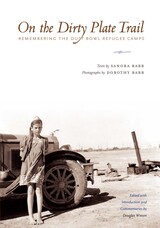 On the Dirty Plate Trail: Remembering the Dust Bowl Refugee Camps
Edited with an introduction and commentaries by Douglas Wixson
University of Texas Press, 2007 Runner-up, National Council on Public History Book Award, 2008 The 1930s exodus of "Okies" dispossessed by repeated droughts and failed crop prices was a relatively brief interlude in the history of migrant agricultural labor. Yet it attracted wide attention through the publication of John Steinbeck's The Grapes of Wrath (1939) and the images of Farm Security Administration photographers such as Dorothea Lange and Arthur Rothstein. Ironically, their work risked sublimating the subjects—real people and actual experience—into aesthetic artifacts, icons of suffering, deprivation, and despair. Working for the Farm Security Administration in California's migrant labor camps in 1938-39, Sanora Babb, a young journalist and short story writer, together with her sister Dorothy, a gifted amateur photographer, entered the intimacy of the dispossessed farmers' lives as insiders, evidenced in the immediacy and accuracy of their writings and photos. Born in Oklahoma and raised on a dryland farm, the Babb sisters had unparalleled access to the day-by-day harsh reality of field labor and family life. This book presents a vivid, firsthand account of the Dust Bowl refugees, the migrant labor camps, and the growth of labor activism among Anglo and Mexican farm workers in California's agricultural valleys linked by the "Dirty Plate Trail" (Highway 99). It draws upon the detailed field notes that Sanora Babb wrote while in the camps, as well as on published articles and short stories about the migrant workers and an excerpt from her Dust Bowl novel, Whose Names Are Unknown. Like Sanora's writing, Dorothy's photos reveal an unmediated, personal encounter with the migrants, portraying the social and emotional realities of their actual living and working conditions, together with their efforts to organize and to seek temporary recreation. An authority in working-class literature and history, volume editor Douglas Wixson places the Babb sisters' work in relevant historical and social-political contexts, examining their role in reconfiguring the Dust Bowl exodus as a site of memory in the national consciousness. Focusing on the material conditions of everyday existence among the Dust Bowl refugees, the words and images of these two perceptive young women clearly show that, contrary to stereotype, the "Okies" were a widely diverse people, including not only Steinbeck's sharecropper "Joads" but also literate, independent farmers who, in the democracy of the FSA camps, found effective ways to rebuild lives and create communities.
On the Donation of Constantine
Lorenzo VallaTranslated by G. W. Bowersock
Harvard University Press, 2008 Lorenzo Valla (1407–1457) was the leading theorist of the Renaissance humanist movement and the author of major works on Latin style, scholastic logic, and other topics. In On the Donation of Constantine he uses new philological methods to attack the authenticity of the most important document justifying the papacy’s claims to temporal rule, in a brilliant analysis that is often seen as marking the beginning of modern textual criticism. Widely translated throughout Europe during the Reformation, the work was placed on the Church’s Index of Prohibited Books. This volume provides a new translation with introduction and notes by G. W. Bowersock, commissioned for the I Tatti Renaissance Library, along with a translation of the Donation of Constantine document itself.
On the Donation of Constantine
Lorenzo VallaTranslated by G. W. Bowersock
Harvard University Press, 2007 Lorenzo Valla (1407-1457) was the most important theorist of the humanist movement. He wrote a major work on Latin style, On Elegance in the Latin Language, which became a battle-standard in the struggle for the reform of Latin across Europe, and Dialectical Disputations, a wide-ranging attack on scholastic logic. His most famous work is On the Donation of Constantine, an oration in which Valla uses new philological methods to attack the authenticity of the most important document justifying the papacy's claims to temporal rule. It appears here in a new translation with introduction and notes by G. W. Bowersock, based on the critical text of Wolfram Setz (1976). This volume also includes a text and translation of the Constitutum Constantini, commonly known as the Donation of Constantine.
On the Doorposts of Your House, Revised Edition: Al Mezuzot Beitecha: Prayers and Ceremonies for the Jewish Home
Chaim Stern
Central Conference of American Rabbis, 2010 This revised edition of this beloved volume includes a wealth of innovation and traditional readings for personal meditations and family home-based rituals. Doorposts provides material for the whole Jewish year and life cycle, from consecrating a new house, to celebrating a birthday or baby-naming, to welcoming holy days and festivals. Contemporary, gender-inclusive language throughout. Now includes updated translation and transliteration based on the Mishkan T'filah: A Reform Siddur and new design. This hardcover makes a perfect gift for confirmations, teachers, weddings, and housewarmings.
On the East-West Slope: Globalization, Nationalism, Racism and Discourses on Eastern Europe
Attila Melegh
Central European University Press, 2006 Melegh's work offers a powerful analysis of the sociological and symbolic meanings of East-West in Europe after the end of the Cold War. Melegh exposes the underbelly of liberal characterizations of East-West, highlighting the polarizing effect of extreme nationalism and ethnic racism. The theoretical underpinnings of this work involve the ideas of preeminent theorists such as Karl Mannheim, Michel Foucault and more recently Maria Todorova and Iver Neumann. The importance of this work lies in its ability to cast into fine relief how the "East-West Slope" oriented negatively from West to East has emerged from liberal characterizations of this project. In addition this is one of the first attempts to link post-colonial analysis to developments in Eastern Europe.
On the Economic Theory of Socialism
Oskar Lange
University of Minnesota Press, 1938
On the Economic Theory of Socialism was first published in 1938. Minnesota Archive Editions uses digital technology to make long-unavailable books once again accessible, and are published unaltered from the original University of Minnesota Press editions.Is socialism workable on economic grounds? “No,” say the chief European critics of socialism – von Mises, Robbins, and von Hayek. “Yes,” say Lange and Taylor in these two papers – the first refutation in English of the objections of these economists.There has been consistent demand for this book since it went out of print in 1944. This reprint is in response to that demand.
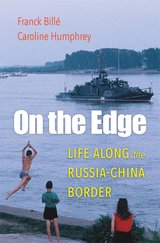 On the Edge: Life along the Russia-China Border
Franck Billé and Caroline Humphrey
Harvard University Press, 2021 A pioneering examination of history, current affairs, and daily life along the Russia–China border, one of the world’s least understood and most politically charged frontiers.
The border between Russia and China winds for 2,600 miles through rivers, swamps, and vast taiga forests. It’s a thin line of direct engagement, extraordinary contrasts, frequent tension, and occasional war between two of the world’s political giants. Franck Billé and Caroline Humphrey have spent years traveling through and studying this important yet forgotten region. Drawing on pioneering fieldwork, they introduce readers to the lifeways, politics, and history of one of the world’s most consequential and enigmatic borderlands.
It is telling that, along a border consisting mainly of rivers, there is not a single operating passenger bridge. Two different worlds have emerged. On the Russian side, in territory seized from China in the nineteenth century, defense is prioritized over the economy, leaving dilapidated villages slumbering amid the forests. For its part, the Chinese side is heavily settled and increasingly prosperous and dynamic. Moscow worries about the imbalance, and both governments discourage citizens from interacting. But as Billé and Humphrey show, cross-border connection is a fact of life, whatever distant authorities say. There are marriages, friendships, and sexual encounters. There are joint businesses and underground deals, including no shortage of smuggling. Meanwhile some indigenous peoples, persecuted on both sides, seek to “revive” their own alternative social groupings that span the border. And Chinese towns make much of their proximity to “Europe,” building giant Russian dolls and replicas of St. Basil’s Cathedral to woo tourists.
Surprising and rigorously researched, On the Edge testifies to the rich diversity of an extraordinary world haunted by history and divided by remote political decisions but connected by the ordinary imperatives of daily life.
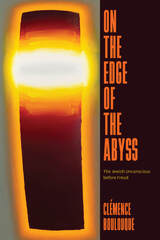 On the Edge of the Abyss: The Jewish Unconscious before Freud
Clémence Boulouque
University of Chicago Press, 2025 A history of the unconscious in public discourse before Freud and its significance for Jewish emancipation.
When Sigmund Freud published his theory of the unconscious, in 1899, he popularized an idea that had fascinated generations of Jewish philosophers before him. In this book, Clémence Boulouque charts the development of the pre-Freudian unconscious from subcultural inquiry to dominant discourse during the long nineteenth century. Although Freud’s scientific notion differed from Schelling’s mythical description of the abyss from which creation springs, its resonance with older ideas was celebrated as an opportunity to express specifically Jewish contributions to modernity. Indeed, Boulouque shows that the pre-Freudian unconscious emerged from conversations in Jewish mysticism about otherness and coexistence. In the hopeful years before World War I, Boulouque argues, such reflections offered the possibility of emancipation not only to Jews but to all.
 On the Edge of the Auspicious: GENDER AND CASTE IN NEPAL
Mary M. Cameron
University of Illinois Press, 1998 People of lower caste live throughout the villages of Nepal but have
been noticeably absent from ethnographic accounts of the Himalayan region.
Starting from the perspective of lower-caste Hindu women, Mary M. Cameron
offers a long-overdue study of artisans and farmers in western Nepal.
On the Edge of the Auspicious skillfully shows the connections
between caste hierarchy and gender relations leading to domestic, economic,
and religious power of lower-caste women. Situating her study in the history
of land ownership and contemporary family and work relations, Cameron
explains how and why patriarchal ideology associated with high-caste families
in Nepal does not apply to women of lower caste. Drawing on data from
work, family, and religious domains, this ethnography goes further than
other current studies of caste hierarchy in South Asia to show the everyday
material and ideological dimensions of domination and lower-caste people's
resistance to them..
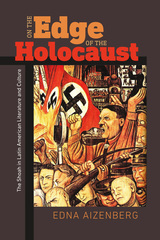 On the Edge of the Holocaust: The Shoah in Latin American Literature and Culture
Edna Aizenberg
Brandeis University Press, 2015 In this bold study, Edna Aizenberg offers a much-needed corrective to both Latin American literary scholarship and popular assumptions that the whole of Latin America served as a Nazi refuge both during and after World War II. Analyzing the treatment of the Shoah by five leading figures in Argentine, Brazilian, and Chilean writing—Alberto Gerchunoff, Clarice Lispector, Jorge Luis Borges, Gabriela Mistral, and Joao Guimaraes Rosa—Aizenberg illuminates how Latin American intellectuals engaged with the horrific information that reached them regarding the Holocaust, including the sympathy and collaboration of their own governments with the Nazis. Aizenberg emphasizes how—through fiction, journalism, and activism—these five culture-makers opposed and fought fascism. At the same time, her readings of individual texts confront shopworn clichés about Latin American writing and literature, suggesting deeper and richer dimensions to many canonical works. This interdisciplinary book fills critical gaps in both Holocaust and Latin American studies, and will be of great interest to scholars and students in both fields.
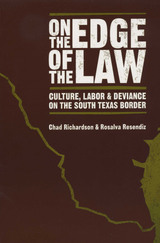 On the Edge of the Law: Culture, Labor, and Deviance on the South Texas Border
By Chad Richardson and Rosalva Resendiz
University of Texas Press, 2006 The Valley of South Texas is a region of puzzling contradictions. Despite a booming economy fueled by free trade and rapid population growth, the Valley typically experiences high unemployment and low per capita income. The region has the highest rate of drug seizures in the United States, yet its violent crime rate is well below national and state averages. The Valley's colonias are home to the poorest residents in the nation, but their rates of home ownership and intact two-parent families are among the highest in the country for low-income residential areas. What explains these apparently irreconcilable facts? Since 1982, faculty and students associated with the Borderlife Research Project at the University of Texas-Pan American have interviewed thousands of Valley residents to investigate and describe the cultural and social life along the South Texas-Northern Mexico border. In this book, Borderlife researchers clarify why Valley culture presents so many apparent contradictions as they delve into issues that are "on the edge of the law"—traditional health care and other cultural beliefs and practices, displaced and undocumented workers, immigration enforcement, drug smuggling, property crime, criminal justice, and school dropout rates. The researchers' findings make it plain that while these issues present major challenges for the governments of the United States and Mexico, their effects and contradictions are especially acute on the border, where residents must daily negotiate between two very different economies; health care, school, and criminal justice systems; and worldviews.
 On The Edge: Ukrainian - Central European - Russian Security Triangle
Margarita M. Balmaceda
Central European University Press, 2001 A new globally significant relationship arising after the break-up of the Soviet Union is the main topic of this unparalleled volume – the geopolitical link between Russia, Ukraine and the three bordering ‘Central European’ states, Hungary, Poland and Slovakia. On the Edge is a path-breaking analysis of this triangular relationship with an in-depth focus on economic, political and, more importantly, security issues.
The expansion of NATO up to Ukraine’s borders is likely to leave Ukraine in a delicate position vis-à-vis Russia. On the Edge addresses key questions, such as: how are events in Ukraine affecting the security calculations of the Central European states; Central European relations with Russia and NATO; and relations among Central European states themselves? The volume examines what Central European states can do to solidify Ukraine’s independence and help it avoid international isolation.
On the Edge gives a Central European perspective on all these issues and suggests concrete forms of co-operation.
On the End of Privacy: Dissolving Boundaries in a Screen-Centric World
Richard E. Miller
University of Pittsburgh Press, 2019 On the End of Privacy explores how literacy is transformed by online technology that lets us instantly publish anything that we can see or hear. Miller examines the 2010 suicide of Tyler Clementi, a young college student who jumped off the George Washington Bridge after he discovered that his roommate spied on him via webcam. With access to the text messages, tweets, and chatroom posts of those directly involved in this tragedy, Miller asks: why did no one intervene to stop the spying? Searching for an answer to that question leads Miller to online porn sites, the invention of Facebook, the court-martial of Chelsea Manning, the contents of Hillary Clinton’s email server, Anthony Weiner’s sexted images, Chatroulette, and more as he maps out the changing norms governing privacy in the digital age.
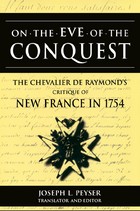 On the Eve of Conquest: The Chevalier de Raymond's Critique of New France in 1754
Joseph L. Peyser
Michigan State University Press, 1997 In 1754, Charles de Raymond, chevalier of the Royal and Military Order of Saint Louis and a captain in the Troupes de la Marine wrote a bold, candid, and revealing expose; on the French colonial posts and settlements of New France. On the Eve of the Conquest, more than an annotated translation, includes a discussion on the historical background of the start of the French and Indian War, as well as a concise biography of Raymond and Michel Le Courtois de Surlaville, the army colonel at the French court to whom the report was sent. The events surrounding Raymond's controversial year as commandant of the post (now Fort Wayne, Indiana) in 1749-50, his disputed recall by Governor General Jacques-Pierre de Taffanel de La Jonquier, and the subsequent friction between La Jonquiere's successor, Ange de Menneville Duqesne, and Raymond are presented in detail and illustrated by translations of their correspondence.
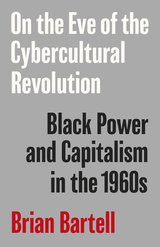 On the Eve of the Cybercultural Revolution: Black Power and Capitalism in the 1960s
Brian Bartell
University of Minnesota Press, 2025 Uncovering the Black Power movement’s contributions to theorizing the politics of automation
On the Eve of the Cybercultural Revolution offers a comprehensive look at the Black Power movement’s theoretical work and insights into the entanglement of capitalism, technology, and racism. Drawing upon James and Grace Lee Boggs’s expanded notion of the cybercultural era, Brian Bartell demonstrates how a range of artists, writers, and activists from the 1960s prefigured the wider discourse around automation and made it a central concern of their politics. Rather than reducing automation to an isolated technical phenomenon, theorists of the Black radical tradition identified its important historical antecedents in colonialism and plantation slavery, emphasizing how the emerging cyberculture joined with issues such as the reorganization of labor, ecological harm, and racial inequality. Examining the work of Martin Luther King Jr., Noah Purifoy, the Black Panthers, and others, On the Eve of the Cybercultural Revolution outlines the new forms of social reproduction conceived outside of the dominant structures of racial capitalism. Bartell synthesizes a wide range of source texts, including political speeches, literature, and activist archives, to show how the Black Power movement sought to create a postscarcity, more-than-capitalist economy. By shedding light on the movement’s underexplored engagement with theories of technology, he provides a crucial key to understanding the historical dynamics responsible for our technocapitalist present. Retail e-book files for this title are screen-reader friendly.
 On the Existence of Digital Objects
Yuk Hui
University of Minnesota Press, 2016 Digital objects, in their simplest form, are data. They are also a new kind of industrial object that pervades every aspect of our life today—as online videos, images, text files, e-mails, blog posts, Facebook events.Yet, despite their ubiquity, the nature of digital objects remains unclear. On the Existence of Digital Objects conducts a philosophical examination of digital objects and their organizing schema by creating a dialogue between Martin Heidegger and Gilbert Simondon, which Yuk Hui contextualizes within the history of computing. How can digital objects be understood according to individualization and individuation? Hui pursues this question through the history of ontology and the study of markup languages and Web ontologies; he investigates the existential structure of digital objects within their systems and milieux. With this relational approach toward digital objects and technical systems, the book addresses alienation, described by Simondon as the consequence of mistakenly viewing technics in opposition to culture. Interdisciplinary in philosophical and technical insights, with close readings of Husserl, Heidegger, and Simondon as well as the history of computing and the Web, Hui’s work develops an original, productive way of thinking about the data and metadata that increasingly define our world.
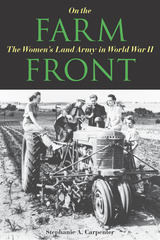 On the Farm Front: The Women's Land Army in World War II
Stephanie A. Carpenter
Northern Illinois University Press, 2018
Rosie the Riveter is an icon for women's industrial contribution to World War II, but history has largely overlooked the three million women who served on America's agricultural front. The Women's Land Army sent volunteers to farms, canneries, and dairies across the country, accounting for the majority of wartime agricultural labor. On the Farm Front tells for the first time the remarkable story of these women who worked to ensure both "Freedom from Want" at home and victory abroad.
Formed in 1943 as part of the Emergency Farm Labor Program, the WLA placed its workers in areas where American farmers urgently needed assistance. Many farmers in even the most desperate areas, however, initially opposed women working their land. Rural administrators in the Midwest and the South yielded to necessity and employed several hundred thousand women as farm laborers by the end of the war, but those in the Great Plains and eastern Rocky Mountains remained hesitant, suffering serious agricultural and financial losses as a consequence.
Carpenter reveals for the first time how the WLA revolutionized the national view of farming. By accepting all available women as agricultural workers, farmers abandoned traditional labor and stereotypical social practices. When the WLA officially disbanded in 1945, many of its women chose to remain in their agricultural jobs rather than return to a full-time home life or prewar employment.
On the Farm Front illuminates the Women's Land Army's unique contribution to prosperity and victory, showing how this landmark organization changed the role of women in American society.
On the Fireline: Living and Dying with Wildland Firefighters
Matthew Desmond
University of Chicago Press, 2007 A classic early work by the author of Evicted, a close-up look at the lives of wildland firefighters
In this rugged account of a rugged profession, Matthew Desmond explores the heart and soul of the wildland firefighter. Having joined a firecrew in Northern Arizona as a young man, Desmond relates his experiences with intimate knowledge and native ease, adroitly balancing emotion with analysis and action with insight. On the Fireline shows that these firefighters aren’t the adrenaline junkies or romantic heroes as they’re so often portrayed. An immersion into a dangerous world, On the Fireline is also a sophisticated analysis of a high-risk profession—and a captivating read.
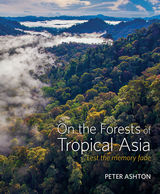 On the Forests of Tropical Asia: Lest the Memory Fade
Peter Ashton
Royal Botanic Gardens, Kew, 2014 Thousands of years ago, Asia was filled with forests that connected ecosystems from the foot of the Himalayas to the shores of the Pacific. Today, more than half of these woodlands are gone, mostly due to the demands of commerce and industry. And while conservation efforts are underway, more parcels disappear every year. On the Forests of Tropical Asia is a timely record of current forests and a much-needed explanation of the role humans played in the devastation and redevelopment of these forests.
On the Forests of Tropical Asia is the first book to describe the forests of the entire tropical Asian region, from Sind to New Guinea. It opens with chapters on physical geography and geological history and then moves on to address forest and tree structure and dynamics, floristics, and symbiotic organisms, as well as genetics, evolutionary history, species diversity, and human impact. A final chapter covers future policy and practice options for saving what remains. Hundreds of full-color illustrations serve as a lasting testimony to the diverse forests. Ashton combines existing research with his own experience and collaborations, creating a broad, comprehensive understanding of forest variation. By presenting a clear picture of where the forests stand today, he offers a framework for future research, policy, and conservation.
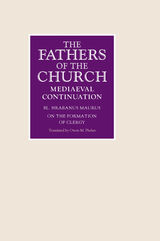 On the Formation of the Clergy
Bleeded Hrabanus Maurus
Catholic University of America Press, 2023 Among the intellectuals of the Carolingian Renaissance of the ninth century, few are as prolific and influential as Hrabanus Maurus (c.780-856), a monk and abbot of the monastery of Fulda and then archbishop of Mainz. Most famous among modern authors as the putative author of the hymn “Come, Holy Ghost,” Hrabanus was highly esteemed by generations of medieval intellectuals, including Dante, who located the archbishop among St. Bonaventure’s cohort in the sphere of the Sun.
This volume presents for the first time in English translation Hrabanus’s pedagogical masterpiece On the Formation of Clergy (De institutione clericorum). Unveiled on the Feast of All Saints in 819, at the dedication of the great Salvator basilica, Hrabanus’ work addresses the most important focuses of the Carolingian Renaissance: education and ecclesiastical reform. The treatise promotes a careful balance between classical training and Christian ethics and features the robust pedagogy of the early medieval monastic curriculum. At points it even offers glimpses into the energetic environment of Fulda’s classrooms. On the Formation of Clergy also supplies a program for ecclesiastical reform. It provides readers with a primer on ecclesiastical hierarchy and liturgy, providing glosses on church offices and explanations of important church activities.
Hrabanus divided his opus into three books. Book One explains Holy Orders. It lays out the distinctions between clergy and laity, enumerates the ranks of the priesthood, describes clerical vesture, and explores the sacraments. Book Two examines priestly life. It considers ascetic disciplines appropriate for priests at different grades, describes expected prayer routines, and identifies important doctrinal teachings and principal liturgical feasts. Book Three treats biblical studies and preaching. It lays out a curriculum for the liberal arts, connects the liberal arts to catechetics and homiletics, and integrates academic study with moral instruction.
On the Formation of Clergy was widely read throughout the Middle Ages. Beyond its impact on the Carolingian Renaissance, the treatise guided legal analysis in Gratian’s Decretum, supplied examples for Peter Lombard’s Sentences, and is cited by theological titans from Rupert of Deutz to Thomas Aquinas to Gabriel Biel.
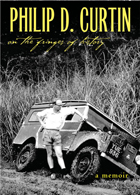 On the Fringes of History: A Memoir
Philip D. Curtin
Ohio University Press, 2005 In the 1950s, professional historians claiming to specialize in tropical Africa were no more than a handful. The teaching of world history was confined to high school courses, and even those were focused on European history, with a chapter added to account for the history of East and South Asia. The change over the ensuing decades was revolutionary. Philip D. Curtin was a leader among a new generation of historians that emerged after the Second World War. Written with characteristic economy and telling detail, On the Fringes of History: A Memoir follows Curtin from his beginnings in central West Virginia in the 1920s, through a distinguished academic career in which Curtin founded African studies at the University of Wisconsin. He began the programs in comparative world history at Wisconsin and Johns Hopkins, producing many of the most influential historians and Africanists from the 1950s to today. Always an independent thinker and controversial figure, Curtin revived the study of the Atlantic slave trade. His career stands as an example of the kind of dissatisfaction and struggles that brought about a sea change in higher education. On the Fringes of History traces the movement of African history and world history from the fringes of the history profession into the mainstream. This stunningly illustrated memoir illuminates both the career of a leading historian and the history of twentieth-century academia.
On The Front Line: Guerilla Poems of El Salvador
Claribel Alegria & Darwin J. Flakoll
Northwestern University Press, 1995 More than poetry of combat, this bilingual edition is a record of the struggles, hopes and dreams of a war-torn country, providing a vivid description of the recent struggles in El Salvador.
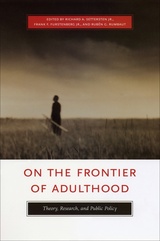 On the Frontier of Adulthood: Theory, Research, and Public Policy
Edited by Richard A. Settersten Jr., Frank F. Furstenberg, and Rubén G. Rumbaut
University of Chicago Press, 2005 On the Frontier of Adulthood reveals a startling new fact: adulthood no longer begins when adolescence ends. A lengthy period before adulthood, often spanning the twenties and even extending into the thirties, is now devoted to further education, job exploration, experimentation in romantic relationships, and personal development. Pathways into and through adulthood have become much less linear and predictable, and these changes carry tremendous social and cultural significance, especially as institutions and policies aimed at supporting young adults have not kept pace with these changes.
This volume considers the nature and consequences of changes in early adulthood by drawing upon a wide variety of historical and contemporary data from the United States, Canada, and Western Europe. Especially dramatic shifts have occurred in the conventional markers of adulthood—leaving home, finishing school, getting a job, getting married, and having children—and in how these experiences are configured as a set. These accounts reveal how the process of becoming an adult has changed over the past century, the challenges faced by young people today, and what societies can do to smooth the transition to adulthood.
"This book is the most thorough, wide-reaching, and insightful analysis of the new life stage of early adulthood."—Andrew Cherlin, Johns Hopkins University
"From West to East, young people today enter adulthood in widely diverse ways that affect their life chances. This book provides a rich portrait of this journey-an essential font of knowledge for all who care about the younger generation."—Glen H. Elder Jr., University of North Carolina at Chapel Hill
"On the Frontier of Adulthood adds considerably to our knowledge about the transition from adolescence to adulthood. . . . It will indeed be the definitive resource for researchers for years to come. Anyone working in the area—whether in demography, sociology, economics, or developmental psychology—will wish to make use of what is gathered here."—John Modell, Brown University
"This is a must-read for scholars and policymakers who are concerned with the future of today's youth and will become a touchpoint for an emerging field of inquiry focused on adult transitions."—Jeanne Brooks-Gunn, Columbia University
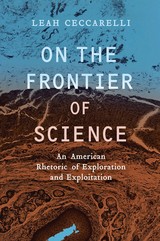 On the Frontier of Science: An American Rhetoric of Exploration and Exploitation
Leah Ceccarelli
Michigan State University Press, 2013 “The frontier of science” is a metaphor that has become ubiquitous in American rhetoric, from its first appearance in the public address of early twentieth-century American intellectuals and politicians who aligned a mythic national identity with scientific research, to its more recent use in scientists’ arguments in favor of increased research funding. Here, Leah Ceccarelli explores what is selected and what is deflected when this metaphor is deployed, its effects on those who use it, and what rhetorical moves are made by those who try to counter its appeal. In her research, Ceccarelli discovers that “the frontier of science” evokes a scientist who is typically male, a risk taker, an adventurous loner—someone separated from a public that both envies and distrusts him, with a manifest destiny to penetrate the unknown. It conjures a competitive desire to claim the riches of a new territory before others can do the same. Closely reading the public address of scientists and politicians and the reception of their audiences, this book shows how the frontier of science metaphor constrains American speakers, helping to guide the ends of scientific research in particular ways and sometimes blocking scientists from attaining the very goals they set out to achieve.
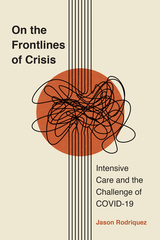 On the Frontlines of Crisis: Intensive Care and the Challenge of COVID-19
Jason Rodriquez
Rutgers University Press, 2025 On the Frontlines of Crisis is a powerful account of the experiences of healthcare workers during the COVID-19 pandemic. As hospitals worldwide became overwhelmed by an influx of critically ill patients, those working in intensive care units (ICUs) were thrust into an unprecedented battle against a deadly virus about which little was understood. Rodriquez takes readers into the heart of two Massachusetts ICUs to learn about the people who put their lives on the line and faced severe challenges as they treated critically ill patients at the peak of the pandemic.
A dramatic spike in mental health distress among these healthcare workers was a consequence of the pandemic, but was also a result of the changing dynamics within the healthcare system itself. Here, Rodriquez examines the impact of the development of the contemporary focus on “clinical empathy.” This clinical method, while intended to improve patient care, had profound implications for healthcare workers during the pandemic, often blurring the lines between professional distance and personal involvement, increasing the emotional demands on staff and heightened their vulnerability to anxiety, depression, post-traumatic stress, and burnout. Through the personal stories of those who were in the ICU, On the Frontlines of Crisis offers a sobering reflection on the social and emotional costs of caring for patients.
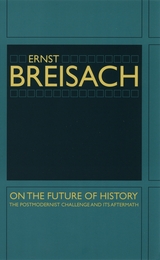 On the Future of History: The Postmodernist Challenge and Its Aftermath
Ernst Breisach
University of Chicago Press, 2003 What does postmodernism mean for the future of history? Can one still write history in postmodernity? To answer questions such as these, Ernst Breisach provides the first comprehensive overview of postmodernism and its complex relationship to history and historiography. Placing postmodern theories in their intellectual and historical contexts, he shows how they are part of broad developments in Western culture.
Breisach sees postmodernism as neither just a fad nor a universal remedy. In clear and concise language, he presents and critically evaluates the major views on history held by influential postmodernists, such as Derrida, Foucault, Lyotard, and the new narrativists. Along the way, he introduces to the reader major debates among historians over postmodern theories of evidence, objectivity, meaning and order, truth, and the usefulness of history. He also discusses new types of history that have emerged as a consequence of postmodernism, including cultural history, microhistory, and new historicism.
For anyone concerned with the postmodern challenge to history, both advocates and critics alike, On the Future of History will be a welcome guide.
On the Game: Women and Sex Work
Sophie Day
Pluto Press, 2007 On the Game is an ethnographic account of prostitutes and prostitution. Sophie Day has followed the lives of individual women over fifteen years, a period of substantial change within the sex industry. Her book details their attempts to manage their lives against a backdrop of social disapproval.
Through the lens of public health, economics, will, and human rights, Day explores the public and private lives of individual sex workers. She offers a unique perspective on contemporary capitalist society, one that iwll be of interest to a broad range of social scientist.
The author brings a unique perspective to her work. She is both an anthropologist and the founder of the renowned Praed Street Project, established in 1986 as a referral and support center for London prostitutes.
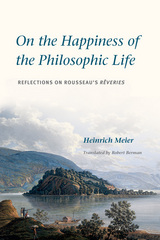 On the Happiness of the Philosophic Life: Reflections on Rousseau's Rêveries in Two Books
Heinrich Meier
University of Chicago Press, 2016 A paradigm-shifting, original examination of Rousseau’s final work, Rêveries. On the Happiness of the Philosophic Life presents Heinrich Meier’s confrontation with Rousseau’s Rêveries, the philosopher’s most beautiful and daring work, as well as his last and least understood. Bringing to bear more than thirty years of study of Rousseau, Meier unfolds his stunningly original interpretation in two parts.
The first part of On the Happiness of the Philosophic Life approaches the Rêveries not as another autobiographical text in the tradition of the Confessions and the Dialogues, but as a reflection on the philosophic life and the distinctive happiness it provides. The second turns to a detailed analysis of a work referred to in the Rêveries, the “Profession of Faith of the Savoyard Vicar,” which triggered Rousseau’s political persecution when it was originally published as part of Émile. In his examination of this most controversial of Rousseau’s writings, which aims to lay the foundations for a successful nonphilosophic life, Meier brings to light the differences between natural religion as expressed by the Vicar and Rousseau’s natural theology. Together, the two reciprocally illuminating parts of this study provide an indispensable guide to Rousseau and to the understanding of the nature of the philosophic life.
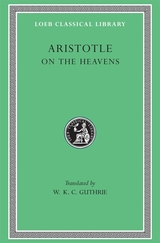 On the Heavens
Aristotle
Harvard University Press Peripatetic cosmology.
Aristotle, great Greek philosopher, researcher, reasoner, and writer, born at Stagirus in 384 BC, was the son of a physician. He studied under Plato at Athens and taught there (367–347); subsequently he spent three years at the court of a former pupil in Asia Minor. After some time at Mitylene, in 343–342 he was appointed by King Philip of Macedon to be tutor of his teen-aged son Alexander. After Philip’s death in 336, Aristotle became head of his own school (of “Peripatetics”), the Lyceum at Athens. Because of anti-Macedonian feeling there after Alexander’s death in 323, he withdrew to Chalcis in Euboea, where he died in 322.
Nearly all the works Aristotle prepared for publication are lost; the priceless ones extant are lecture-materials, notes, and memoranda (some are spurious). They can be categorized as follows:
I Practical: Nicomachean Ethics; Great Ethics (Magna Moralia); Eudemian Ethics; Politics; Economics (on the good of the family); On Virtues and Vices.
II Logical: Categories; Analytics (Prior and Posterior); Interpretation; Refutations used by Sophists; Topica.
III Physical: Twenty-six works (some suspect) including astronomy, generation and destruction, the senses, memory, sleep, dreams, life, facts about animals, etc.
IV Metaphysics: on being as being.
V Art: Rhetoric and Poetics.
VI Other works including the Constitution of Athens; more works also of doubtful authorship.
VII Fragments of various works such as dialogues on philosophy and literature; and of treatises on rhetoric, politics, and metaphysics.
The Loeb Classical Library edition of Aristotle is in twenty-three volumes.
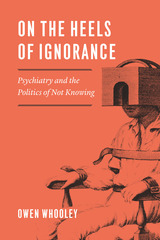 On the Heels of Ignorance: Psychiatry and the Politics of Not Knowing
Owen Whooley
University of Chicago Press, 2019 Psychiatry has always aimed to peer deep into the human mind, daring to cast light on its darkest corners and untangle its thorniest knots, often invoking the latest medical science in doing so. But, as Owen Whooley’s sweeping new book tells us, the history of American psychiatry is really a record of ignorance. On the Heels of Ignorance begins with psychiatry’s formal inception in the 1840s and moves through two centuries of constant struggle simply to define and redefine mental illness, to say nothing of the best way to treat it. Whooley’s book is no antipsychiatric screed, however; instead, he reveals a field that has muddled through periodic reinventions and conflicting agendas of curiosity, compassion, and professional striving. On the Heels of Ignorance draws from intellectual history and the sociology of professions to portray an ongoing human effort to make sense of complex mental phenomena using an imperfect set of tools, with sometimes tragic results.
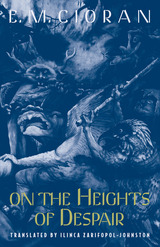 On the Heights of Despair
E. M. Cioran
University of Chicago Press, 1992 Born of a terrible insomnia—"a dizzying lucidity which would turn even paradise into hell"—this book presents the youthful Cioran, a self-described "Nietzsche still complete with his Zarathustra, his poses, his mystical clown's tricks, a whole circus of the heights."
On the Heights of Despair shows Cioran's first grappling with themes he would return to in his mature works: despair and decay, absurdity and alienation, futility and the irrationality of existence. It also presents Cioran as a connoisseur of apocalypse, a theoretician of despair, for whom writing and philosophy both share the "lyrical virtues" that alone lead to a metaphysical revelation.
"No modern writer twists the knife with Cioran's dexterity. . . . His writing . . . is informed with the bitterness of genuine compassion."—Bill Marx, Boston Phoenix
"The dark, existential despair of Romanian philosopher Cioran's short meditations is paradoxically bracing and life-affirming. . . . Puts him in the company of Nietzsche and Kierkegaard."—Publishers Weekly, starred review
"This is self-pity as epigram, the sort of dyspeptic pronouncement that gets most people kicked out of bed but that has kept Mr. Cioran going for the rest of his life."—Judith Shulevitz, New York Times Book Review
 On the History of a Film Aesthetic Concept: Découpage
Guido Kirsten
Amsterdam University Press, 2025 Unlike editing, découpage does not take place after the film has been shot, but before. The French term refers to the breakdown of a scene into a sequence of shots. In order to translate the written screenplay into film language, cinematographers and directors employ a genuinely cinematic way of thinking—a thinking in sequences of moving images and sounds, including the camera setups, movements, and shot sizes. Découpage is thus crucial in shaping a film’s specific form.
Using the tools of conceptual history, Guido Kirsten traces the term’s evolution from its emergence in the 1910s through the eventful film history of the twentieth century until its recent rediscovery. By differentiating layers of meaning and discussing important shifts in the concept’s evolution, this book improves the understanding of key film theoretical texts, whose meaning has been distorted by mistranslation, and shows how a deeper reflection of découpage promises to enrich the analysis of contemporary moving image media.
 On the History of Film Style
David Bordwell
Harvard University Press, 1997 The study of cinematic style has profoundly shaped our attitude toward movies. Style assigns films to a tradition, distinguishes a classic, and signals the arrival of a pathbreaking innovation. David Bordwell now shows how film scholars have attempted to explain stylistic continuity and change across the history of cinema.
Bordwell scrutinizes the theories of style launched by André Bazin, Noël Burch, and other film historians. In the process he celebrates a century of cinema, integrating discussions of film classics such as The Birth of a Nation and Citizen Kane with analyses of more current box-office successes such as Jaws and The Hunt for Red October. Examining the contributions of both noted and neglected directors, he considers the earliest filmmaking, the accomplishments of the silent era, the development of Hollywood, and the strides taken by European and Asian cinema in recent years.
On the History of Film Style proposes that stylistic developments often arise from filmmakers' search for engaging and efficient solutions to production problems. Bordwell traces this activity across history through a detailed discussion of cinematic staging. Illustrated with more than 400 frame enlargements, this wide-ranging study provides a new lens for viewing cinema.
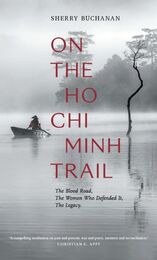 On The Ho Chi Minh Trail: The Blood Road, The Women Who Defended It, The Legacy
Sherry Buchanan
Asia Ink, 2020 A mix of travelogue, history, and mediation on a journey through the Ho Chi Minh Trail that reveals the critical role women played in defending it.
Offering both a personal and historical exploration of the Ho Chi Minh Trail, this book highlights the critical role the Trail and the young women soldiers who helped build and defend it played in the Vietnam War. Accompanied by two traveling companions, Sherry Buchanan winds her way from Hanoi in the north to Ho Chi Minh City, formerly Saigon, in the south. Driving through the spectacular scenery of Vietnam and Laos, she encounters locations from the Truong Son mountains, the Phong Nha Caves, ancient citadels, and Confucian temples to the Khmer Temple of Wat Phu at the western-most point of the Trail in Laos.
Buchanan records her interactions—both scheduled and spontaneous—with those who experienced the Vietnam War firsthand. She listens to the women who defended the Trail roads against the greatest bombing campaign in modern times, walks through minefields with the demolition teams hunting for unexploded ordnance, and meets American veterans who have returned to Vietnam with an urge to “do something.” Buchanan weaves informative, and often humorous, tales from her journey with excerpts from the accounts of others, situating the locations she visits in their historical and political context. On the Ho Chi Minh Trail brings together geography, history, and personal accounts to reveal the scale of the tragedy, its harmful legacies, and our memory of it. Buchanan challenges American exceptionalism and calls for redress for those harmed by US military actions during the Vietnam War and America’s subsequent wars.
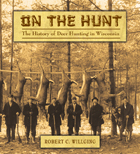 On the Hunt: The History of Deer Hunting in Wisconsin
Robert C Willging
Wisconsin Historical Society Press, 2008 On the Hunt is the story of deer-hunting in Wisconsin, from the spear-throwing Paleo-Indians to the sportsmen of today. Meticulously researched by one of the state's most prolific outdoor writers, On the Hunt covers subsistence and sport hunting, deer camps, changing deer management policies, and recent developments and controversies, from human encroachment on deer habitat to CWD. Range maps and charts tracking annual herd populations and harvest goals complement Willging's engaging storytelling. Drawing from Department of Conservation papers, hunting magazines, newspapers, historic photos of classic deer camps, and the personal stories of hunters and deer managers, On the Hunt offers a fascinating glimpse into a distant and not-so-distant past, when the hunt joined men in almost mythical unity and bucks were seemingly larger than life. An ardent sportsman with nearly 25 years of hunting experience, Willging understands that deer-hunting is as much about the smell of the woods in autumn and the meticulous cleaning of a fine rifle as it is about bringing home a whitetail. His story of how Wisconsin's own World War II flying ace, Richard Bong, squeezed in a few days of hunting while home on leave vividly illustrates the sport's powerful pull on hearts and minds. Willging also engagingly conveys the important tradition of the deer-hunting camp, from a humble two-man shack in Chequamegon National Forest (like the one he shared with his best friend, Steve) to the grand old Deer Foot Lodge founded in 1912 in Vilas County. On the Hunt is perfect preparation for the avid sportsman's annual fall trek with friends and family into the woods.
On the Inconvenience of Other People
Lauren Berlant
Duke University Press, 2022 In On the Inconvenience of Other People Lauren Berlant continues to explore our affective engagement with the world. Berlant focuses on the encounter with and the desire for the bother of other people and objects, showing that to be driven toward attachment is to desire to be inconvenienced. Drawing on a range of sources, including Last Tango in Paris, Ralph Waldo Emerson, Claudia Rankine, Christopher Isherwood, Bhanu Kapil, the Occupy movement, and resistance to anti-Black state violence, Berlant poses inconvenience as an affective relation and considers how we might loosen our attachments in ways that allow us to build new forms of life. Collecting strategies for breaking apart a world in need of disturbing, the book’s experiments in thought and writing cement Berlant’s status as one of the most inventive and influential thinkers of our time.
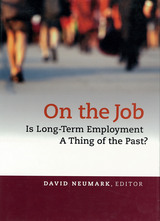 On the Job: Is Long-Term Employment a Thing of the Past?
David, editor Neumark
Russell Sage Foundation, 2000 In recent years, a flurry of reports on downsizing, outsourcing, and flexible staffing have created the impression that stable, long-term jobs are a thing of the past. According to conventional wisdom, workers can no longer count on building a career with a single employer, and job security is a rare prize. While there is no shortage of striking anecdotes to fuel these popular beliefs, reliable evidence is harder to come by. Researchers have yet to determine whether we are witnessing a sustained, economy-wide decline in the stability of American jobs, or merely a momentary rupture confined to a few industries and a few classes of workers. On the Job launches a concerted effort to reconcile the conflicting evidence about job stability and security. The book examines the labor force as a whole, not merely the ousted middle managers who have attracted the most publicity. It looks at the situation of women as well as men, young workers as well as old, and workers on part-time, non-standard, or temporary work schedules. The evidence suggests that long-serving managers and professionals suffered an unaccustomed loss of job security in the 1990s, but there is less evidence of change for younger, newer recruits. The authors bring our knowledge of the labor market up to date, connecting current conditions in the labor market with longer-term trends that have evolved over the past two decades. They find that layoffs in the early 1990s disrupted the implicit contract between employers and staff, but it is too soon to declare a permanent revolution in the employment relationship. Having identified the trends, the authors seek to explain them and to examine their possible consequences. If the bonds between employee and employer are weakening, who stands to benefit? Frequent job-switching can be a sign of success for a worker, if each job provides a stepping stone to something better, but research in this book shows that workers gained less from changing jobs in the 1980s and 1990s than in earlier decades. The authors also evaluate the third-party intermediaries, such as temporary help agencies, which profit from the new flexibility in the matching of workers and employers. Besides opening up new angles on the evidence, the authors mark out common ground and pin-point those areas where gaps in our knowledge remain and popular belief runs ahead of reliable evidence. On the Job provides an authoritative basis for spotting the trends and interpreting the fall-out as U.S. employers and employees rethink the terms of their relationship.
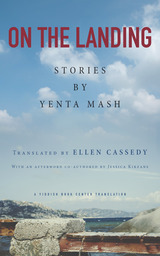 On the Landing: Stories by Yenta Mash
By Yenta Mash, translated by Ellen Cassedy, with an afterword by Jessica Kirzane and Ellen Cassedy
Northern Illinois University Press, 2018 A Yiddish Book Center Translation
In these sixteen stories, available in English for the first time, prize-winning author Yenta Mash traces an arc across continents, across upheavals and regime changes, and across the phases of a woman’s life. Mash’s protagonists are often in transit, poised “on the landing” on their way to or from somewhere else. In imaginative, poignant, and relentlessly honest prose, translated from the Yiddish by Ellen Cassedy, Mash documents the lost world of Jewish Bessarabia, the texture of daily life behind the Iron Curtain in Soviet Moldova, and the challenges of assimilation in Israel.
On the Landing opens by inviting us to join a woman making her way through her ruined hometown, recalling the colorful customs of yesteryear—and the night when everything changed. We then travel into the Soviet gulag, accompanying women prisoners into the fearsome forests of Siberia. In postwar Soviet Moldova, we see how the Jewish community rebuilds itself. On the move once more, we join refugees struggling to find their place in Israel. Finally, a late-life romance brings a blossoming of joy.
Drawing on a lifetime of repeated uprooting, Mash offers an intimate perch from which to explore little-known corners of the twentieth and early twenty-first centuries. A master chronicler of exile, she makes a major contribution to the literature of immigration and resilience, adding her voice to those of Jhumpa Lahiri, W. G. Sebald, André Aciman, and Viet Thanh Nguyen. Mash’s literary oeuvre is a brave achievement, and her work is urgently relevant today as displaced people seek refuge across the globe.
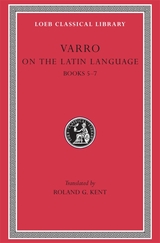 On the Latin Language, Volume I: Books 5–7
Varro
Harvard University Press Ancient Roman word lore.
Varro (M. Terentius), 116–27 BC, of Reate, renowned for his vast learning, was an antiquarian, historian, philologist, student of science, agriculturist, and poet. He was a republican who was reconciled to Julius Caesar and was marked out by him to supervise an intended national library.
Of Varro’s more than seventy works involving hundreds of volumes we have only his treatise On Agriculture (in LCL 283) and part of his monumental achievement De Lingua Latina (On the Latin Language), a work typical of its author’s interest not only in antiquarian matters but also in the collection of scientific facts. Originally it consisted of twenty-five books in three parts: etymology of Latin words (Books 1–7); their inflections and other changes (Books 8–13); and syntax (Books 14–25). Of the whole work survive (somewhat imperfectly) Books 5–10. These are from the section (Books 4–6) that applied etymology to words of time and place and to poetic expressions; the section (Books 7–9) on analogy as it occurs in word formation; and the section (Books 10–12) that applied analogy to word derivation. Varro’s work contains much that is of very great value to the study of the Latin language.
The Loeb Classical Library edition of On the Latin Language is in two volumes.
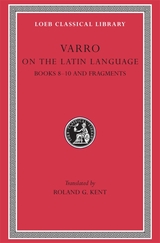 On the Latin Language, Volume II: Books 8–10 and Fragments
Varro
Harvard University Press Ancient Roman word lore.
Varro (M. Terentius), 116–27 BC, of Reate, renowned for his vast learning, was an antiquarian, historian, philologist, student of science, agriculturist, and poet. He was a republican who was reconciled to Julius Caesar and was marked out by him to supervise an intended national library.
Of Varro’s more than seventy works involving hundreds of volumes we have only his treatise On Agriculture (in LCL 283) and part of his monumental achievement De Lingua Latina (On the Latin Language), a work typical of its author’s interest not only in antiquarian matters but also in the collection of scientific facts. Originally it consisted of twenty-five books in three parts: etymology of Latin words (Books 1–7); their inflections and other changes (Books 8–13); and syntax (Books 14–25). Of the whole work survive (somewhat imperfectly) Books 5–10. These are from the section (Books 4–6) that applied etymology to words of time and place and to poetic expressions; the section (Books 7–9) on analogy as it occurs in word formation; and the section (Books 10–12) that applied analogy to word derivation. Varro’s work contains much that is of very great value to the study of the Latin language.
The Loeb Classical Library edition of On the Latin Language is in two volumes.
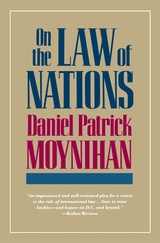 On the Law of Nations
Daniel Patrick Moynihan
Harvard University Press, 1990 Foreign Policy. “In the annals of forgetfulness there is nothing quite to compare with the fading from the American mind of the idea of the law of nations.”
Grenada. “We might have benefited from a weekend’s pause in which we could have considered our interests rather than merely giving in to our impulses.”
The mining of Nicaraguan harbors. “A practice of deception mutated into a policy of deceit.”
Iran–Contra. “The idea of international law had faded. But just as important, in the 1980s it had come to be associated with weaknesses in foreign policy. Real men did not cite Grotius.”
As the era of totalitarianism recedes, the time is at hand to ask by what rules we expect to conduct ourselves, Senator Daniel Patrick Moynihan writes in this pellucid, and often ironic, examination of international law. Our founding fathers had a firm grasp on the importance and centrality of such law; later presidents affirmed it and tried to establish international institutions based on such high principles; but we lost our way in the fog of the Cold War.
Moynihan’s exploration of American attitudes toward international law—those of presidents, senators, congressmen, public officials, and the public at large—reveals the abiding reverence for a law of nations and the attempts for almost two hundred years to make international law the centerpiece of foreign and strategic policy. Only in the last decade did a shift in values at the highest levels of government change the goals and conduct of the United States.
Displaying a firm grasp of history, informed by senatorial insights and investigative data, elegantly written, this book is a triumph of scholarship, interpretation, and insight.
On the Laws and Customs of England
Translated, with revisions and notes, by Samuel E. Thorne
Harvard University Press This publication, issued in cooperation with the Selden Society, reproduces completely the Yale edition of 1915–1942, which has long been unobtainable. To it has been added an English translation, the first in almost a century, incorporating many improvements of the text, drawn from a re-examination of the manuscripts and a further identification of Henry de Bracton’s sources, Roman and English.
Volume I contains George E. Woodbine’s prolegomena to his edition, written in 1915, to which Samuel Thorne has added a prefatory note, reclassifying and redating the manuscripts on which the edition was based. Volume II begins the text and translation, which will be completed in Volume III and Volume IV. Notes and indices will appear in Volume V.
On the Laws and Customs of England
Translated, with revisions and notes, by Samuel E. Thorne
Harvard University Press This publication, issued in cooperation with the Selden Society, reproduces completely the Yale edition of 1915–1942, which has long been unobtainable. To it has been added an English translation, the first in almost a century, incorporating many improvements of the text, drawn from a re-examination of the manuscripts and a further identification of Henry de Bracton’s sources, Roman and English.
Volume I contains George E. Woodbine’s prolegomena to his edition, written in 1915, to which Samuel Thorne has added a prefatory note, reclassifying and redating the manuscripts on which the edition was based. Volume II begins the text and translation, which will be completed in Volume III and Volume IV. Notes and indices will appear in Volume V.
On the Laws and Customs of England
Translated, with revisions and notes, by Samuel E. Thorne
Harvard University Press This publication, issued in cooperation with the Selden Society, reproduces completely the Yale edition of 1915–1942, which has long been unobtainable. To it has been added an English translation, the first in almost a century, incorporating many improvements of the text, drawn from a re-examination of the manuscripts and a further identification of Henry de Bracton’s sources, Roman and English.
Volume I contains George E. Woodbine’s prolegomena to his edition, written in 1915, to which Samuel Thorne has added a prefatory note, reclassifying and redating the manuscripts on which the edition was based. Volume II begins the text and translation, which will be completed in Volume III and Volume IV. Notes and indices will appear in Volume V.
On the Laws and Customs of England
Translated, with revisions and notes, by Samuel E. Thorne
Harvard University Press This publication, issued in cooperation with the Selden Society, reproduces completely the Yale edition of 1915–1942, which has long been unobtainable. To it has been added an English translation, the first in almost a century, incorporating many improvements of the text, drawn from a re-examination of the manuscripts and a further identification of Henry de Bracton’s sources, Roman and English.
Volume I contains George E. Woodbine’s prolegomena to his edition, written in 1915, to which Samuel Thorne has added a prefatory note, reclassifying and redating the manuscripts on which the edition was based. Volume II begins the text and translation, which will be completed in Volume III and Volume IV. Notes and indices will appear in Volume V.
On the Left in America: Memoirs of the Scandinavian-American Labor Movement
Henry Bengston. Translated by Kermit B. Westerberg. Edited and with an Introduction by Michael Brook
Southern Illinois University Press, 1999
Previously available only in an out-of-print Swedish edition published in 1955, Henry Bengston's firsthand account deals with what historian Dag Blanck calls the "other Swedish America."
Swedish immigrants in general were conservative, but Bengston and others—most notably Joe Hill—joined the working-class labor movement on the left, primarily as Debsian socialists, although their ranks included other socialists, communists, and anarchists. Involved in the radical labor movement on many fronts, Bengston was the editor of Svenska Socialisten from 1912 until he dropped out of the Scandinavian Socialist Federation in 1920. Even after 1920, however, his sympathies remained with the movement he had once strongly espoused.
On the Line
Harvey Swados
University of Illinois Press, 1957 A classic of the literature of work, On the Line reveals the essential vision of a writer who, almost alone of his generation, portrayed America's families and factories with empathy, compassion, and intelligence. Swados's important essay "The Myth of the Happy Worker" has been included as an appendix.
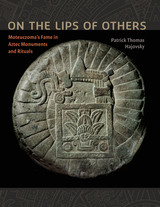 On the Lips of Others: Moteuczoma's Fame in Aztec Monuments and Rituals
By Patrick Thomas Hajovsky
University of Texas Press, 2015 Moteuczoma, the last king who ruled the Aztec Empire, was rarely seen or heard by his subjects, yet his presence was felt throughout the capital city of Tenochtitlan, where his deeds were recorded in hieroglyphic inscriptions on monuments and his command was expressed in highly refined ritual performances. What did Moteuczoma’s “fame” mean in the Aztec world? How was it created and maintained? In this innovative study, Patrick Hajovsky investigates the king’s inscribed and spoken name, showing how it distinguished his aura from those of his constituencies, especially other Aztec nobles, warriors, and merchants, who also vied for their own grandeur and fame. While Tenochtitlan reached its greatest size and complexity under Moteuczoma, the “Great Speaker” innovated upon fame by tying his very name to the Aztec royal office. As Moteuczoma’s fame transcends Aztec visual and oral culture, Hajovsky brings together a vast body of evidence, including Nahuatl language and poetry, indigenous pictorial manuscripts and written narratives, and archaeological and sculptural artifacts. The kaleidoscopic assortment of sources casts Moteuczoma as a divine king who, while inheriting the fame of past rulers, saw his own reputation become entwined with imperial politics, ideological narratives, and eternal gods. Hajovsky also reflects on posthumous narratives about Moteuczoma, which created a very different sense of his fame as a conquered subject. These contrasting aspects of fame offer important new insights into the politics of personhood and portraiture across Aztec and colonial-period sources.
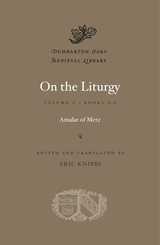 On the Liturgy
Amalar of Metz
Harvard University Press, 2014 Amalar of Metz’s On the Liturgy (the Liber officialis, or De ecclesiastico officio) was one of the most widely read and circulated texts of the Carolingian era. The fruit of lifelong reflection and study in the wake of liturgical reform in the early ninth century, Amalar’s commentary inaugurated the Western medieval tradition of allegorical liturgical exegesis and has bequeathed a wealth of information about the contents and conduct of the early medieval Mass and Office. In 158 chapters divided into four books, On the Liturgy addresses the entire phenomenon of Christian worship, from liturgical prayers to clerical vestments to the bodily gestures of the celebrants. For Amalar, this liturgical diversity aimed, above all, to commemorate the life of Christ, to provide the Christian faithful with moral instruction, and to recall Old Testament precursors of Christian rites. To uncover these layers of meaning, Amalar employed interpretive techniques and ideas that he had inherited from the patristic tradition of biblical exegesis—a novel approach that proved both deeply popular and, among his contemporaries, highly controversial.
This volume adapts the text of Jean Michel Hanssens’s monumental 1948 edition of Amalar’s treatise and provides the first complete translation into a modern language.
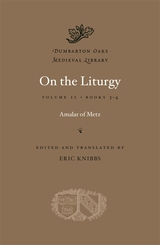 On the Liturgy
Amalar of Metz
Harvard University Press, 2014 Amalar of Metz’s On the Liturgy (the Liber officialis, or De ecclesiastico officio) was one of the most widely read and circulated texts of the Carolingian era. The fruit of lifelong reflection and study in the wake of liturgical reform in the early ninth century, Amalar’s commentary inaugurated the Western medieval tradition of allegorical liturgical exegesis and has bequeathed a wealth of information about the contents and conduct of the early medieval Mass and Office. In 158 chapters divided into four books, On the Liturgy addresses the entire phenomenon of Christian worship, from liturgical prayers to clerical vestments to the bodily gestures of the celebrants. For Amalar, this liturgical diversity aimed, above all, to commemorate the life of Christ, to provide the Christian faithful with moral instruction, and to recall Old Testament precursors of Christian rites. To uncover these layers of meaning, Amalar employed interpretive techniques and ideas that he had inherited from the patristic tradition of biblical exegesis—a novel approach that proved both deeply popular and, among his contemporaries, highly controversial.
This volume adapts the text of Jean Michel Hanssens’s monumental 1948 edition of Amalar’s treatise and provides the first complete translation into a modern language.
On the Make: The Hustle of Urban Nightlife
David Grazian
University of Chicago Press, 2007 David Grazian’s riveting tour of downtown Philadelphia and its newly bustling nightlife scene reveals the city as an urban playground where everyone dabbles in games of chance and perpetrates elaborate cons. Entertainment in the city has evolved into a professional industry replete with set designers, stage directors, and method actors whose dazzling illusions tempt even the shrewdest of customers. As entertaining and illuminating as the confessional stories it recounts, On the Make is a fascinating exposé of the smoke and mirrors employed in the city at night.
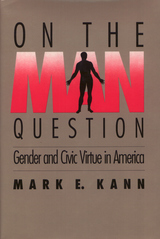 On The Man Question: Gender and Civic Virtue in America
Mark E. Kann
Temple University Press, 1991 Focusing on Seventeenth-Century English political philosophy and Nineteenth-Century American culture, Mark Kann challenges the widely-held view that American political institutions are grounded in the primacy of individualism. Liberal thinkers have long been concerned that men are too passionate and selfish to exercise individual rights without causing social chaos. Kann demonstrates how a desperate search to answer the man question began to revolutionize gender relations He examines "the other liberal tradition in America" which downplays the value of individualism, elevates the ongoing significance of an "engendered civic virtue," and incorporates classical republicanism into the fabric of modern political discourse. The author traces the cultural conditioning of the white middle class that produced the ideal of self-sacrificing wives whose lives were devoted to creating a haven for their husbands and a school of virtue for their sons. Upon leaving home, these young men were to be schooled in manliness in the military in order to be capable of assuming positions of power as they were vacated by their fathers’ generation. Thus, in the norms of fatherhood, fraternity, womanhood, and militarism, the male’s individualism was conditioned with a strong dose of civic virtue.
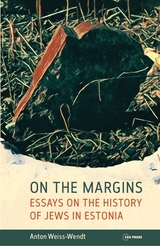 On the Margins: Essays on the History of Jews in Estonia
Anton Weiss-Wendt
Central European University Press, 2017 Estonia is perhaps the only country in Europe that lacks a comprehensive history of its Jewish minority. Spanning over 150 years of Estonian Jewish history, On the Margins is a truly unique book. Rebuilding a life beyond so-called Pale of Jewish Settlement in the Russian Empire, the Jewish cultural autonomy in interwar Estonia, and the trauma of Soviet occupation of 1940–41 are among the issues addressed in the book but most profoundly, the book wrestles with the subject of the Holocaust and its legacy in Estonia. Specifically, it examines the quasi-legal system of murder instituted in Nazi-occupied Estonia, confiscation of Jewish property, and Jewish forced labor camps and develops an analysis of the causes of collaboration during the Holocaust. The book also explores the dynamics of war crimes trials in the Soviet Union since the 1960s and so-called denaturalization trials in the United States in the 1980s. The haunting memory of Soviet and Nazi rule, the book concludes, prevents a larger segment of today’s Estonian population from facing up to the Holocaust and the universal message that it carries.E
 On the Margins of Citizenship: Intellectual Disability and Civil Rights in Twentieth-Century America
Allison C. Carey
Temple University Press, 2010 On the Margins of Citizenship provides a comprehensive, sociological history of the fight for civil rights for people with intellectual disabilities. Allison Carey, who has been active in disability advocacy and politics her entire life, draws upon a broad range of historical and legal documents as well as the literature of citizenship studies to develop a “relational practice” approach to the issues of intellectual disability and civil rights. She examines how and why parents, self-advocates, and professionals have fought for different visions of rights for this population throughout the twentieth century and how things have changed over that time.
Carey addresses the segregation of people with intellectual disabilities in schools and institutions along with the controversies over forced sterilization, eugenics, marriage and procreation, and protection from the death penalty. She chronicles the rise of the parents’ movement and the influence of the Kennedy family, as well as current debates that were generated by the impact of the Americans with Disabilities Act passed in 1990.
Presenting the shifting constitutional and legal restrictions for this marginalized group, Carey argues that policies tend to sustain an ambiguity that simultaneously promises rights yet also allows their retraction.
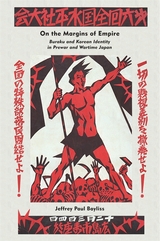 On the Margins of Empire: Buraku and Korean Identity in Prewar and Wartime Japan
Jeffrey Paul Bayliss
Harvard University Press, 2013 Two of the largest minority groups in modern Japan—Koreans, who emigrated to the metropole as colonial subjects, and a social minority known as the Burakumin, who descended from former outcastes—share a history of discrimination and marginalization that spans the decades of the nation’s modern transformation, from the relatively liberal decade of the 1920s, through the militarism and nationalism of the 1930s, to the empire’s demise in 1945.
Through an analysis of the stereotypes of Koreans and Burakumin that were constructed in tandem with Japan’s modernization and imperial expansion, Jeffrey Bayliss explores the historical processes that cast both groups as the antithesis of the emerging image of the proper Japanese citizen/subject. This study provides new insights into the majority prejudices, social and political movements, and state policies that influenced not only their perceived positions as “others” on the margins of the Japanese empire, but also the minorities’ views of themselves, their place in the nation, and the often strained relations between the two groups.
 On the Meaning of Sex
J. Budziszewski
Intercollegiate Studies Institute, 2012
What is the meaning of sex?
Everyone in every time and place is interested in sex. Our own time is obsessed by it. One would think that a society obsessed by sex would understand it very well. But the truth is that obsession drives out understanding. We no longer understand even the common sense of sexuality, the things that were common knowledge in supposedly less enlightened times.
Acclaimed philosopher J. Budziszewski remedies this problem. His wise, gracefully written book about the nature, meaning, and mysteries of sexuality restores lost wisdom, raising and answering such questions as:
•Does sex have to mean anything at all?
•What is the meaning of the sexual powers, of sexual differences, of sexual love, of sexual beauty, of sexual purity?
•Is sexuality “all about sex”?
•why does sexuality stir up such transcendent longings for something more than sex?
On the Meaning of Sex corrects the most prevalent errors about sex, particularly the errors of the sexual revolution, which by mistaking pleasure for a good in itself has caused untold pain and suffering. In restoring the meaning and purpose of sex, the author reclaims what Dante calls “the intelligence of love.”
“Looking out over the sexual landscape of our time,” Budziszewski writes, “I see a terrain of unutterable sweetness, despoiled by unmentionable pain. Yet who knows? Perhaps it is not too late to redeem the unutterable sweetness. Shall we try to find out?”
On the Moderation of Reason in Religious Matters
Ludovico Antonio Muratori
Catholic University of America Press, 2024 Lodovico Antonio Muratori (1672 –1750) was an Italian Catholic priest, notable as historian and a leading scholar of his age, and for his discovery of the Muratorian fragment, the earliest known list of New Testament books.
No other book inspired Catholics of the 18th century more than Muratori's On the Moderation of Reason in Religious Matters. Ever since its publication in 1714, it had virtually a magisterial status by those who sought to revitalize the intellectual verve of Catholic theology. In essay form, Muratori addressed the fundamental challenges of doubt, authority, blind faith, the Copernican worldview, and the limitations of human reason. This work is a must-read for anyone looking to deepen their understanding of the intersection between religion and reason.
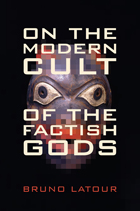 On the Modern Cult of the Factish Gods
Bruno Latour
Duke University Press, 2010 On the Modern Cult of the Factish Gods continues the project that the influential anthropologist, philosopher, and science studies theorist Bruno Latour advanced in his book We Have Never Been Modern. There he redescribed the Enlightenment idea of universal scientific truth, arguing that there are no facts separable from their fabrication. In this concise work, Latour delves into the “belief in naive belief,” the suggestion that fetishes—objects invested with mythical powers—are fabricated and that facts are not. Mobilizing his work in the anthropology of science, he uses the notion of “factishes” to explore a way of respecting the objectivity of facts and the power of fetishes without forgetting that both are fabricated. While the fetish-worshipper knows perfectly well that fetishes are man-made, the Modern icon-breaker inevitably erects new icons. Yet Moderns sense no contradiction at the core of their work. Latour pursues his critique of critique, or the possibility of mediating between subject and object, or the fabricated and the real, through the notion of “iconoclash,” making productive comparisons between scientific practice and the worship of visual images and religious icons.
 On The Modernist Long Poem
Margaret Dickie
University of Iowa Press, 1986
Beyond Lionel Trilling's classic definition of Modernism as anticultural and subversive, Margaret Dickie posits American Modernist poetry as both conservative and affirmative—conservative because it was dominated by the composition of the long poem, affirmative because these poems aimed to restore public themes to poetry, to instruct and improve, to "affirm the gold thread in the pattern," as Ezra Pound claimed.
Each poet discussed in this new study—T. S. Eliot, Hart Crane, William Carlos Williams, and Ezra Pound—began his career as an experimenter in brief lyrics and then, paradoxically, developed an ambition to write a long public poem. The poems they wrote—The Waste Land, The Bridge, Paterson, and The Cantos—differed in length, in program, and in composition, but all were alike in their idealization of form, their commitment to the long poem, and the troubled and difficult process of their composition. Read together, they offer a new understanding of the Modernist sense of form shared by these quite different writers.
Tracing the development of each poem from the poet's initial announced plans through the lengthy writing and reconsideration of purpose, Dickie offers a new history not only of each poem but of the American Modernists and the ways they adapted the avant-garde tendencies of European Modernism to their own native needs.
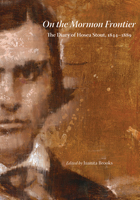 On the Mormon Frontier: The Diary of Hosea Stout, 1844-1889
Juanita Brooks
University of Utah Press, 2009 Hosea Stout was a participant in the mainstream movement as the newly formed Mormon Church expanded its membership and range. He held numerous positions of responsibility in church, civic, and governmental organizations, including as officer of the militias of Illinois and Utah, attorney general of the state of Deseret and the territory of Utah, and president of the house of the Utah Territorial Legislature. Such positions gave Stout the opportunity to observe and record events of great moment in Mormon history that were outside the reach of many diarists. His records of the territorial legislature offer a more informative and detailed account of the affairs of the legislative assembly than even the official journals of that body. Yet Stout also imbues his diaries with a sense of the familiar, recounting moving experiences from his daily life.
This edition of On the Mormon Frontier presents Stout’s diary in a single volume, proving that it continues to be an essential work in the study of Mormon and American history.
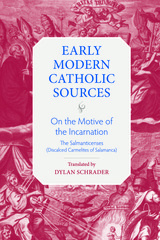 On the Motive of the Incarnation
The Salmanticenses
Catholic University of America Press, 2019 The Catholic University of America Press is pleased to announce a new series, Early Modern Catholic Sources, edited by Ulrich L. Lehner and Trent Pomplun. This series – the only one of its kind – will provide translations of early modern Catholic texts of theological interest written between 1450 and 1800.
The first volume in this series is On the Motive of the Incarnation, the first English translation of the seventeenth-century Discalced Carmelites at the University of Salmanca treatise on the motive of the Incarnation. Originally intended for students of their order, it became a major contribution to broader theological discourse. In this treatise, they defend the assertion that God intended Christ’s Incarnation essentially as a remedy for sin, such that if Adam had not sinned Christ would not have become incarnate, and that, at the same time, God intended all other works of nature and grace for the sake of Christ at their end. The Salmanticenses’ position thus combines elements of the Franciscan and Dominican traditions, stemming from the thought of Blessed John Duns Scotus and Saint Thomas Aquinas. This treatise is an exhaustive effort to show how the Scotistic emphasis on the primacy of Christ as the first willed and intended by God can be articulated within a Thomistic framework that acknowledges the contingency of the Incarnation on the need for redemption. In addition to the translation, the volume will include a brief introduction and extensive notes for theologians, historians, and students.
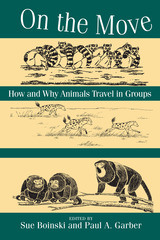 On the Move: How and Why Animals Travel in Groups
Edited by Sue Boinski and Paul A. Garber
University of Chicago Press, 2000 Getting from here to there may be simple for one individual. But as any parent, scout leader, or CEO knows, herding a whole troop in one direction is a lot more complicated. Who leads the group? Who decides where the group will travel, and using what information? How do they accomplish these tasks?
On the Move addresses these questions, examining the social, cognitive, and ecological processes that underlie patterns and strategies of group travel. Chapters discuss how factors such as group size, resource distribution and availability, the costs of travel, predation, social cohesion, and cognitive skills affect how individuals as well as social groups exploit their environment. Most chapters focus on field studies of a wide range of human and nonhuman primate groups, from squirrel monkeys to Turkana pastoralists, but chapters covering group travel in hyenas, birds, dolphins, and bees provide a broad taxonomic perspective and offer new insights into comparative questions, such as whether primates are unique in their ability to coordinate group-level activities.
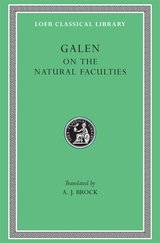 On the Natural Faculties
Galen
Harvard University Press Antiquity’s most prolific and influential medical writer and practitioner.
If the work of Hippocrates is taken as representing the foundation upon which the edifice of historical Greek medicine was raised, then the work of Galen, who lived some six hundred years later, may be looked upon as the summit of the same edifice.
He was born in Pergamum AD 129, and both there and in other academic centers of the Aegean pursued his medical studies before being appointed physician to the Pergamene gladiators in 157. Becoming dissatisfied with this type of practice he emigrated to Rome, where he soon won acknowledgement as the foremost medical authority of his time and where, with one brief interruption, he remained until his death in 199.
Galen’s merit is to have crystallized or brought into focus all the best work of the Greek medical schools which had preceded his own time. It is essentially in the form of Galenism that Greek medicine was transmitted to after ages.
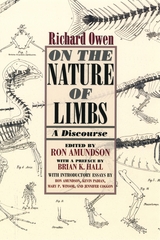 On the Nature of Limbs: A Discourse
Richard Owen
University of Chicago Press, 2007 The most prominent naturalist in Britain before Charles Darwin, Richard Owen made empirical discoveries and offered theoretical innovations that were crucial to the proof of evolution. Among his many lasting contributions to science was the first clear definition of the term homology—“the same organ in different animals under every variety of form and function.” He also graphically demonstrated that all vertebrate species were built on the same skeletal plan and devised the vertebrate archetype as a representation of the simplest common form of all vertebrates.
Just as Darwin’s ideas continue to propel the modern study of adaptation, so too will Owen’s contributions fuel the new interest in homology, organic form, and evolutionary developmental biology. His theory of the archetype and his views on species origins were first offered to the general public in On the Nature of Limbs, published in 1849. It reemerges here in a facsimile edition with introductory essays by prominent historians, philosophers, and practitioners from the modern evo-devo community.
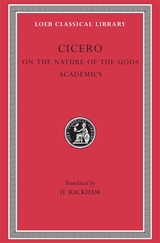 On the Nature of the Gods. Academics
Cicero
Harvard University Press The philosopher-statesman on theology and epistemology.
Cicero (Marcus Tullius, 106–43 BC), Roman lawyer, orator, politician, and philosopher, of whom we know more than of any other Roman, lived through the stirring era that saw the rise, dictatorship, and death of Julius Caesar in a tottering republic. In his political speeches especially and in his correspondence we see the excitement, tension, and intrigue of politics and the part he played in the turmoil of the time. Of about 106 speeches, delivered before the Roman people or the Senate if they were political, before jurors if judicial, fifty-eight survive (a few of them incompletely). In the fourteenth century Petrarch and other Italian humanists discovered manuscripts containing more than 900 letters of which more than 800 were written by Cicero and nearly 100 by others to him. These afford a revelation of the man all the more striking because most were not written for publication. Six rhetorical works survive and another in fragments. Philosophical works include seven extant major compositions and a number of others; and some lost. There is also poetry, some original, some as translations from the Greek.
The Loeb Classical Library edition of Cicero is in twenty-nine volumes.
 On the Nature of Things
Lucretius
Harvard University Press, 1975 Atomic atheism in verse.
Lucretius (Titus Lucretius Carus) lived ca. 99–ca. 55 BC, but the details of his career are unknown. He is the author of the great didactic poem in hexameters, De Rerum Natura (On the Nature of Things). In six books compounded of solid reasoning, brilliant imagination, and noble poetry, he expounds the scientific theories of the Greek philosopher Epicurus, with the aim of dispelling fear of the gods and fear of death and so enabling man to attain peace of mind and happiness.
In Book 1 he establishes the general principles of the atomic system, refutes the views of rival physicists, and proves the infinity of the universe and of its two ultimate constituents, matter and void. In Book 2 he explains atomic movement, the variety of atomic shapes, and argues that the atoms lack color, sensation, and other secondary qualities. In Book 3 he expounds the nature and composition of mind and spirit, proves their mortality, and argues that there is nothing to fear in death. Book 4 explains the nature of sensation and thought, and ends with an impressive account of sexual love. Book 5 describes the nature and formation of our world, astronomical phenomena, the beginnings of life on earth, and the development of civilization. In Book 6 the poet explains various atmospheric and terrestrial phenomena, including thunder, lightning, earthquakes, volcanoes, the magnet, and plagues.
The work is distinguished by the fervor and poetry of the author.
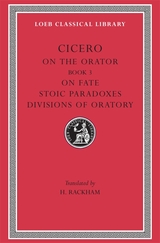 On the Orator: Book 3. On Fate. Stoic Paradoxes. Divisions of Oratory
Cicero
Harvard University Press, 2004 The philosopher-statesman on ethics and rhetoric.
Cicero (Marcus Tullius, 106–43 BC), Roman lawyer, orator, politician, and philosopher, of whom we know more than of any other Roman, lived through the stirring era that saw the rise, dictatorship, and death of Julius Caesar in a tottering republic. In his political speeches especially and in his correspondence we see the excitement, tension and intrigue of politics and the part he played in the turmoil of the time. Of about 106 speeches, delivered before the Roman people or the Senate if they were political, before jurors if judicial, fifty-eight survive (a few of them incompletely). In the fourteenth century Petrarch and other Italian humanists discovered manuscripts containing more than 900 letters of which more than 800 were written by Cicero and nearly 100 by others to him. These afford a revelation of the man all the more striking because most were not written for publication. Six rhetorical works survive and another in fragments. Philosophical works include seven extant major compositions and a number of others; and some lost. There is also poetry, some original, some as translations from the Greek.
The Loeb Classical Library edition of Cicero is in twenty-nine volumes.
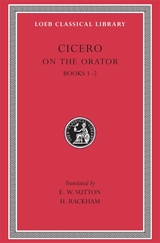 On the Orator: Books 1–2
Cicero
Harvard University Press The philosopher-statesman on ethics and rhetoric.
Cicero (Marcus Tullius, 106–43 BC), Roman lawyer, orator, politician, and philosopher, of whom we know more than of any other Roman, lived through the stirring era that saw the rise, dictatorship, and death of Julius Caesar in a tottering republic. In his political speeches especially and in his correspondence we see the excitement, tension and intrigue of politics and the part he played in the turmoil of the time. Of about 106 speeches, delivered before the Roman people or the Senate if they were political, before jurors if judicial, fifty-eight survive (a few of them incompletely). In the fourteenth century Petrarch and other Italian humanists discovered manuscripts containing more than 900 letters of which more than 800 were written by Cicero and nearly 100 by others to him. These afford a revelation of the man all the more striking because most were not written for publication. Six rhetorical works survive and another in fragments. Philosophical works include seven extant major compositions and a number of others; and some lost. There is also poetry, some original, some as translations from the Greek.
The Loeb Classical Library edition of Cicero is in twenty-nine volumes.
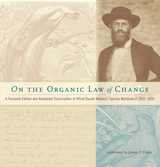 On the Organic Law of Change: A Facsimile Edition and Annotated Transcription of Alfred Russel Wallace's Species Notebook of 1855-1859
Alfred Russel Wallace
Harvard University Press, 2013 A giant of the discipline of biogeography and co-discoverer of natural selection, Alfred Russel Wallace was the most famous naturalist in the world when he died in 1913. To mark the centennial of Wallace's death, James Costa offers an elegant edition of the "Species Notebook" of 1855-1859, which Wallace kept during his legendary expedition in peninsular Malaysia, Indonesia, and western New Guinea. Presented in facsimile with text transcription and annotations, this never-before-published document provides a new window into the travels, personal trials, and scientific genius of the co-discoverer of natural selection.
In one section, headed "Note for Organic Law of Change"--an extended critique of geologist Charles Lyell's anti-evolutionary arguments--Wallace sketches a book he would never write, owing to the unexpected events of 1858. In that year he sent to Charles Darwin an essay announcing his discovery of the mechanism for species change: natural selection. Darwin's friends Lyell and the botanist Joseph Hooker proposed a "delicate arrangement": a joint reading at the Linnean Society of his essay with Darwin's earlier private writings on the subject. Darwin would publish On the Origin of Species in 1859, to much acclaim; pre-empted, Wallace's first book on evolution waited two decades, but by then he had abandoned his original concept.
On the Organic Law of Change realizes in spirit the project Wallace left unfinished, and asserts his stature as not only a founder of biogeography and the preeminent tropical biologist of his day but as Darwin's equal among the pioneers of evolution.
On the Origin of Language
Jean-Jacques Rousseau and Johann Gottfried Herder
University of Chicago Press, 1986 This volume combines Rousseau's essay on the origin of diverse languages with Herder's essay on the genesis of the faculty of speech. Rousseau's essay is important to semiotics and critical theory, as it plays a central role in Jacques Derrida's book Of Grammatology, and both essays are valuable historical and philosophical documents.
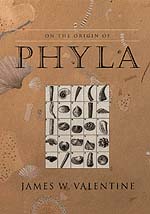 On the Origin of Phyla
James W. Valentine
University of Chicago Press, 2004 Owing its inspiration and title to On the Origin of Species, James W. Valentine's ambitious book synthesizes and applies the vast treasury of theory and research collected in the century and a half since Darwin's time. By investigating the origins of life's diversity, Valentine unlocks the mystery of the origin of phyla. One of the twentieth century's most distinguished paleobiologists, Valentine here integrates data from molecular genetics, evolutionary developmental biology, embryology, comparative morphology, and paleontology into an analysis of interest to scholars from any of these fields. He begins by examining the sorts of evidence that can be gleaned from fossils, molecules, and morphology, then reviews and compares the basic morphology and development of animal phyla, emphasizing the important design elements found in the bodyplans of both living and extinct phyla. Finally, Valentine undertakes the monumental task of developing models to explain the origin and early diversification of animal phyla, as well as their later evolutionary patterns. Truly a magnum opus, On the Origin of Phyla will take its place as one of the classic scientific texts of the twentieth century, affecting the work of paleontologists, morphologists, and developmental, molecular, and evolutionary biologists for decades to come. "A magisterial compendium . . . . Valentine offers a judicious evaluation of an astonishing array of evidence."—Richard Fortey, New Scientist
"Truly a magnum opus, On the Origin of Phyla has already taken its place as one of the classic scientific texts of the twentieth century, affecting the work of paleontologists, morphologists, and developmental, molecular, and evolutionary biologists for decades to come."—Ethology, Ecology & Evolution
"Valentine is one of the Renaissance minds of our time. . . . Darwin wisely called his best-known work On the Origin of the Species; the origin of the phyla is an even stickier problem, and Valentine deserves credit for tackling it at such breadth . . . . A magnificient book."—Stefan Bengtson, Nature
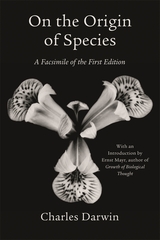 On the Origin of Species: A Facsimile of the First Edition
Charles Darwin
Harvard University Press, 1992 It is now generally recognized that the publication of Darwin's Origin of Species in 1859 not only decisively altered the basic concepts of biological theory but had a profound and lasting influence on social, philosophic, and religious thought. This work is rightly regarded as one of the most important books ever printed.
The first edition had a freshness and uncompromising directness that were considerably weakened in subsequent editions. Nearly all reprints were based on the greatly modified sixth edition (1872), and the only modern reprint changes pagination, making references to the original very difficult. Clearly, there has been a need for a facsimile reprint. Professor Mayr's introduction has a threefold purpose: to list passages in the first edition that Darwin altered in later editions; to point out instances in which Darwin was clearly pioneering; and to call attention to neglected passages that show Darwin as a much deeper thinker than has been recognized. No one can fail to be impressed by the originality of Darwin's treatment and by the intellectual challenge his work presents even to the modern reader.
 On the Origin of Stories: Evolution, Cognition, and Fiction
Brian Boyd
Harvard University Press, 2009 A century and a half after the publication of Origin of Species, evolutionary thinking has expanded beyond the field of biology to include virtually all human-related subjects—anthropology, archeology, psychology, economics, religion, morality, politics, culture, and art. Now a distinguished scholar offers the first comprehensive account of the evolutionary origins of art and storytelling. Brian Boyd explains why we tell stories, how our minds are shaped to understand them, and what difference an evolutionary understanding of human nature makes to stories we love.
Art is a specifically human adaptation, Boyd argues. It offers tangible advantages for human survival, and it derives from play, itself an adaptation widespread among more intelligent animals. More particularly, our fondness for storytelling has sharpened social cognition, encouraged cooperation, and fostered creativity.
After considering art as adaptation, Boyd examines Homer’s Odyssey and Dr. Seuss’s Horton Hears a Who! demonstrating how an evolutionary lens can offer new understanding and appreciation of specific works. What triggers our emotional engagement with these works? What patterns facilitate our responses? The need to hold an audience’s attention, Boyd underscores, is the fundamental problem facing all storytellers. Enduring artists arrive at solutions that appeal to cognitive universals: an insight out of step with contemporary criticism, which obscures both the individual and universal. Published for the bicentenary of Darwin’s birth and the 150th anniversary of the publication of Origin of Species, Boyd’s study embraces a Darwinian view of human nature and art, and offers a credo for a new humanism.
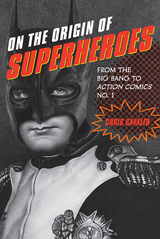 On the Origin of Superheroes: From the Big Bang to Action Comics No. 1
Chris Gavaler
University of Iowa Press, 2015 Most readers think that superheroes began with Superman’s appearance in Action Comics No. 1, but that Kryptonian rocket didn’t just drop out of the sky. By the time Superman’s creators were born, the superhero’s most defining elements—secret identities, aliases, disguises, signature symbols, traumatic origin stories, extraordinary powers, self-sacrificing altruism—were already well-rehearsed standards. Superheroes have a sprawling, action-packed history that predates the Man of Steel by decades and even centuries. On the Origin of Superheroes is a quirky, personal tour of the mythology, literature, philosophy, history, and grand swirl of ideas that have permeated western culture in the centuries leading up to the first appearance of superheroes (as we know them today) in 1938.
From the creation of the universe, through mythological heroes and gods, to folklore, ancient philosophy, revolutionary manifestos, discarded scientific theories, and gothic monsters, the sweep and scale of the superhero’s origin story is truly epic. We will travel from Jane Austen’s Bath to Edgar Rice Burroughs’s Mars to Owen Wister’s Wyoming, with some surprising stops along the way. We’ll meet mad scientists, Napoleonic dictators, costumed murderers, diabolical madmen, blackmailers, pirates, Wild West outlaws, eugenicists, the KKK, Victorian do-gooders, detectives, aliens, vampires, and pulp vigilantes (to name just a few). Chris Gavaler is your tour guide through this fascinating, sometimes dark, often funny, but always surprising prehistory of the most popular figure in pop culture today. In a way, superheroes have always been with us: they are a fossil record of our greatest aspirations and our worst fears and failings.
 On the Outside Looking Out: John Ashbery’s Poetry
John Shoptaw
Harvard University Press, 1994 One of America's most important poets, John Ashbery has dazzled readers with the elusive pleasures of his work for over four decades. John Shoptaw heightens those pleasures by discovering the inner and outer workings of this incomparable poet. In readings attuned to the textual, sexual, and historical specificities of Ashbery's poetic project, from Some Trees through the vast summation of Flow Chart, Shoptaw introduces readers to the poet's processes of production.
The first reader with full access to Ashbery's manuscripts and source materials, he is able to reveal the poet at work. He shows us, for instance, how Ashbery built “Europe” and “The Skaters” upon children's books picked up at a Paris quai and how he drew on his own unpublished lyrics for the long dialogue “Fantasia on The Nut-Brown Maid.” Shoptaw argues that Ashbery's poems are less self-referential or nonrepresentational than misrepresentative: fractious assemblies of odd details, cryptic substitutions, and artful and artless discourses. He traces Ashbery's misrepresentative poetics to diverse sources—Walt Whitman, Raymond Roussel, W. H. Auden, Gertrude Stein, Elizabeth Bishop, Jackson Pollock, and Elliott Carter, among others. Ashbery's poetry, as Shoptaw demonstrates, is inevitably “homotextual” while refraining from taking homosexuality as a topic.
Ashbery disorients his poems with unexpected silences, lapses or wrong turns in arguments, mock confessions, and sudden abstractions. As this book reveals, Ashbery's misrepresentations yield a richer and stranger representation of ordinary experience. Ashbery takes his paradoxical stand on the outside looking out of an American culture and history we recognize as our own.
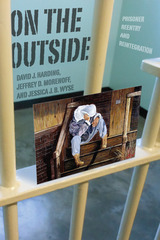 On the Outside: Prisoner Reentry and Reintegration
David J. Harding, Jeffrey D. Morenoff, and Jessica J. B. Wyse
University of Chicago Press, 2019 One of the Vera Institute of Justice’s Best Criminal Justice Books of 2019 America’s high incarceration rates are a well-known facet of contemporary political conversations. Mentioned far less often is what happens to the nearly 700,000 former prisoners who rejoin society each year. On the Outside examines the lives of twenty-two people—varied in race and gender but united by their time in the criminal justice system—as they pass out of the prison gates and back into the world. The book takes a clear-eyed look at the challenges faced by formerly incarcerated citizens as they try to find work, housing, and stable communities. Standing alongside these individual portraits is a quantitative study conducted by the authors that followed every state prisoner in Michigan who was released on parole in 2003 (roughly 11,000 individuals) for the next seven years, providing a comprehensive view of their postprison neighborhoods, families, employment, and contact with the parole system. On the Outside delivers a powerful combination of hard data and personal narrative that shows why our country continues to struggle with the social and economic reintegration of the formerly incarcerated. For further information, including an instructor guide and slide deck, please visit: http://ontheoutsidebook.us/home/instructors
 On The Padres' Trail
Christopher Vecsey
University of Notre Dame Press, 1996 Vecsey recounts and analyzes the influence of Roman Catholicism on American Indians, including both positive and negative effects. On the Padre's Trail begins with the arrival of Europeans in the New World and the invasion of the Caribbean to the expansion of Catholicism into New Spain. This series, the first full-length treatment of the subject, encompasses five hundred years and much of North America.
----------
"Christopher Vecsey's book transcends time and cultures by going beyond the historical continuum and expanding its themes into the modern period. Not satisfied with simply narrating the history of evangelization of Native Americans by Spanish missionaries, Vecsey sought the threads that connect the present with the past." -Colonial Latin American Historical Review
"The author of this study, a professor of religion, specializes in Native American studies and Roman Catholic history. This book, the first installment of the author's projected multivolume series examining the history of Native American Roman Catholicism throughout the United States, explores the beliefs of the Southwestern mission Indians and their descendants. Although organized chronologically, its disciplinary approach is sociological and anthropological rather than historical, focusing on religious practices and theological beliefs. This viewpoint, however, does not detract from the book's academic quality, scholarship, and potential usefulness to historians. It is well written, extensively researched, and cogently organized. As well, the book provides easily understood explanations of complex theological and religious doctrines." ÂSouthwestern Historical Quarterly
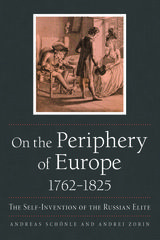 On the Periphery of Europe, 1762–1825: The Self-Invention of the Russian Elite
Andreas Schönle and Andrei Zorin
Northern Illinois University Press, 2018 Throughout the eighteenth century, the Russian elite assimilated the ideas, emotions, and practices of the aristocracy in Western countries to various degrees, while retaining a strong sense of their distinctive identity. In On the Periphery of Europe, 1762–1825, Andreas Schönle and Andrei Zorin examine the principal manifestations of Europeanization for Russian elites in their daily lives, through the import of material culture, the adoption of certain social practices, travel, reading patterns, and artistic consumption. The authors consider five major sites of Europeanization: court culture, religion, education, literature, and provincial life.
The Europeanization of the Russian elite paradoxically strengthened its pride in its Russianness, precisely because it participated in networks of interaction and exchange with European elites and shared in their linguistic and cultural capital. In this way, Europeanization generated forms of sociability that helped the elite consolidate its corporate identity as distinct from court society and also from the people. The Europeanization of Russia was uniquely intense, complex, and pervasive, as it aimed not only to emulate forms of behavior, but to forge an elite that was intrinsically European, while remaining Russian. The second of a two-volume project (the first is a multi-authored collection of case studies), this insightful study will appeal to scholars and students of Russian and East European history and culture, as well as those interested in transnational processes.
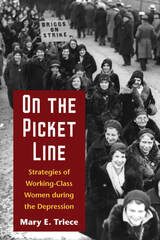 On the Picket Line: Strategies of Working-Class Women during the Depression
Mary Triece
University of Illinois Press, 2006 Bonnie Ritter Book Award, National Communication Association's Feminist and Women Studies Division, 2008. On the Picket Line uncovers the voices of working-class women, particularly those active in the Communist Party, U.S.A., in order to examine how these individuals confronted the tensions between their roles as workers, wives, mothers, and consumers. Combining critical analysis, Marxist and feminist theory, and labor history, Mary E. Triece analyzes the protest tactics employed by working class women to challenge dominant ideologies surrounding domesticity. She details the rhetorical strategies used by women to argue for their rights as workers in the paid labor force and as caregivers in the home. Their overtly coercive tactics included numerous sit-ins, strikes, and boycotts that won tangible gains for working poor and unemployed women. The book also gives voice to influential figures in the 1930s labor movement (many of whom were members of the Communist Party, U.S.A.), such as Ella Reeve Bloor, Margaret Cowl, Anna Damon, Ann Burlak, and Grace Hutchins. Triece ultimately argues that these confrontational protest tactics of the 1930s remain relevant in today’s fights for more humane workplaces and better living conditions.
On the Placement and Morphology of Clitics
Aaron Halpern
CSLI, 1995 Using data from a variety of languages, this book investigates the place of clitics in the theory of language structure, and their implications for the relationships between syntax, morphology and phonology. It is argued that the least powerful theory of language requires us to recognise at least two classes of clitics, one with the syntax of independent phrases and the other with the syntax of inflectional affixes. It is also argued that prosodic conditions may influence the surface position of clitics beyond what may be accomplished by filtering potential syntactic structures. Finally, the relationship between syntactic, morphological, and phonological constituents within wordlike elements is explored.
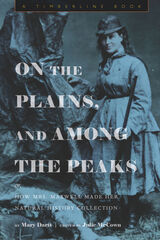 On the Plains, and Among the Peaks: or, How Mrs. Maxwell Made Her Natural History Collection: by Mary Dartt
Julie McCown
University Press of Colorado, 2021 American naturalist and taxidermist Martha Maxwell became famous in the 1870s for her skill and expertise in collecting and preserving specimens of Colorado’s wildlife but is virtually unknown today. On the Plains, and Among the Peaks, written in 1879 by Maxwell’s half-sister Mary Dartt, provides a fascinating case study of how women practiced natural history and taxidermy, as well as a fresh look at the early exploration and settlement of Colorado.
Dartt’s book tells the story of Maxwell’s lifelong passion and dedication to work and education that made her a pioneer in more ways than one. It catalogs her important scientific contributions and development of museum habitat groupings and lifelike taxidermy mounts, showcases engaging accounts of wilderness excursions on the frontier of the Western United States in the 1860s and 1870s, and testifies to her resolve to show that women were capable of succeeding in traditionally male-dominated fields.
This scholarly edition of On the Plains, and Among the Peaks will spark renewed interest in Maxwell and Dartt as neglected figures in nineteenth-century US history and literature, opening a conversation that other literary scholars and historians will join to further situate their work within the numerous disciplines to which it speaks, including nineteenth-century American literature; women’s, western, environmental, and natural history; and gender, museum, and animal studies.
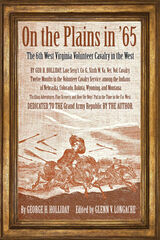 On the Plains in ’65: The 6th West Virginia Volunteer Cavalry in the West
George H. Holliday
Ohio University Press, 2021 A new scholarly edition of an Ohio boy soldier’s revealing post-Civil War memoir. This annotated edition of Holliday’s recollections—known primarily among historians of the American West—re-contextualizes his memoir to include his boyhood in southern Ohio and the largely untold story of the hundreds of Buckeyes who crossed the Ohio River to serve their country in Virginia (later West Virginia) regiments, ultimately traveling across Kansas, Nebraska, Colorado, and Wyoming to safeguard mail and stage routes along the celebrated Oregon Trail during a pivotal time in American history. Glenn Longacre’s extensive research in federal, state, and local archives, manuscript collections, and period newspapers complements his correspondence with the living descendants of Holliday and other soldiers. His research integrates this story deservedly as part of Appalachian history before, during, and after the Civil War. From this perspective it addresses an entirely new audience of Appalachian studies scholars, Civil War and frontier history enthusiasts, students, and general readers.
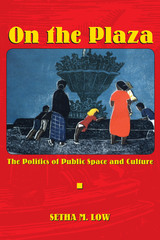 On the Plaza: The Politics of Public Space and Culture
By Setha M. Low
University of Texas Press, 2000 Robert B. Textor Prize for Excellence in Anticipatory Anthropology, American Anthropological Association, 2000
Honorable Mention, Victor Turner Award, Society for Humanistic Anthropology, 2001
Leeds Prize, Society of Urban, National, and Transnational/Global Anthropology, 2001 Friendly gossip, political rallies, outdoor concerts, drugs, shoeshines, and sex-for-sale—almost every aspect of Latin American life has its place and time in the public plaza. In this wide-ranging, multi-disciplinary study, Setha M. Low explores the interplay of space and culture in the plaza, showing how culture acts to shape public spaces and how the physical form of the plaza encodes the social and economic relations within its city. Low centers her study on two plazas in San José, Costa Rica, with comparisons to public plazas in the United States, Europe, and elsewhere. She interweaves ethnography, history, literature, and personal narrative to capture the ambiance and meaning of the plaza. She also uncovers the contradictory ethnohistories of the European and indigenous origins of the Latin American plaza and explains why the plaza is often a politically contested space.
On the Poetry of Philip Levine: Stranger to Nothing
Christopher Buckley, Editor
University of Michigan Press, 1990 Readers and critics alike have applauded Philip Levine's poems for their eloquent and elegiac narrative and their vivas for the dignity of the human spirit. In 1987 Levine received the esteemed Ruth Lilly Prize, given by the Modern Poetry Association and the American Council for the Arts in recognition of outstanding poetic achievement. On the Poetry of Philip Levine, the first critical collection to focus on this original and highly acclaimed poet, selects essays and reviews that span three decades. Included are pieces by Richard Howard, Stephen Yenser, Ralph J. Mills, Jr., and Dave Smith. UNDER DISCUSSION Donald Hall, General Editor
 On the Porch: Life and Music in Terlingua, Texas
W. Chase Peeler
University of Texas Press, 2021 In sunbaked Terlingua, Texas (pop., a few hundred), residents joke that there is a musician under every rock. Located ten miles from Mexico in one of the remotest corners of the United States, the town had a recording studio before it had a school, a well-stocked grocery store, or even a water utility. Open jam sessions are a daily ritual, and some songwriters make a living from their craft despite being thousands of miles from New York or Nashville. Why does such a tiny and isolated place ring with singing and guitars? Based on more than two years of on-the-ground research, On the Porch tells the story of this small but remarkable community. Chase Peeler invites us into the music, introducing us to a cast of characters as unique as the town itself. He reveals how novices and experts perform together—a rarity in contemporary America. He recounts the devastation brought on by a border closure and describes how music is once again uniting people across the Rio Grande. He considers the impact of gentrification in an off-the-grid paradise, and how this threatens to transform a precarious musical ecosystem. On the Porch is a celebration of human musicality, of the role that music plays and can play in our lives, both in Terlingua and beyond.
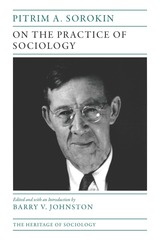 On the Practice of Sociology
Pitirim A. Sorokin
University of Chicago Press, 1998 Sorokin (1889-1968) rose from a peasant childhood in Russia to become one of the most erudite, insightful, and critical figures in the history of sociology. He was, however, considered both a pioneer and an outcast.
His early American works opened new vistas in rural sociology, social stratification, and theory. They provided an elegant standard for scientific sociology and won him the founding chairmanship of sociology at Harvard University. A continuous innovator, he next explored the vast expanse of human affairs, and outlined the surfacing crisis of modernity. At the Harvard Research Center for Creative Altruism he developed a blueprint for social reconstruction. Such interests combined with a prophetic and combative style of disagreement drove him to the margins of a discipline hungry for acceptance as a science. In the early1960s, his work was once again recognized, and he became president of the American Sociological Association.
Including essays that range from his early Russian years to his final works in the 60s, this collection provides a much-needed introduction to one of sociology's most controversial thinkers.
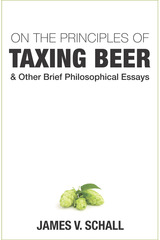 On the Principles of Taxing Beer: and Other Brief Philosophical Essays
James V. Schall
St. Augustine's Press, 2015 What is real and what is noble, as well as what is deranged and wrong, can often be stated briefly. Nietzsche was famous for his succinct aphorisms and epigrams. Aquinas in one of his responses could manage to state clearly what he held to be true. Ultimately, all of our thought needs to be so refined and concentrated that we can see the point. So these are “brief” essays and they are largely of a philosophical “hue.” They touch on things worth thinking about. Indeed, often they consider things we really need to think about if our lives are to make sense.
The advantage of a collection of essays is that it is free to talk about many things. It can speak of them in a learned way or in an amused and humorous way. As Chesterton said, there is no necessary conflict between what is true and what is funny. Oftentimes, the greatest things we learn are through laughter, even laughter at ourselves and our own foibles and faults.
So these essays are “brief.” And they are largely of philosophical import. At first sight, taxing beer may seem to have no serious principle, except perhaps for the brewer and the consumer. But wherever there is reality, we can find something to learn.
Each of these essays begins with the proposition “on”—this is a classical form of essay in the English language. Belloc, one the essay’s greatest masters, wrote a book simply entitled “ON”—and several other books with that introductory “ON” to begin it. The word has the advantage of focusing our attention on some idea, place, book, person, or reality that we happen to come across and notice, then notice again, then wonder about.
These essays are relatively short, often lightsome, hopefully always with a consideration that illumines the world through the mind of the reader. These essays are written in the spirit that the things we encounter provoke us, our minds. We need to come to terms, to understand what we come across in our pathways through this world. Often the best way to know what we observe or confront is to write about it, preferably briefly and with some philosophical insight. This is what we do here.
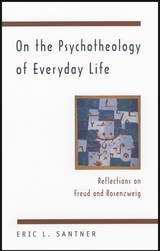 On the Psychotheology of Everyday Life: Reflections on Freud and Rosenzweig
Eric L. Santner
University of Chicago Press, 2001 In On the Psychotheology of Everyday Life, Eric Santner puts Sigmund Freud in dialogue with his contemporary Franz Rosenzweig in the service of reimagining ethical and political life. By exploring the theological dimensions of Freud's writings and revealing unexpected psychoanalytic implications in the religious philosophy of Rosenzweig's masterwork, The Star of Redemption, Santner makes an original argument for understanding religions of revelation in therapeutic terms, and offers a penetrating look at how this understanding suggests fruitful ways of reconceiving political community.
Santner's crucial innovation in this new study is to bring the theological notion of revelation into a broadly psychoanalytic field, where it can be understood as a force that opens the self to everyday life and encourages accountability within the larger world. Revelation itself becomes redefined as an openness toward what is singular, enigmatic, even uncanny about the Other, whether neighbor or stranger, thereby linking a theory of drives and desire to a critical account of sociality. Santner illuminates what it means to be genuinely open to another human being or culture and to share and take responsibility for one's implication in the dilemmas of difference.
By bringing Freud and Rosenzweig together, Santner not only clarifies in new and surprising ways the profound connections between psychoanalysis and the Judeo-Christian tradition, he makes the resources of both available to contemporary efforts to rethink concepts of community and cross-cultural communication.
On the Ragged Edge of Medicine: Doctoring Among the Dispossessed
Patricia Kullberg
Oregon State University Press, 2017 On the Ragged Edge of Medicine offers a glimpse into a medical practice for the homeless and urban poor. Told through fifteen patient vignettes, and drawn from the author’s decades of experience in Portland, Oregon, this revealing memoir illuminates the impact of poverty on the delivery of health services and the ways in which people adapt and survive (or don’t survive) in conditions of abuse and deprivation. Kullberg’s stories show the direct and sometimes devastating effects of poverty on public health, poignantly demonstrating that medicine is as much a social enterprise as a scientific one.
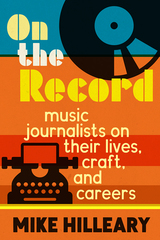 On the Record: Music Journalists on Their Lives, Craft, and Careers
Mike Hilleary
University of Massachusetts Press, 2020 Rolling Stone, Creem, the Village Voice, SPIN, Billboard, Stereogum, Pitchfork. How did the music journalists who write for these popular publications break into the business? How have they honed their writing and interviewing techniques? How have they managed to thrive amid major changes in the industry, as print magazines have declined and digital publications have emerged? What does it take to turn a love of music into a professional writing career?
Bringing together interviews from an impressive roster of over fifty music writers, Mike Hilleary offers up an engaging and wide-reaching examination of the past and potential future of music journalism. This accessible oral history contains professional insights into journalists’ craft and purpose, practical advice, and essential life lessons from a diverse cast of music writers—ranging from long-respected veterans of the field such as Rob Sheffield, Jessica Hopper, Ann Powers, and Chuck Klosterman to must-read modern voices including Amanda Petrusich, Hanif Abdurraqib, Lindsay Zoladz, and Jayson Greene. Honest and absorbing, On the Record will educate and enlighten anyone who wants to write about music, or anyone who wants a better understanding about those who do.
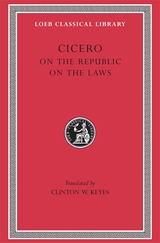 On the Republic. On the Laws
Cicero
Harvard University Press The statesman on statecraft.
Cicero (Marcus Tullius, 106–43 BC), Roman lawyer, orator, politician, and philosopher, of whom we know more than of any other Roman, lived through the stirring era that saw the rise, dictatorship, and death of Julius Caesar in a tottering republic. In his political speeches especially and in his correspondence we see the excitement, tension, and intrigue of politics and the part he played in the turmoil of the time. Of about 106 speeches, delivered before the Roman people or the Senate if they were political, before jurors if judicial, fifty-eight survive (a few of them incompletely). In the fourteenth century Petrarch and other Italian humanists discovered manuscripts containing more than 900 letters of which more than 800 were written by Cicero and nearly 100 by others to him. These afford a revelation of the man all the more striking because most were not written for publication. Six rhetorical works survive and another in fragments. Philosophical works include seven extant major compositions and a number of others; and some lost. There is also poetry, some original, some as translations from the Greek.
The Loeb Classical Library edition of Cicero is in twenty-nine volumes.
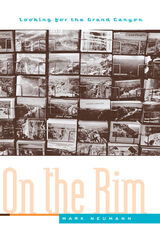 On The Rim: Looking for the Grand Canyon
Mark Neumann
University of Minnesota Press, 2001 Why do nearly five million people travel to the Grand Canyon each year? Mark Neumann answers this question with a book as compelling as the panoramic vistas of the canyon. In On the Rim, he describes how the Grand Canyon became an internationally renowned tourist attraction and cultural icon, and delves into the meanings the place holds for the individuals who live, work, and travel there. Weaving history, ethnography, documentary photography, and autobiography, Neumann exposes the roots—the personal and social dimensions—of America’s pursuit of leisure. He shows how people visiting the Grand Canyon create their own experiences, even while they are affected by one hundred years of social history and cultural expectations. On the Rim examines the lines between progress and nostalgia, science and spirituality, nature and culture, authenticity and mass production, and work and leisure—all of which crisscross the tourist experience. To support his argument, Neumann uses evidence from tourist registers and Park Service records, first-person narratives, interviews, and scenes from television shows, Hollywood movies, and popular novels. Heavily illustrated with historical and contemporary photographs, the narrative shifts back and forth between early descriptions of the canyon and modern tourist stories, the past illuminating the present at every step. From Albert Einstein’s visit and the hunt for the fugitive Danny Horning to the everyday experiences of local Native Americans, park rangers, and vacationing families, Neumann reminds us that every trip to the Grand Canyon is a complex journey, fueled by shared expectations but always open to the possibility of surprise. On the Rim is a multilayered, nuanced study of the place and its many visitors.
On the Road to Emmaus: The Catholic Dialogue with America and Modernity
Glenn W. Olsen
Catholic University of America Press, 2012 In distinctive voice and tone, cultural commentator Glenn W. Olsen presents his latest work on the place of Catholicism in American history. Here he clarifies the meaning of American modernity for Catholics and shows the conflicts and tensions confronting the religious person today.
 On the Road to the Wolf’s Lair: German Resistance to Hitler
Theodore S. Hamerow
Harvard University Press, 1997 In the beginning, they rallied behind Hitler in the national interest of Germany; in the end, they sacrificed their lives to assassinate him. A history of German resistance to Hitler in high places, this book offers a glimpse into one of the most intractable mysteries. Why did high-ranking army officers, civil servants, and religious leaders support Hitler? Why did they ultimately turn against him? What transformed these unlikely men, most of them elitist, militaristic, and fiercely nationalistic, into martyrs to a universal ideal?
The resisters in On the Road to the Wolf's Lair are not the singular souls doomed to failure by the massive Nazi machinery, but those who emerged from the Third Reich itself--those people whose cultural, administrative, and military positions allowed them, ultimately, to form a systematic, organized opposition to the Nazi regime. These were people with a vested interest in the Third Reich, and their slow and painful awakening to its evils makes a dramatic story, marked as much by temporizing and compromise, vacillation and reluctance--a resistance to conscience--as by the intrigue and heroics of political resistance that finally emerged. Hamerow follows these men as, one by one, they find themselves overwhelmed by guilt and contrition over their support of a murderous regime. He shows how their awakened moral reckonings and higher interests overrode lifetime habits and disciplines on the road to "the wolf's lair."
The result is an unsparing history of the German resistance to Hitler--one where the players emerge for the first time as real people with complex motives and evolving characters. Almost a history of the possibility of an emerging collective moral conscience within a destructive environment, the book adds to our understanding of the fall of the Third Reich and of the task of history itself.
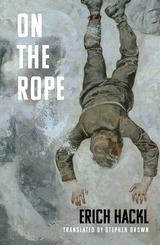 On the Rope: A Hero's Story
Erich Hackl
Haus Publishing, 2020 As German Jews, Regina Steinig and her daughter Lucia are forced into hiding during the Second World War. Finding refuge in the workshop of a local beltmaker, they hold on to each other as they live in constant fear of discovery by his neighbors and customers. When their hideaway is damaged in an air raid in the closing months of the war, the women are forced on the run and are locked in a desperate battle for survival.
Based on a true story, On the Rope is an account of extreme courage in the face of danger, violence, and hatred. Exploring themes of displacement and survival, friendship and family, it ends with the women’s efforts to bring recognition the selfless heroism of those who faced tremendous personal risk in order to protect them. A novella by one of Europe’s most prominent literary novelists, On the Rope layers deeply personal stories in a grounded historical account of life before, during, and after the Second World War. It paints a vivid picture of the hardships forced upon people by conflict and separation, depicting the forming and unravelling of relationships as a fact of life.
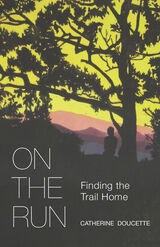 On the Run: Finding the Trail Home
Catherine Doucette
Oregon State University Press, 2021 Catherine Doucette is a backcountry skier, horseback rider, and mountaineer—roles that have resulted in adventures where she is often the only woman in a group of men. Starting from a young age, she pushed through the wilderness with her brothers, friends, and partners, gaining the skill and judgement to tackle progressively bigger goals until she became an accomplished outdoorswoman.
For over a decade, Doucette chased winter around the world to ski, from the White Mountains of her native New Hampshire to the slopes of Alaska, British Columbia, California, Argentina, Switzerland, and beyond. But she always kept one eye toward living a more settled life and putting her heart on the line if someone would just ask her to. Like other women who choose or yearn to be in the wilderness, she wrestled to reconcile her outdoor ambitions with society’s expectations of women.
The personal essays collected in On the Run touch on the author’s origins in New Hampshire while focusing on the lure of big mountains in the West. They celebrate the comfort, challenge, and community found in expanses of wilderness while confronting the limitations and sacrifices that come with a transient, outdoor lifestyle. In a voice both searching and deeply grounded, Doucette contends with avalanches and whitewater along with the less dramatic but equally important questions of belonging. Anyone who has searched to define home, who has been called by mountains, or by movement, will feel at home in these pages.
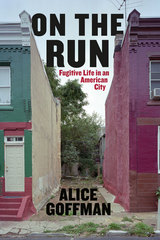 On the Run: Fugitive Life in an American City
Alice Goffman
University of Chicago Press, 2014 Forty years in, the War on Drugs has done almost nothing to prevent drugs from being sold or used, but it has nonetheless created a little-known surveillance state in America’s most disadvantaged neighborhoods. Arrest quotas and high-tech surveillance techniques criminalize entire blocks, and transform the very associations that should stabilize young lives—family, relationships, jobs—into liabilities, as the police use such relationships to track down suspects, demand information, and threaten consequences.
Alice Goffman spent six years living in one such neighborhood in Philadelphia, and her close observations and often harrowing stories reveal the pernicious effects of this pervasive policing. Goffman introduces us to an unforgettable cast of young African American men who are caught up in this web of warrants and surveillance—some of them small-time drug dealers, others just ordinary guys dealing with limited choices. All find the web of presumed criminality, built as it is on the very associations and friendships that make up a life, nearly impossible to escape. We watch as the pleasures of summer-evening stoop-sitting are shattered by the arrival of a carful of cops looking to serve a warrant; we watch—and can’t help but be shocked—as teenagers teach their younger siblings and cousins how to run from the police (and, crucially, to keep away from friends and family so they can stay hidden); and we see, over and over, the relentless toll that the presumption of criminality takes on families—and futures.
While not denying the problems of the drug trade, and the violence that often accompanies it, through her gripping accounts of daily life in the forgotten neighborhoods of America's cities, Goffman makes it impossible for us to ignore the very real human costs of our failed response—the blighting of entire neighborhoods, and the needless sacrifice of whole generations.
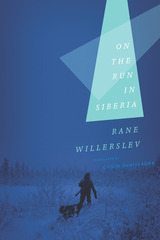 On the Run in Siberia
Rane Willerslev
University of Minnesota Press, 2012 If I had let myself be ruled by reason alone, I would surely be lying dead somewhere or another in the Siberian frost.
The Siberian taiga: a massive forest region of roughly 4.5 million square miles, stretching from the Ural Mountains to the Bering Sea, breathtakingly beautiful and the coldest inhabited region in the world. Winter temperatures plummet to a bitter 97 degrees below zero, and beneath the permafrost lie the fossilized remains of mammoths, woolly rhinoceroses, and other ice age giants. For the Yukaghir, an indigenous people of the taiga, hunting sable is both an economic necessity and a spiritual experience—where trusting dreams and omens is as necessary as following animal tracks. Since the fall of Communism, a corrupt regional corporation has monopolized the fur trade, forcing the Yukaghir hunters into impoverished servitude. Enter Rane Willerslev, a young Danish anthropologist who ventures into this frozen land on an idealistic mission to organize a fair-trade fur cooperative with the hunters. From the outset, things go terribly wrong. The regional fur company, with ties to corrupt public officials, proves it will stop at nothing to maintain its monopoly: one of Willerslev’s Yukaghir business partners is arrested on spurious charges of poaching and illegal trading; another drowns mysteriously. When police are sent to arrest him, Willerslev fears for his life, and he and a local hunter flee to a remote hunting lodge even deeper in the icy wilderness. Their situation turns even more desperate right away: they manage to kill a moose but lose the meat to predators and begin to starve, frostbitten and isolated in the frozen taiga. Thus begins Willerslev’s extraordinary, chilling tale of one year living in exile among Yukaghir hunters in the stark Siberian taiga region. At turns shocking and quietly moving, On the Run in Siberia is a pulse-pounding tale of idealism, political corruption, starvation, and survival (with a timely assist from Vladimir Putin) as well as a striking portrait of the Yukaghirs’ shamanistic tradition and their threatened way of life, a drama unfolding daily in one of the world’s coldest, most enthralling landscapes.
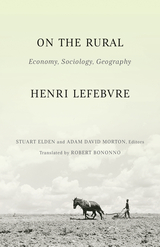 On the Rural: Economy, Sociology, Geography
Henri Lefebvre
University of Minnesota Press, 2022 A collection of previously untranslated writings by Henri Lefebvre on rural sociology, situating his research in relation to wider Marxist work
On the Rural is the first English collection to translate Lefebvre’s crucial but lesser-known writings on rural sociology and political economy, presenting a wide-ranging approach to understanding the historical and rural sociology of precapitalist social forms, their endurance today, and conditions of dispossession and uneven development. In On the Rural, Stuart Elden and Adam David Morton present Lefebvre’s key works on rural questions, including the first half of his book Du rural à l’urbain and supplementary texts, two of which are largely unknown conference presentations published outside France. On the Rural offers methodological orientations for addressing questions of economy, sociology, and geography by deploying insights from spatial political economy to decipher the rural as a terrain and stake of capitalist transformation. By doing so, it reveals the production of the rural as a key site of capitalist development and as a space of struggle. This volume delivers a careful translation—supplemented with extensive notes and a substantive introduction—to cement Lefebvre’s central contribution to the political economy of rural sociology and geography.
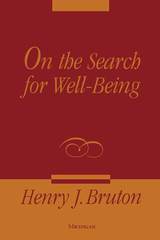 On the Search for Well-Being
Henry J. Bruton
University of Michigan Press, 2001 This book takes on one of the great questions of the day: Why are some countries enormously rich and others so heartbreakingly poor?
Henry J. Bruton organizes the discussion around three basic ideas. The first is that well-being reflects not only the availability and distribution of goods and services, but also employment, values, institutions, and quality of preferences. The second is that ignorance is ubiquitous; hence growth of well-being depends primarily on commitments to searching and learning. The extent of such commitments is embedded in deep-seated characteristics of the society, its history, and the degree to which it can look ahead. The third is that economic policy-making is largely a matter of muddling through; furthermore, the idea that an economy can be assumed to be in a general equilibrium and can therefore be left to itself must be rejected. The author explores these ideas and their implications for the processes of growth and for policies to facilitate that growth.
The book breaks new ground in its emphasis on ignorance and learning and its generalized definition of well-being. Drawing from contemporary work in evolutionary economics, the economics of technological change, analytical economic history, and the new political economy, this work should be of interest to historians, sociologists, and students of technology, as well as economists. While directly concerned with development, it has implications for labor, trade, economic history, and industrial organization.
Henry J. Bruton is Professor of Economics, Williams College.
 On the Semicivilized: Coloniality, Finance, and Embodied Sovereignty in Cairo
Julia Elyachar
Duke University Press, 2025 On the Semicivilized by Julia Elyachar is a sweeping analysis of the coloniality that shaped—and blocked—sovereign futures for those dubbed barbarian and semicivilized in the former Ottoman Empire. Drawing on thirty years of ethnographic research in Cairo, family archives from Palestine and Egypt, and research on Ottoman debt and finance to rethink catastrophe and potentiality in Cairo and the world today, Elyachar theorizes a global condition of the “semicivilized” marked by nonsovereign futures, crippling debts, and the constant specter of violence exercised by those who call themselves civilized. Originally used to describe the Ottoman Empire, whose perceived “civilizational differences” rendered it incompatible with a Western-dominated global order, semicivilized came to denote lands where unitary territorial sovereignty was stymied at the end of WWI. Elyachar’s theorizing offers a new analytic vocabulary for thinking beyond territoriality, postcolonialism, and the “civilized"/"primitive” divide. Looking at the world from the perspective of the semicivilized, Elyachar argues, allows us to shift attention to embodied infrastructures, collective lives, and practices of moving and acting in common that bypass lingering assumptions of territorialism and unitary sovereign rule.
 On the Shoreline of Knowledge: Irish Wanderings
Chris Arthur
University of Iowa Press, 2012 The carefully crafted, meditative essays in On the Shoreline of Knowledge sometimes start from unlikely objects or thoughts, a pencil or some fragments of commonplace conversation, but they soon lead the reader to consider fundamental themes in human experience. The unexpected circumnavigation of the ordinary unerringly gets to the heart of the matter. Bringing a diverse range of material into play, from fifteenth-century Japanese Zen Buddhism to how we look at paintings, and from the nature of a briefcase to the ancient nest-sites of gyrfalcons, Chris Arthur reveals the extraordinary dimensions woven invisibly into the ordinary things around us. Compared to Loren Eiseley, George Eliot, Seamus Heaney, Aldo Leopold, V. S. Naipaul, W. G. Sebald, W. B. Yeats, and other literary luminaries, he is a master essayist whose work has quietly been gathering an impressive cargo of critical acclaim. Arthur speaks with an Irish accent, rooting the book in his own unique vision of the world, but he addresses elemental issues of life and death, love and loss, that circle the world and entwine us all.
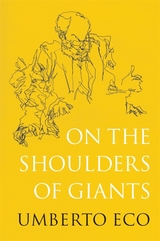 On the Shoulders of Giants
Umberto Eco
Harvard University Press, 2019 A posthumous collection of essays by one of our greatest contemporary thinkers that provides a towering vision of Western culture.
In Umberto Eco’s first novel, The Name of the Rose, Nicholas of Morimondo laments, “We no longer have the learning of the ancients, the age of giants is past!” To which the protagonist, William of Baskerville, replies: “We are dwarfs, but dwarfs who stand on the shoulders of those giants, and small though we are, we sometimes manage to see farther on the horizon than they.”
On the Shoulders of Giants is a collection of essays based on lectures Eco famously delivered at the Milanesiana Festival in Milan over the last fifteen years of his life. Previously unpublished, the essays explore themes he returned to again and again in his writing: the roots of Western culture and the origin of language, the nature of beauty and ugliness, the potency of conspiracies, the lure of mysteries, and the imperfections of art. Eco examines the dynamics of creativity and considers how every act of innovation occurs in conversation with a superior ancestor.
In these playful, witty, and breathtakingly erudite essays, we encounter an intellectual who reads comic strips, reflects on Heraclitus, Dante, and Rimbaud, listens to Carla Bruni, and watches Casablanca while thinking about Proust. On the Shoulders of Giants reveals both the humor and the colossal knowledge of a contemporary giant.
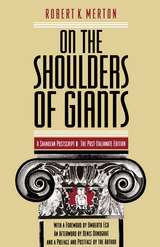 On the Shoulders of Giants: The Post-Italianate Edition
Robert K. Merton
University of Chicago Press, 1993 With playfulness and a large dose of wit, Robert Merton traces the origin of Newton's aphorism, "If I have seen farther, it is by standing on the shoulders of giants." Using as a model the discursive and digressive style of Sterne's Tristram Shandy, Merton presents a whimsical yet scholarly work which deals with the questions of creativity, tradition, plagiarism, the transmission of knowledge, and the concept of progress.
"This book is the delightful apotheosis of donmanship: Merton parodies scholarliness while being faultlessly scholarly; he scourges pedantry while brandishing his own abstruse learning on every page. The most recondite and obscure scholarly squabbles are transmuted into the material of comedy as the ostensible subject is shouldered to one side by yet another hobby horse from Merton's densely populated stable. He has created a jeu d'esprit which is profoundly suggestive both in detail and as a whole."—Sean French, Times Literary Supplement
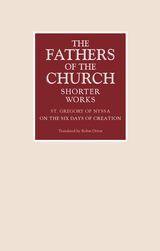 On the Six Days of Creation
St. Gregory of Nyssa
Catholic University of America Press, 2021 The first volume of our new series, Fathers of the Church: Shorter Works, will be available in the summer of 2021. This series, to be printed only in paperback format, will offer English translations of treatises, homilies, poems, and letters of the Church Fathers in slim, easily affordable volumes. In this way a multitude of important writings will become accessible to scholars and students as well as the reading public.
This is the first complete English translation of St. Gregory of Nyssa’s treatise On the Six Days of Creation (In Hexaemeron). It was probably written in 380-381, and is designed as both a defense and a critique of his recently deceased brother St. Basil’s better known homilies on the creation story as set out in the first chapter of Genesis. At the same time it incorporates Gregory’s own observations on the Genesis text, which reflect his desire to show the consistency between Scripture and the philosophy and natural science of his day
A notable feature is Gregory’s presentation of God’s creation of the world as what has been called a “substantification” of God’s own will, creatio ex Deo rather than creatio ex nihilo. Other ideas of his seem interestingly to foreshadow those of modern science, notably his challenge to the idea that matter is a primary ontological category and his theory that the world as we know it developed through a process of “sequence” (akolouthia) from an originally simultaneous creation of everything.
Gregory differs from Basil in maintaining that the “waters above the firmament” in Genesis 1 are spiritual rather than physical in nature. He uses a modified form of Aristotle’s theory of elements, together with some interesting observations on geography and meteorology, to construct a detailed and ingenious account of the “water cycle.” This description enables him to refute Basil’s notion that there needs to be an extra supply of physical water above the firmament so that the water lost from earthly seas and rivers through evaporation can be “topped up.”
On the Sleeve of the Visual: Race as Face Value
Alessandra Raengo
Dartmouth College Press, 2013 In this landmark work of critical theory, black studies, and visual culture studies, Alessandra Raengo boldly reads race as a theory of the image. By placing emphasis on the surface of the visual as the repository of its meaning, race presents the most enduring ontological approach to what images are, how they feel, and what they mean. Having established her theoretical concerns, the author’s eclectic readings of various artifacts of visual culture, fine arts, cinema, and rhetorical tropes provoke and destabilize readers’ visual comfort zone, forcing them to recognize the unstated racial aspects of viewing and the foundational role of race in informing the visual.
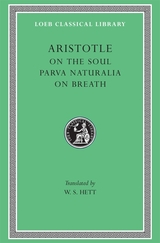 On the Soul. Parva Naturalia. On Breath
Aristotle
Harvard University Press Peripatetic works on the human body and soul.
Aristotle, great Greek philosopher, researcher, reasoner, and writer, born at Stagirus in 384 BC, was the son of a physician. He studied under Plato at Athens and taught there (367–347); subsequently he spent three years at the court of a former pupil in Asia Minor. After some time at Mitylene, in 343–342 he was appointed by King Philip of Macedon to be tutor of his teen-aged son Alexander. After Philip’s death in 336, Aristotle became head of his own school (of “Peripatetics”), the Lyceum at Athens. Because of anti-Macedonian feeling there after Alexander’s death in 323, he withdrew to Chalcis in Euboea, where he died in 322.
Nearly all the works Aristotle prepared for publication are lost; the priceless ones extant are lecture-materials, notes, and memoranda (some are spurious). They can be categorized as follows:
I Practical: Nicomachean Ethics; Great Ethics (Magna Moralia); Eudemian Ethics; Politics; Economics (on the good of the family); On Virtues and Vices.
II Logical: Categories; Analytics (Prior and Posterior); Interpretation; Refutations used by Sophists; Topica.
III Physical: Twenty-six works (some suspect) including astronomy, generation and destruction, the senses, memory, sleep, dreams, life, facts about animals, etc.
IV Metaphysics: on being as being.
V Art: Rhetoric and Poetics.
VI Other works including the Constitution of Athens; more works also of doubtful authorship.
VII Fragments of various works such as dialogues on philosophy and literature; and of treatises on rhetoric, politics, and metaphysics.
The Loeb Classical Library® edition of Aristotle is in twenty-three volumes.
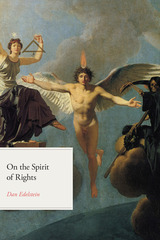 On the Spirit of Rights
Dan Edelstein
University of Chicago Press, 2018 By the end of the eighteenth century, politicians in America and France were invoking the natural rights of man to wrest sovereignty away from kings and lay down universal basic entitlements. Exactly how and when did “rights” come to justify such measures?
In On the Spirit of Rights, Dan Edelstein answers this question by examining the complex genealogy of the rights that regimes enshrined in the American and French Revolutions. With a lively attention to detail, he surveys a sprawling series of debates among rulers, jurists, philosophers, political reformers, writers, and others who were all engaged in laying the groundwork for our contemporary systems of constitutional governance. Every seemingly new claim about rights turns out to be a variation on a theme, as late medieval notions were subtly repeated and refined to yield the talk of “rights” we recognize today. From the Wars of Religion to the French Declaration of the Rights of Man and of the Citizen to the 1948 Universal Declaration of Human Rights, On the Spirit of Rights is a sweeping tour through centuries of European intellectual history and an essential guide to our ways of thinking about human rights today.
On the Street of Divine Love: New and Selected Poems
Barbara Hamby
University of Pittsburgh Press, 2014 Perhaps Paul Kareem Taylor said it best in his piece called On the Road Again: Barbara Hamby's American Odyssey: "Reading Barbara Hamby's poetry is like going on a road trip, one where the woman behind the wheel lets you ride shotgun as she speeds across the open highways of an America where drive-in movie theaters still show Janet Leigh films on Friday nights, hardware stores have not been driven out of business by soulless corporate titans, and where long poetic lines first introduced by Walt Whitman and resurrected by Ginsberg are pregnant with a thousand reasons to marvel at the world we inhabit."
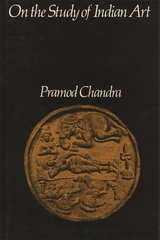 On the Study of Indian Art
Pramod Chandra
Harvard University Press, 1983 Serious study of the art of India began only in the nineteenth century. This small volume provides a masterly overview of the scholarship of the past century and a half.
Mr. Chandra's purpose is twofold: to help present–day students understand their scholarly heritage, and to encourage them to re-examine their own methods and assumptions. His histographical approach enables him to pay tribute to the great achievements of the pioneers in the field and also to notice the manner in which errors of fact and method have crept into some of the contemporary thinking and writing on the subject. Rather than attempt to discuss the writings of every scholar of note, he restricts himself to a few whose work, in his opinion, clearly represents the various stages of the development of the discipline. In analyzing their contributions, he concentrates on the broad methodological thrust of their work and not on the details of their conclusions.
The study of architecture is considered first, because it was regarded by the ancient Indians as the most important of the visual arts and was the earliest of the arts to receive careful, analytic treatment in modern times. Sculpture is taken up second, and last the study of Indian painting, the area in which the most remarkable progress has been made in the last twenty–five years. In the course of the discussion many topics of broad interest are touched upon, including the relation of art history to the other disciplines, problems presented by various methods of classification, iconography and iconology, the relevance of style, the meaning of form, and the connection between artists and patrons.
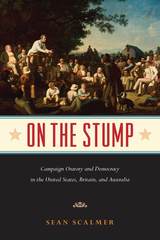 On the Stump: Campaign Oratory and Democracy in the United States, Britain, and Australia
Sean Scalmer
Temple University Press, 2017 "Stumping," or making political speeches in favor of a candidate, cause, or campaign has been around since before the 1800s, when speechmaking was frequently portrayed as delivered from the base of a tree. The practice, which has been strongly associated with the American frontier, British agitators, and colonial Australia, remains an effective component of contemporary democratic politics. In his engaging book On the Stump, Sean Scalmer provides the first comprehensive, transnational history of the "stump speech." He traces the development and transformation of campaign oratory, as well as how national elections and public life and culture have been shaped by debate over the past century. Scalmer presents an eloquent study of how "stumping" careers were made, sustained, remembered, and exploited, to capture the complex rhythms of political change over the years. On the Stump examines the distinctive dramatic and performative styles of celebrity orators including Davy Crockett, Henry Clay, and William Gladstone. Ultimately, Scalmer recovers the history of the stump speech and its historical significance in order to better understand how political change is forged.
On the Surface of Things: Images of the Extraordinary in Science
Felice C. Frankel and George M. Whitesides
Harvard University Press Using innovative photographic technology, Felice Frankel finds startling abstract beauty on the surfaces of objects all around us. Chemist George M. Whitesides explains each photograph, describing why and how each of these phenomena occur.
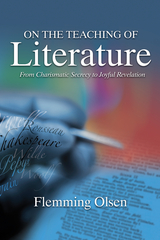 On the Teaching of Literature: From Charismatic Secrecy to Joyful Revelation
Flemming Olsen
Sussex Academic Press, 2022 Drawing on the author's teaching practice and experience, this book is based on the premise that reading and analysing literary texts are rewarding pursuits. The target group is grammar school pupils and students at colleges of education and universities. Pedagogic theories are dealt with only in so far as they are applicable to the teaching situation. After establishing the distinction between fiction, which demands 'a willing suspension of disbelief', and non-fiction, which is set in the universe of the pupil's experience, succeeding chapters set out the benefits for the teaching of literature -- namely, how it encompasses psychology, history, and aesthetics. It fulfils the Horatian demand 'profit and delight'. After addressing the pedagogic assets and liabilities of various theories of the concept of text, what lies at the heart of the book is how teachers tackle their role in guiding and inspiring without pontificating. The invitation to the student is to co-operate constructively, but not uncritically. Issues of interpretation and the passing on of interpretative paradigms are alerted to, which leads naturally on to the pedagogic challenge of explaining the potentialities of different genres, and the necessity of a firm grounding in technical terms like composition, style, theme, metaphor, etc. as didactic tools. A concluding chapter suggests criteria that may make value and evaluation rest on strong foundations in acknowledgement of the subjective elements inherent in 'the literary experience', namely to avoid making literary analysis a schematic formula and to ensure that it promotes the expansion of the student's humanistic horizon. This book is essential reading for all those involved in teaching Literature and Language.
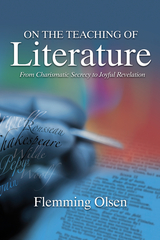 On the Teaching of Literature: From Charismatic Secrecy to Joyful Revelation
Flemming Olsen
Sussex Academic Press, 2022 Drawing on the author's teaching practice and experience, this book is based on the premise that reading and analysing literary texts are rewarding pursuits. The target group is grammar school pupils and students at colleges of education and universities. Pedagogic theories are dealt with only in so far as they are applicable to the teaching situation. After establishing the distinction between fiction, which demands 'a willing suspension of disbelief', and non-fiction, which is set in the universe of the pupil's experience, succeeding chapters set out the benefits for the teaching of literature -- namely, how it encompasses psychology, history, and aesthetics. It fulfils the Horatian demand 'profit and delight'. After addressing the pedagogic assets and liabilities of various theories of the concept of text, what lies at the heart of the book is how teachers tackle their role in guiding and inspiring without pontificating. The invitation to the student is to co-operate constructively, but not uncritically. Issues of interpretation and the passing on of interpretative paradigms are alerted to, which leads naturally on to the pedagogic challenge of explaining the potentialities of different genres, and the necessity of a firm grounding in technical terms like composition, style, theme, metaphor, etc. as didactic tools. A concluding chapter suggests criteria that may make value and evaluation rest on strong foundations in acknowledgement of the subjective elements inherent in 'the literary experience', namely to avoid making literary analysis a schematic formula and to ensure that it promotes the expansion of the student's humanistic horizon. This book is essential reading for all those involved in teaching Literature and Language.
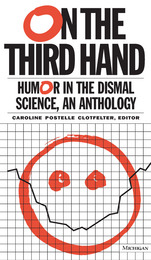 On the Third Hand: Wit and Humor in the Dismal Science
Caroline Postelle Clotfelter, Editor
University of Michigan Press, 1996 If ever you suspected that economic humor is an oxymoron, read on. This anthology, offering over a hundred selections of economic humor in the form of essays, fables, cartoons, verses, parodies, and epigrams drawn from works ancient and modern, will disabuse you of that notion by way of laughter. The contributors, about evenly divided between economists and noneconomists, share a common urge to poke fun at economics and its practitioners. Their styles and methods, however, range from kind and gentle to mordant and misanthropic; this is not surprising given the diversity of their professions: diplomat, playwright, printer's devil, publisher, columnist, physician, inventor, minister, corporate president, radio star, New York Stock Exchange member, and philosopher, to name but a few.
Bringing economic humor into the light of day, Caroline Clotfelter gathers her collection of materials into recognizable categories: economists as others see them, the language and methods of economics, Econ 101, micro- and macroeconomics, and basic economic models and ideas. Aiding and abetting her include such luminaries as John Stuart Mill, George Bernard Shaw, Mad Magazine, Stephen Leacock, Emily Dickinson, Rube Goldberg, Pogo, and John Kenneth Galbraith. As no other, this book will challenge economists to enjoy jokes at their own expense; noneconomists may have even less difficulty finding something funny in this most dismal of sciences.
Caroline Postelle Clotfelter, former Professor of Economics, Mercer University, is now retired.
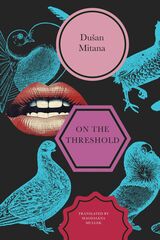 On the Threshold: Short Stories
Dušan Mitana
Seagull Books, 2024 Stories that entwine the mundane with the mystical, written by a cult favorite Slovakian writer.
An unhappily married woman is impregnated by her elderly neighbor who lives in a building across the street and with whom she has never had any physical contact. Just as his attention creates life within her, his own life waxes and wanes with her gaze and attention.
A man finds himself trapped in a pub on a sweltering afternoon after refusing to buy a beer with his cigarettes. Guarded by a vigilante bartender and his beer-obsessed patrons, his every attempt at escape is foiled until their life-giving elixir, the beer, runs out.
This collection introduces English-language readers to the work of Dušan Mitana, a cult figure in contemporary Central European literature. In Mitana’s stories, appearing in English for the first time, the rational and the irrational are indistinguishable. His tales infect a banal, quotidian realism with mystical and supernatural distortions. Tinged with Hitchcockian paranoia and full of unexpected turns, the seventeen stories collected here offer a glimpse into Mitana’s trademark absurdist style.
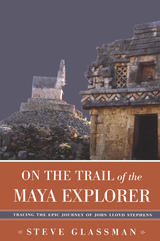 On the Trail of the Maya Explorer: Tracing the Epic Journey of John Lloyd Stephens
Steve Glassman
University of Alabama Press, 2003 A Mesoamerican travel book from two perspectives and two centuries. In 1839 John Lloyd Stephens, then 31 years old, and his traveling companion, artist Frederick Catherwood, disappeared into the vast rain forest of eastern Guatemala. They had heard rumors that remains of a civilization of incomparable artistic and cultural merit were moldering in the steamy lowland jungles. They braved Indian uprisings, road agents, heat, and biting insects to eventually encounter what is today known as the lost civilization of the Maya. In 1841 Stephens published Incidents of Travel in Central America, Chiapas, and Yucatan to instant acclaim with both American and international audiences. His conversational style was fresh and crisp and his subject matter, the search for lost cities on the Central American isthmus, was romantic and adventurous. Stephens's book has been characterized as the "great American nonfiction narrative of the 19th century." Indeed, what Stephens wrote about the Maya makes a major contribution to Maya studies. Steve Glassman retraces Stephens's route, visiting the same archaeological sites, towns, markets, and churches and meeting along the way the descendants of those people Stephens described, from mestizo en route to the cornfields to town elders welcoming the Norte Americanos. Glassman's work interlaces discussion of the history, natural environment, and architecture of the region with descriptions of the people who live and work there. Glassman compares his 20th-century experience with Stephens's 19th-century exploration, gazing in awe at the same monumental pyramids, eating similar foods, and avoiding the political clashes that disrupt the governments and economies of the area. Stephens's books are still widely available, but his importance to literary professionals has been overlooked. With this new travelogue, Glassman reaffirms Stephens's reputation and brings his work to wider critical and public attention.
|
|
